Ricoh RFAPL03 Color Copier User Manual 1 Short Confidential
Ricoh Company Ltd Color Copier 1 Short Confidential
Ricoh >
Contents
User Manual_1 (Short Confidential)
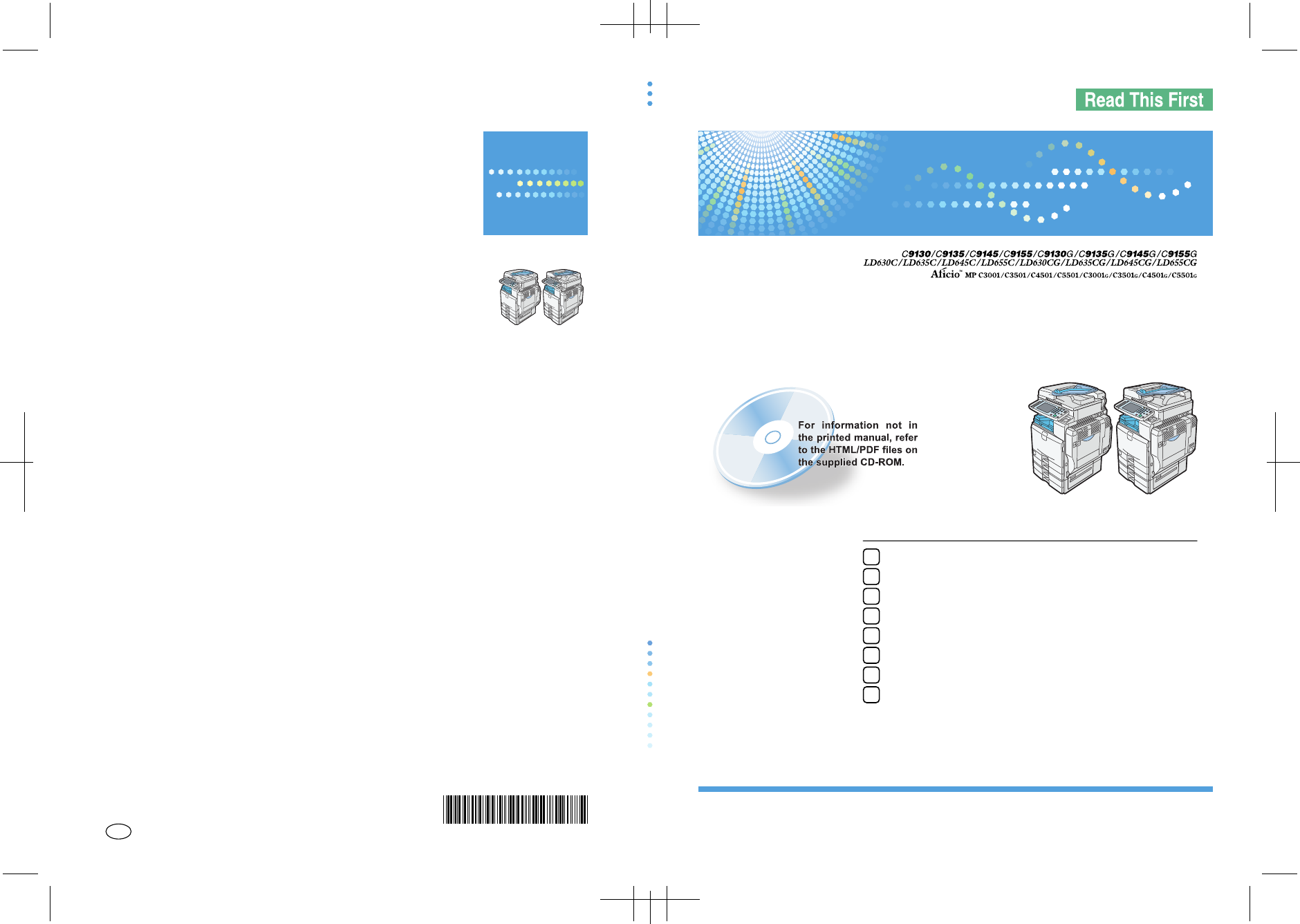
Operating Instructions About This Machine
Paper type: OK Prince Eco G100(55kg), Paper Thickness=0.08 mm // Pages in book=212 // Print scale=81%
Gap (when printed at 81% scale) = Pages in book × Paper thickness / 2 = 8.48 mm
Simple Search
Getting Started
Adding Paper
Adding Toner and Staples
Entering Text
On-screen Operating Instructions
Remarks
Appendix
1
2
3
4
5
6
7
8
Read this manual carefully before you use this machine and keep it handy for future reference. For safe and correct use, be sure to read the Safety
Information in this manual before using the machine.
About This Machine
Operating Instructions
About This Machine
Operating Instructions
Type for C9155G/LD655CG/Aficio MP C5501G
Type for C9145G/LD645CG/Aficio MP C4501G
Type for C9135G/LD635CG/Aficio MP C3501G
Type for C9155/LD655C/Aficio MP C5501
Type for C9145/LD645C/Aficio MP C4501
Type for C9135/LD635C/Aficio MP C3501
Type for C9130/LD630C/Aficio MP C3001
Type for C9130G/LD630CG/Aficio MP C3001G
Printed in China
D088-7603EN US D0887603
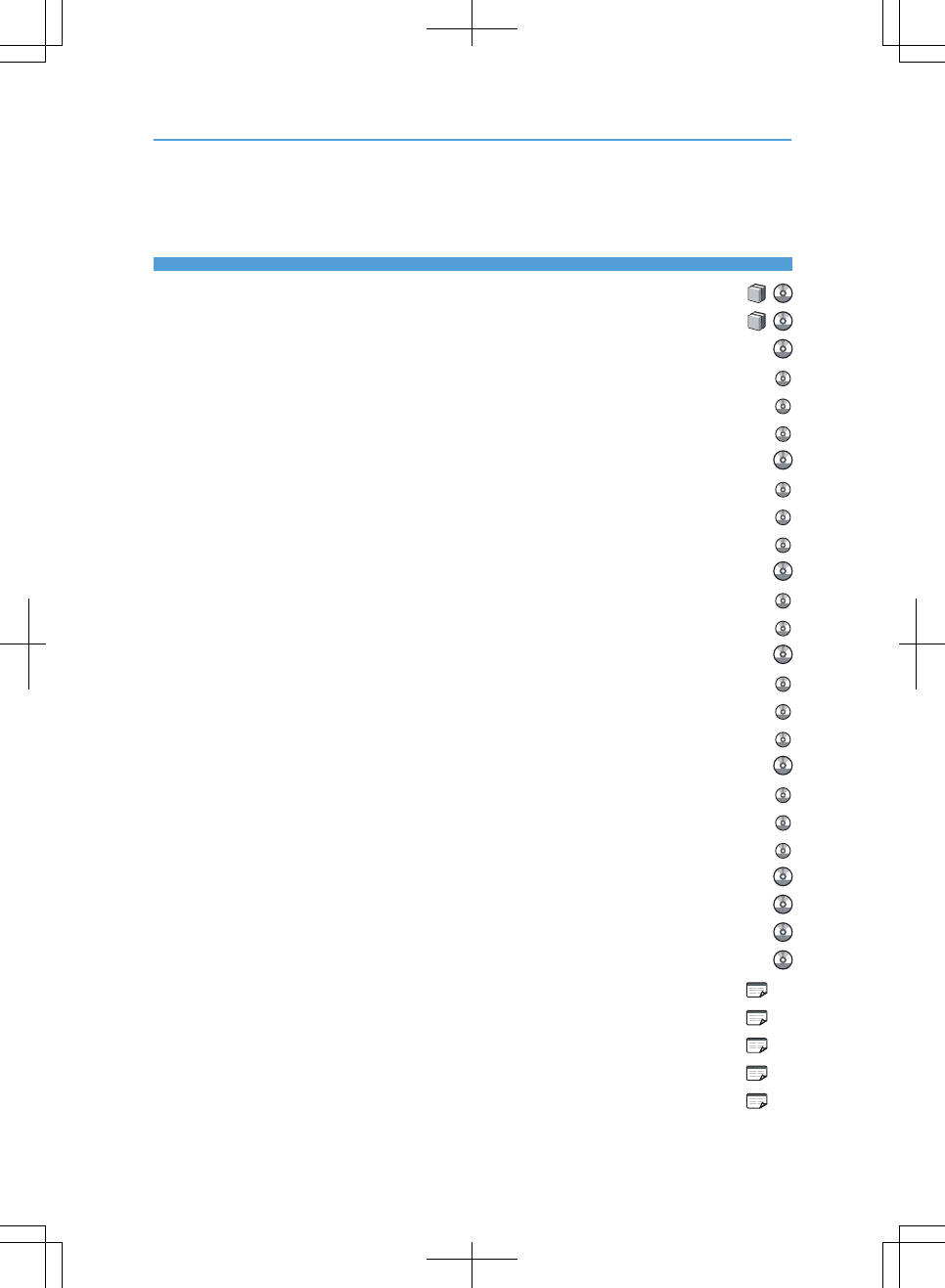
Documentation for This Machine
About This Machine (This manual)
Troubleshooting
Copy and Document Server Reference
Using the various copier functions
Using the Document Server functions
Changing the default settings of the copier and Document Server functions, and related information
Facsimile Reference
Sending and receiving faxes
Using the fax function through a computer
Changing the default settings of the fax function, and related information
Printer Reference
Installing the driver for the printer function
Changing the default settings of the printer function, and related information
Scanner Reference
Sending scan files
Storing scan files
Changing the default settings of the scanner function, and related information
Network and System Settings Reference
Connecting to a network
Registering addresses for fax/scanner functions
Changing the default settings of the system, and related information
Security Reference
PostScript 3 Supplement
VM Card Extended Feature Settings Device Reference
VM Card Extended Feature Settings Web Reference
Quick Reference Copy Guide
Quick Reference Printer Guide
Quick Reference Fax Guide
Quick Reference Scanner Guide
App2Me Start Guide
.........................................................................................................
........................................................................................................................................
.........................................................................................................
.............................................................................................................
........................................................................................................
.........
.........................................................................................................................................
.....................................................................................................................
...............................................................................................
...........................................
.............................................................................................................................................
................................................................................................
......................................
..........................................................................................................................................
.......................................................................................................................................
.........................................................................................................................................
...................................
......................................................................................................
............................................................................................................................
.....................................................................................
....................................................
..........................................................................................................................................
.................................................................................................................................
...............................................................................
..................................................................................
................................................................................................................
...............................................................................................................
...................................................................................................................
...........................................................................................................
..............................................................................................................................
1
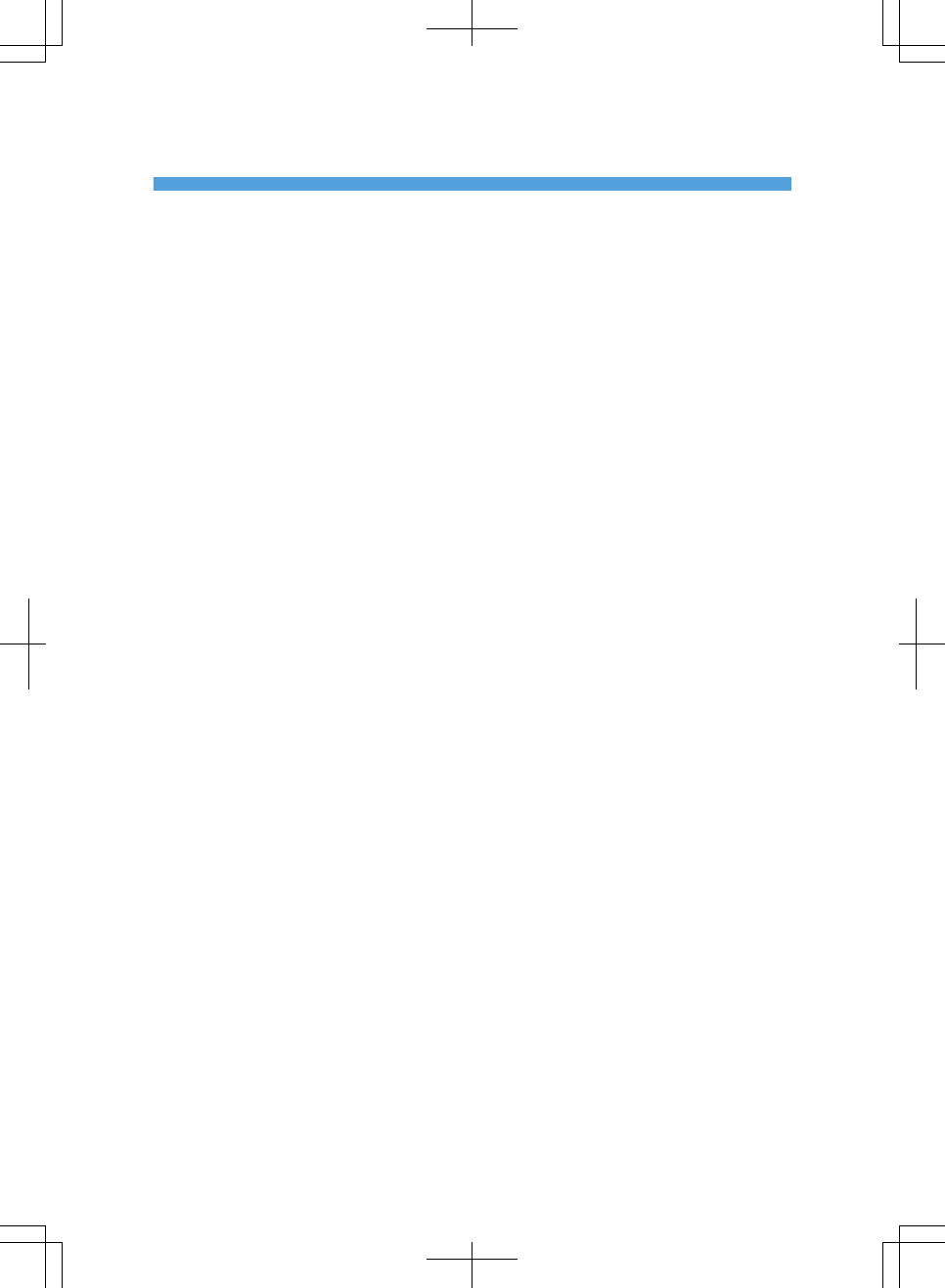
TABLE OF CONTENTS
Documentation for This Machine.......................................................................................................................1
Manuals for This Machine.................................................................................................................................8
Manuals List......................................................................................................................................................10
What You Can Do with This Machine............................................................................................................11
Using This Machine as a Copier................................................................................................................11
Using This Machine as a Printer..................................................................................................................12
Utilizing Stored Documents.........................................................................................................................12
Paperless Fax Transmission and Reception...............................................................................................13
Fax Transmission and Reception Over the Internet...................................................................................15
Using the Facsimile and the Scanner in a Network Environment.............................................................16
Administrating the Machine/Protecting Documents (Security Functions)...............................................16
Monitoring and Setting the Machine Via Computer.................................................................................17
Notice................................................................................................................................................................19
Important......................................................................................................................................................19
How to Read This Manual...............................................................................................................................20
Symbols........................................................................................................................................................20
Machine Types.............................................................................................................................................20
Names of Major Items.................................................................................................................................21
Notes............................................................................................................................................................21
Safety Information............................................................................................................................................22
Safety During Operation.............................................................................................................................22
Safety Precautions to Be Followed.............................................................................................................22
Safety Labels of This Machine.........................................................................................................................30
Positions of WARNING and CAUTION labels for Users of Type 1 and 2............................................30
Positions of WARNING and CAUTION labels for Users of Type 3 and 4............................................33
Power Switch Symbols.................................................................................................................................38
ENERGY STAR Program..................................................................................................................................39
Energy Saving Functions..................................................................................................................................40
Laws and Regulations......................................................................................................................................42
Legal Prohibition..........................................................................................................................................42
Laser Safety for Users of Type 1 and 2......................................................................................................42
Laser Safety for Users of Type 3 and 4......................................................................................................42
Notes to users in the United States of America..........................................................................................43
2
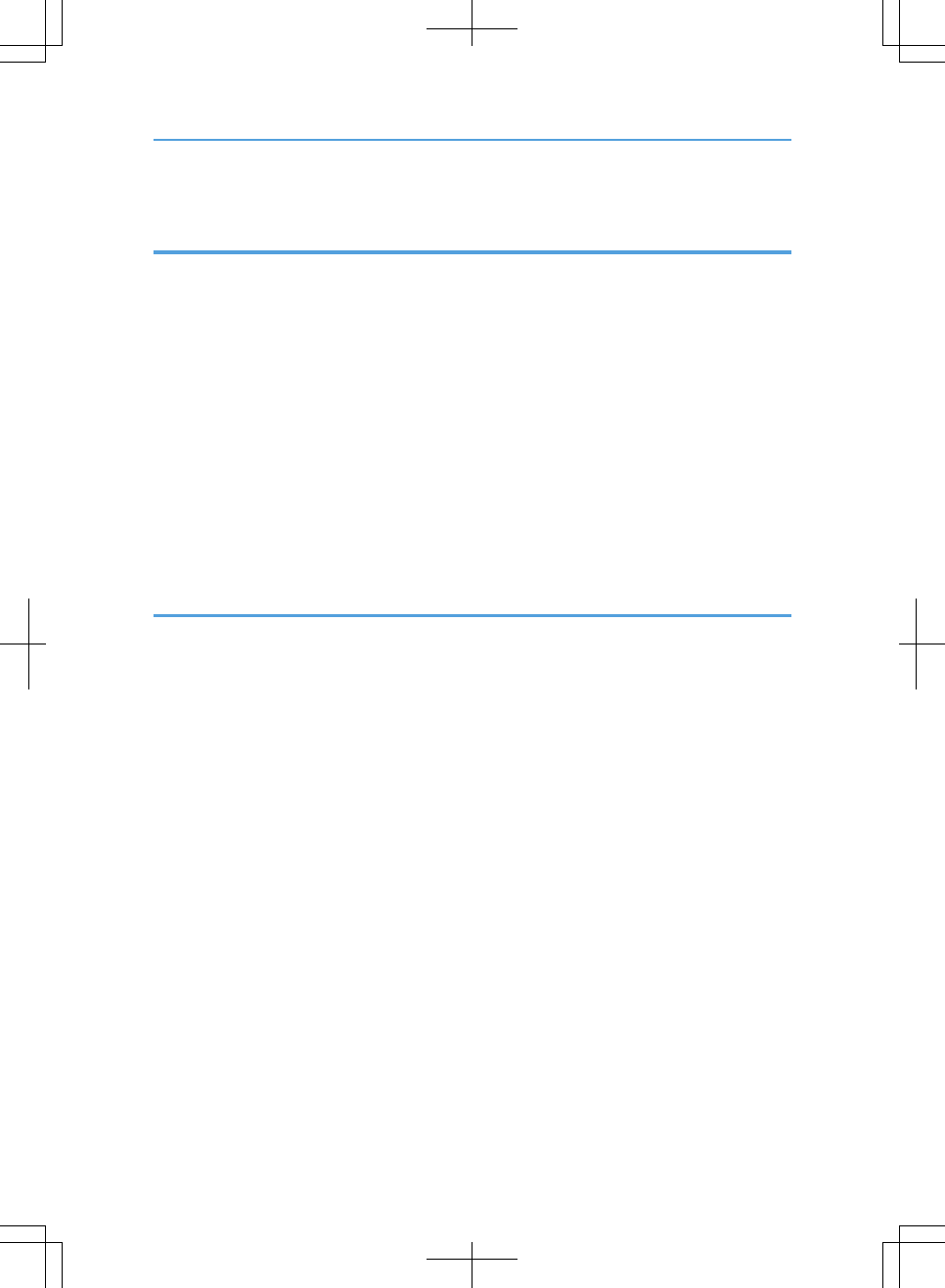
Important Safety Instructions.......................................................................................................................44
1. Simple Search
Searching by What You Want to Do.............................................................................................................47
I Want to Save my Paper Document!.........................................................................................................47
I Want to Convert Documents to Electronic Formats Easily!.....................................................................48
I Want to Register Destinations!..................................................................................................................49
I Want to Operate the Machine More Effectively!...................................................................................49
Searching by Keyword....................................................................................................................................51
Paper.............................................................................................................................................................51
Register/Change/Delete............................................................................................................................51
Color.............................................................................................................................................................52
Check............................................................................................................................................................52
Install.............................................................................................................................................................53
Envelope.......................................................................................................................................................53
2. Getting Started
Guide to Components......................................................................................................................................55
Guide to Components of Type 1 and 2.....................................................................................................55
Guide to Components of Type 3 and 4.....................................................................................................58
About the Guide on the Internal Tray 2 (Optional)..................................................................................61
Options.............................................................................................................................................................63
External Options..........................................................................................................................................63
Internal Options...........................................................................................................................................67
Control Panel....................................................................................................................................................68
Display Panel....................................................................................................................................................71
Simplified Display........................................................................................................................................71
Changing the Display Language................................................................................................................72
When the Authentication Screen is Displayed...............................................................................................74
User Code Authentication (Using the Control Panel)................................................................................74
User Code Authentication (Using a Printer Driver)....................................................................................75
Login (Using the Control Panel)..................................................................................................................75
Logout (Using the Control Panel)................................................................................................................76
Login (Using a Printer Driver)......................................................................................................................77
Login (Using Web Image Monitor)............................................................................................................77
3
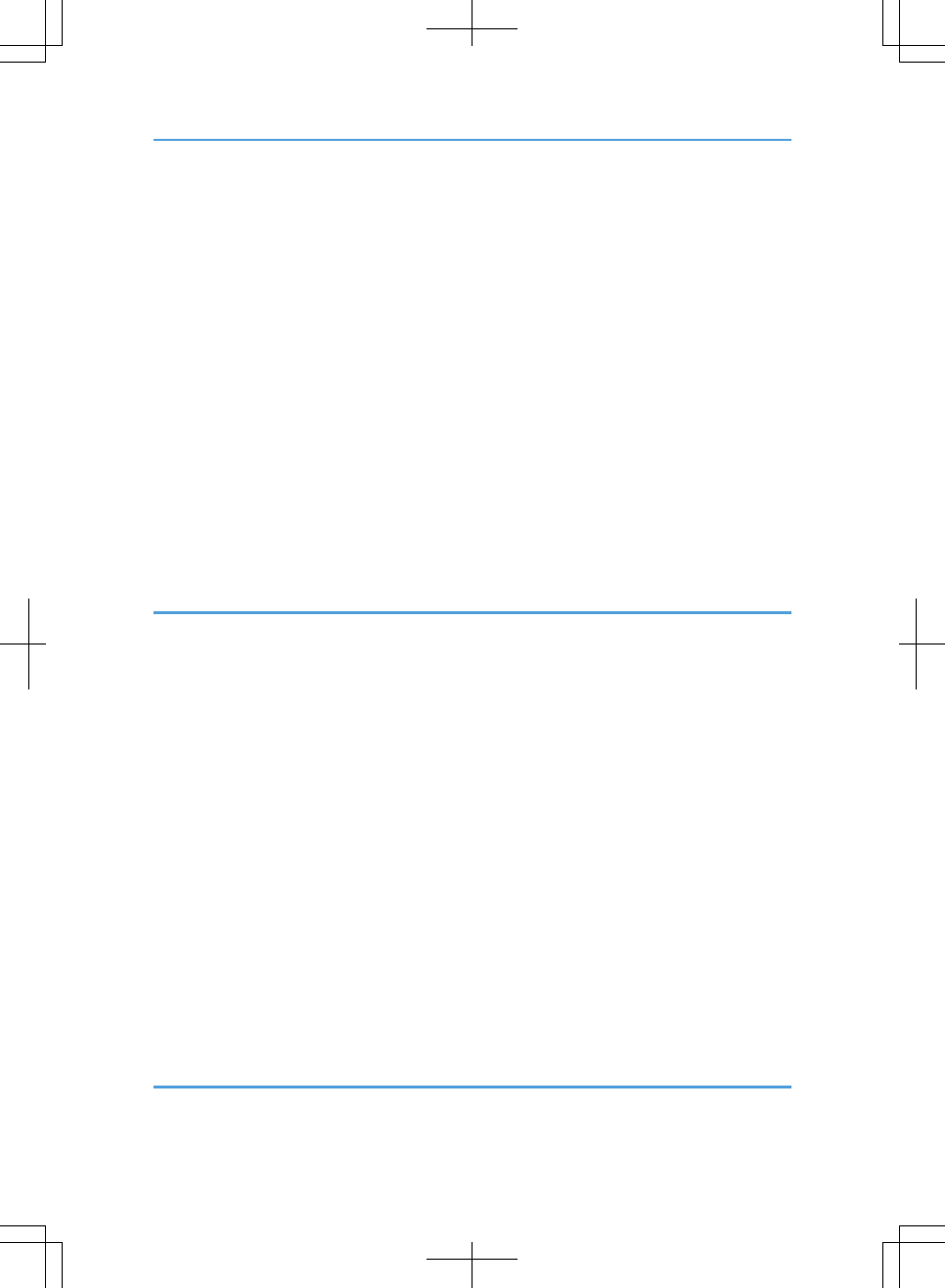
Logout (Using Web Image Monitor)..........................................................................................................77
Changing Modes.............................................................................................................................................78
System Reset.................................................................................................................................................79
Turning On/Off the Power..............................................................................................................................80
Turning On the Main Power........................................................................................................................80
Turning On the Power..................................................................................................................................81
Turning Off the Power..................................................................................................................................81
Turning Off the Main Power........................................................................................................................82
Saving Energy..............................................................................................................................................83
Downloading Utility Software.........................................................................................................................85
SmartDeviceMonitor for Admin..................................................................................................................85
DeskTopBinder.............................................................................................................................................85
SmartDeviceMonitor for Client...................................................................................................................86
Installing the Small Size Paper Tray................................................................................................................87
3. Adding Paper
Loading Paper..................................................................................................................................................91
Loading Paper into Trays 1 - 4...................................................................................................................91
Loading Paper into the Small Size Paper Tray..........................................................................................93
Loading Paper into Tray 3 (LCT).................................................................................................................94
Loading Paper into the Large Capacity Tray (LCT)...................................................................................95
Loading Orientation-Fixed Paper or Two-Sided Paper............................................................................97
Changing the Paper Size.................................................................................................................................99
Changing the Paper Size in Trays 2 - 4.....................................................................................................99
Changing the Paper Size in the Small Size Paper Tray.........................................................................102
Changing to a Size That Is Not Automatically Detected.......................................................................106
Changing Paper Thickness Settings..............................................................................................................109
Recommended Paper Sizes and Types........................................................................................................111
Envelopes.......................................................................................................................................................117
Thick Paper.....................................................................................................................................................119
Unusable Paper.............................................................................................................................................120
Paper Storage................................................................................................................................................122
4. Adding Toner and Staples
Adding Toner.................................................................................................................................................123
4
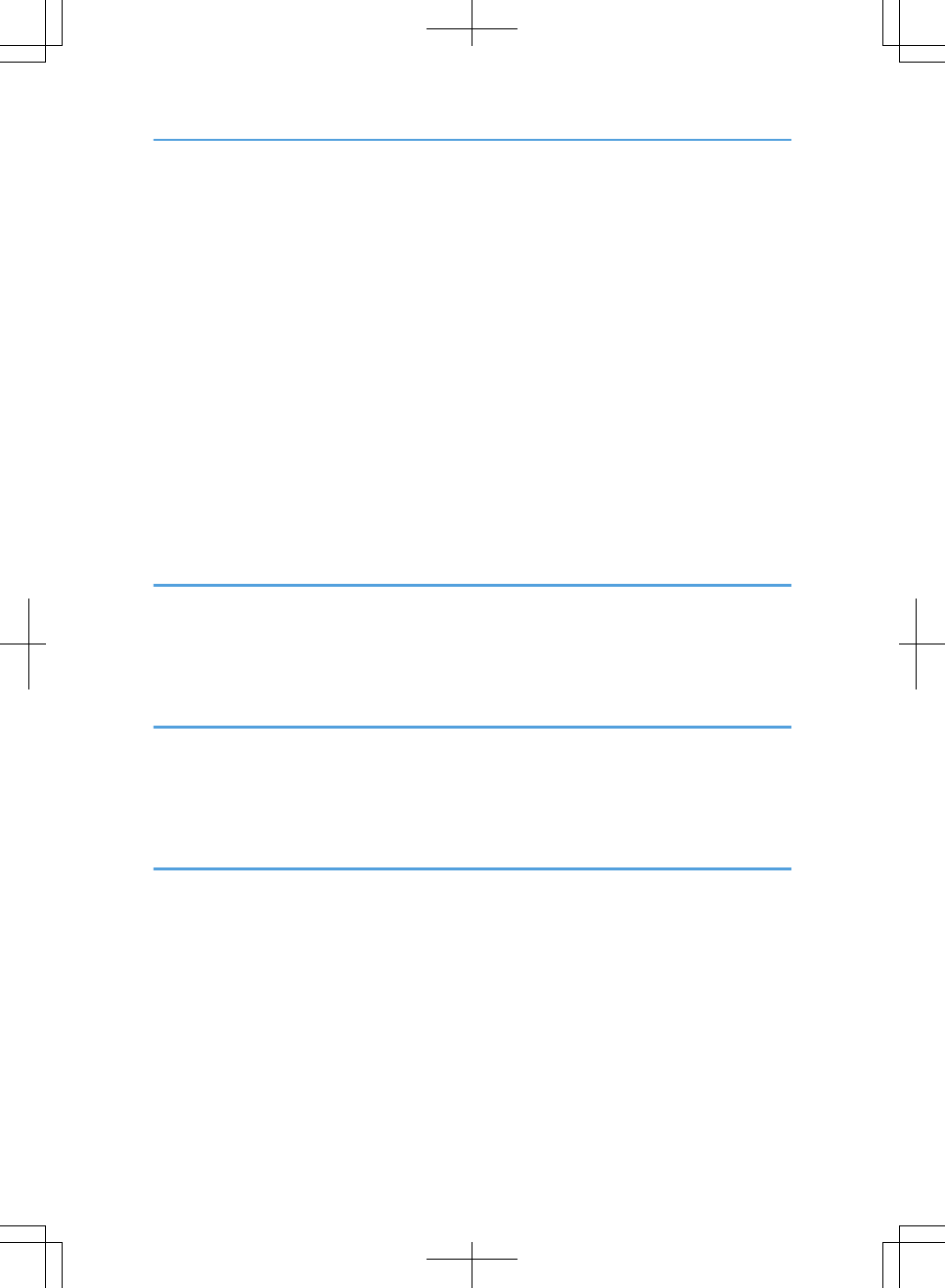
Replacing Toner.........................................................................................................................................124
Sending Faxes or Scanned Documents When Toner Has Run Out......................................................125
Used Toner.................................................................................................................................................125
Adding Staples...............................................................................................................................................127
Adding Staples to Finisher SR3050.........................................................................................................127
Adding Staples to Finisher SR790...........................................................................................................128
Adding Staples to Booklet Finisher SR3000...........................................................................................129
Adding Staples to Booklet Finisher SR3020...........................................................................................130
Adding Staples to Booklet Finisher SR3020 (Saddle Stitch).................................................................131
Adding Staples to Finisher SR3030.........................................................................................................132
Replacing the Stamp Cartridge....................................................................................................................134
Replacing the Stamp Cartridge of Type 1 and 2...................................................................................134
Replacing the Stamp Cartridge of Type 3 and 4...................................................................................136
5. Entering Text
Entering Text...................................................................................................................................................139
Available Characters................................................................................................................................139
Keys............................................................................................................................................................139
How to Enter Text......................................................................................................................................140
6. On-screen Operating Instructions
Formats of the Operating Instructions..........................................................................................................143
Reading the HTML Manuals on the CD-ROMs...........................................................................................144
Installing and Opening the HTML Manuals................................................................................................145
Reading the PDF Manuals on the CD-ROM................................................................................................147
7. Remarks
Dos and Don'ts...............................................................................................................................................149
Saving Color Copies.................................................................................................................................150
Where to Put Your Machine.........................................................................................................................151
Machine Environment...............................................................................................................................151
Power Connection.....................................................................................................................................154
Maintaining Your Machine...........................................................................................................................156
Cleaning the Machine..............................................................................................................................156
Cleaning the Exposure Glass...................................................................................................................156
Cleaning the Auto Document Feeder.......................................................................................................156
5
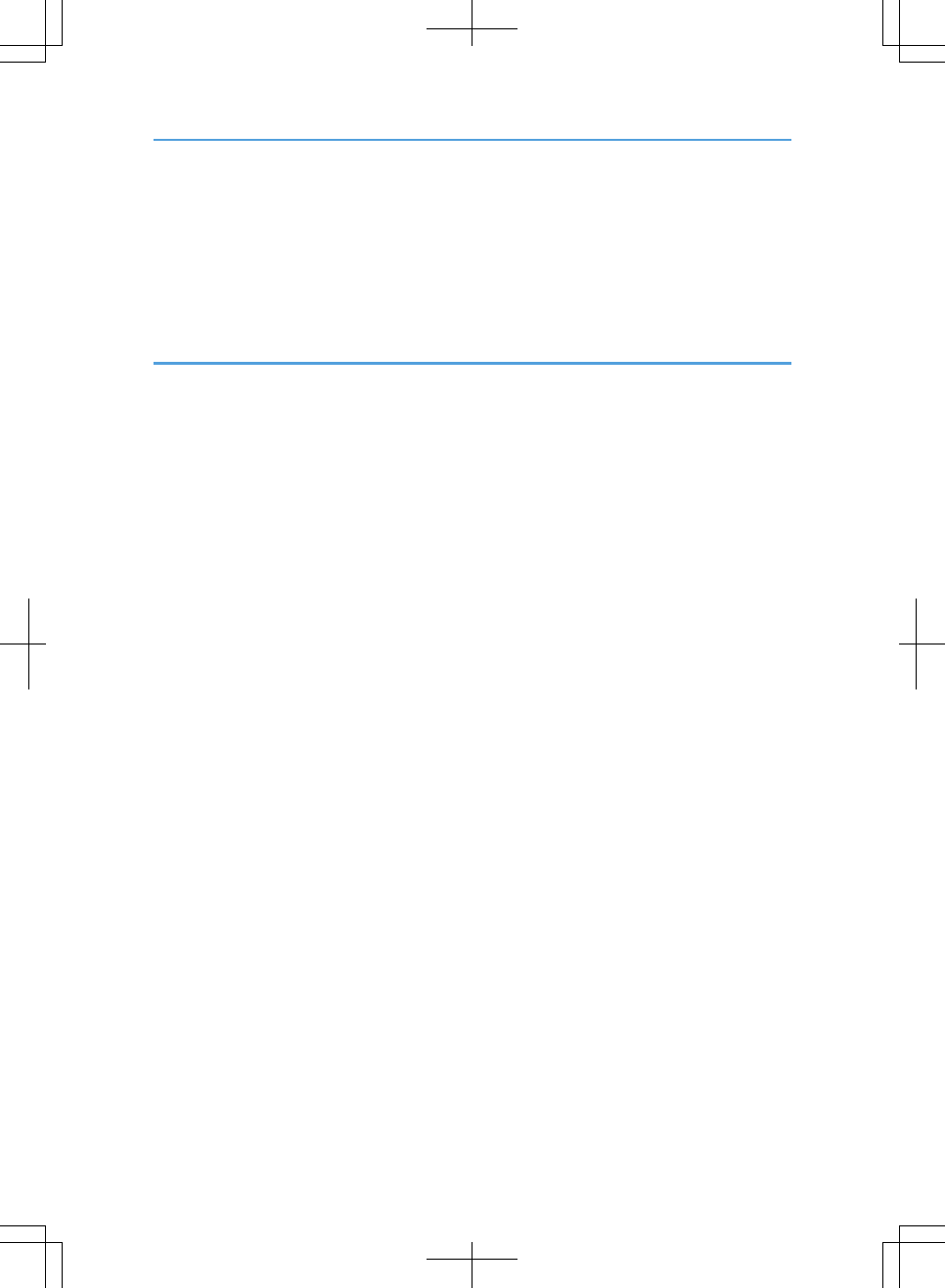
Cleaning the Dustproof Glass..................................................................................................................157
Cleaning the Power Cord Plug.................................................................................................................158
Backing Up Hard Disk Data.........................................................................................................................159
Counter...........................................................................................................................................................160
Inquiry.............................................................................................................................................................161
8. Appendix
Software and Utilities Included on the CD-ROM........................................................................................163
Viewing the Contents of the CD-ROM.....................................................................................................163
Printer Drivers for This Machine................................................................................................................163
TWAIN Driver............................................................................................................................................164
LAN-Fax Driver..........................................................................................................................................165
Specifications for the Main Unit...................................................................................................................167
For Users of Type 1 and 2........................................................................................................................167
For Users of Type 3 and 4........................................................................................................................171
Auto Document Feeder for Type 1 and 2...............................................................................................175
Auto Document Feeder for Type 3 and 4...............................................................................................176
Document Server.......................................................................................................................................176
Specifications for Finisher SR790 (1000-sheet) (Optional)......................................................................177
Finisher Upper Tray...................................................................................................................................177
Finisher Shift Tray.......................................................................................................................................177
Specifications for Finisher SR3030 (3000-sheet) (Optional)....................................................................179
Finisher Upper Tray...................................................................................................................................179
Finisher Shift Tray.......................................................................................................................................179
Specifications for Finisher SR3050 (500-sheet) (Optional)......................................................................181
Specifications for Booklet Finisher SR3020 (2000-sheet-Booklet) (Optional)........................................183
Finisher Upper Tray...................................................................................................................................183
Finisher Shift Tray.......................................................................................................................................183
Finisher Booklet Tray.................................................................................................................................184
Specifications for Booklet Finisher SR3000 (1000-sheet-Booklet) (Optional)........................................186
Finisher Upper Tray...................................................................................................................................186
Finisher Shift Tray.......................................................................................................................................186
Finisher Booklet Tray.................................................................................................................................187
Specifications for Punch Unit (Finisher SR3030, Booklet Finisher SR3020) (Optional)..........................189
6
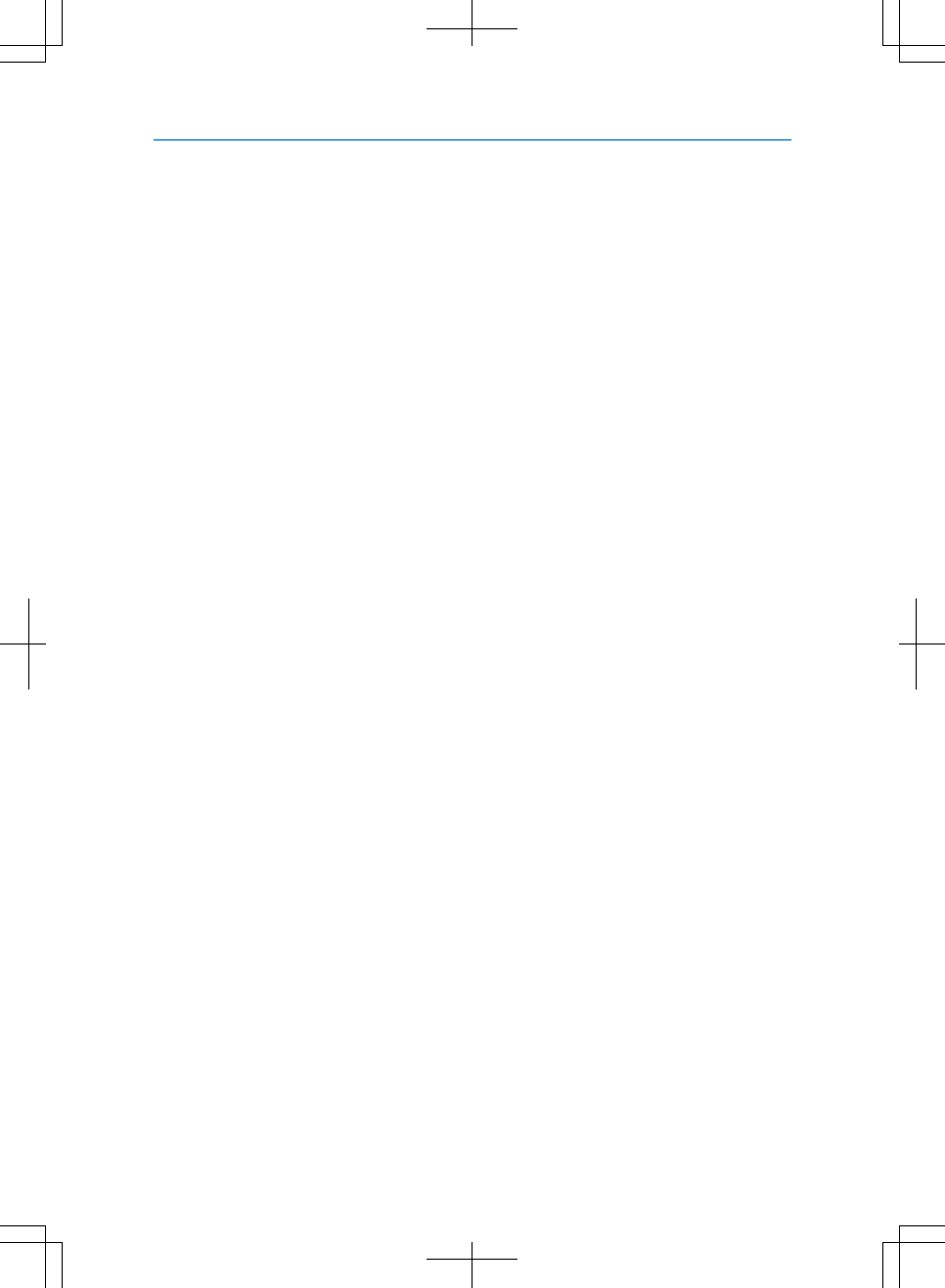
Specifications for Punch Unit (Booklet Finisher SR3000) (Optional)........................................................190
Specifications for Lower Paper Tray (Optional)..........................................................................................191
Specifications for Lower Paper Trays (Optional)........................................................................................192
Specifications for the Small Size Paper Tray (Optional)............................................................................193
Specifications for Tray 3 (LCT) (Optional)...................................................................................................194
Specifications for Large Capacity Tray (LCT) (Optional)...........................................................................195
Specifications for Bridge Unit (Optional).....................................................................................................196
Specifications for Internal Tray 2 (Optional)...............................................................................................197
Specifications for Internal Shift Tray (Optional)..........................................................................................198
Specifications for External Tray (Optional).................................................................................................199
Specifications for IEEE 1284 Interface Board (Optional)..........................................................................200
Specifications for Wireless LAN Board (Optional).....................................................................................201
Specifications for Bluetooth Interface Unit (Optional)................................................................................202
Specifications for Gigabit Ethernet (Optional)............................................................................................203
Trademarks.....................................................................................................................................................204
INDEX...........................................................................................................................................................207
7
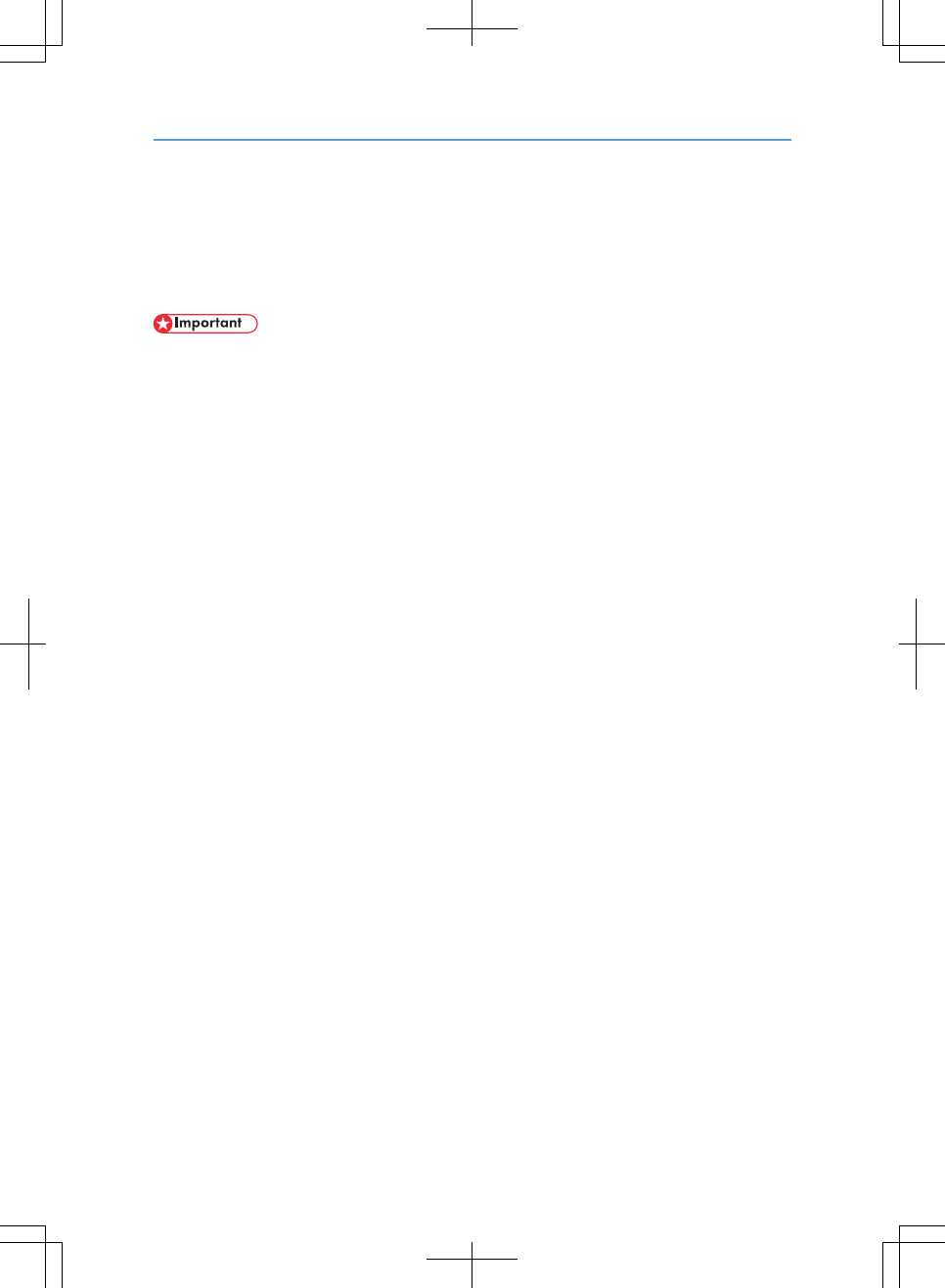
Manuals for This Machine
Read this manual carefully before you use this machine.
Refer to the manuals that are relevant to what you want to do with the machine.
• Media differ according to manual.
• The printed and electronic versions of a manual have the same contents.
• Adobe Acrobat Reader/Adobe Reader must be installed in order to view the manuals as PDF files.
• A Web browser must be installed in order to view the html manuals.
About This Machine
Before using the machine, be sure to read the section of this manual entitled Safety Information.
This manual introduces the machine's various functions. It also explains the control panel, preparation
procedures for using the machine, how to enter text, how to install the CD-ROMs provided, and how
to replace paper, toner, staples, and other consumables.
Troubleshooting
Provides a guide for resolving common usage-related problems.
Copy and Document Server Reference
Explains Copier and Document Server functions and operations. Also refer to this manual for
explanations on how to place originals.
Facsimile Reference
Explains Facsimile functions and operations.
Printer Reference
Explains Printer functions and operations.
Scanner Reference
Explains Scanner functions and operations.
Network and System Settings Reference
Explains how to connect the machine to a network, configure and operate the machine in a network
environment, and use the software provided. Also explains how to change User Tools settings and
how to register information in the Address Book.
Security Reference
This manual is for administrators of the machine. It explains security functions that you can use to
prevent unauthorized use of the machine, data tampering, or information leakage. For enhanced
security, we recommend that you first make the following settings:
• Install the Device Certificate.
• Enable SSL (Secure Sockets Layer) Encryption.
8
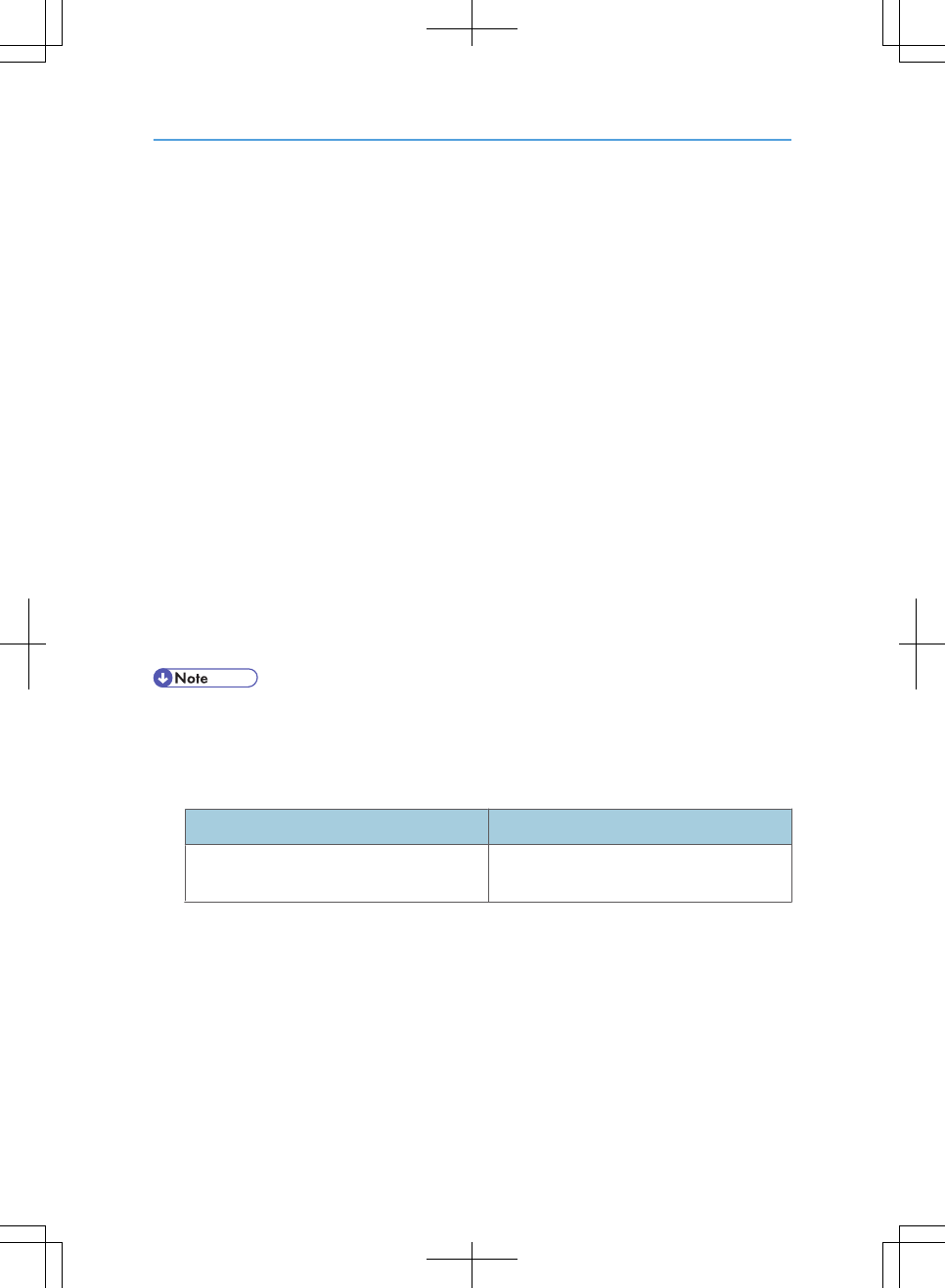
• Change the user name and password of the administrator using Web Image Monitor.
For details, see “Setting up the Machine”, Security Reference.
Be sure to read this manual when setting the enhanced security functions, or user and administrator
authentication.
PostScript 3 Supplement
Explains how to set up and use PostScript 3.
VM Card Extended Feature Settings Device Reference
Explains how to set up the extended features settings with the machine.
VM Card Extended Feature Settings Web Reference
Explains how to set up the extended features settings using Web Image Monitor.
Other manuals
• UNIX Supplement
• Quick Reference Copy Guide
• Quick Reference Printer Guide
• Quick Reference Fax Guide
• Quick Reference Scanner Guide
• App2Me Start Guide
• Manuals provided are specific to machine types.
• For “UNIX Supplement”, please visit our Web site or consult an authorized dealer. This manual
includes descriptions of functions and settings that might not be available on this machine.
• The following software products are referred to using general names:
Product name General name
ScanRouter EX Professional *1 and ScanRouter
EX Enterprise *1
the ScanRouter delivery software
*1 Optional
9
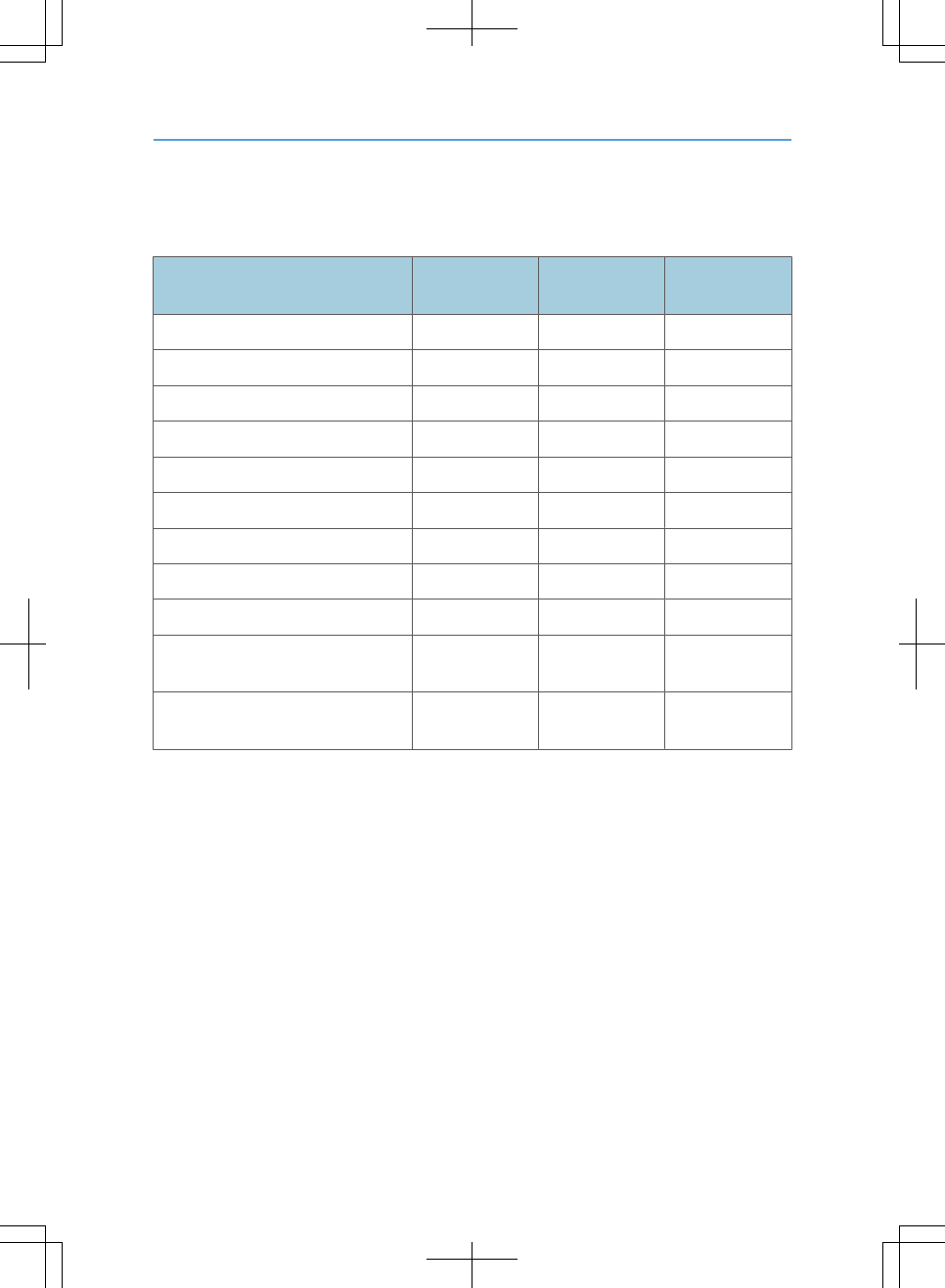
Manuals List
Manual Name Printed Manuals
Provided
HTML Manuals
Provided
PDF Manuals
Provided
About This Machine Yes Yes Yes
Troubleshooting Yes Yes Yes
Copy and Document Server Reference No Yes Yes
Facsimile Reference No Yes Yes
Printer Reference No Yes Yes
Scanner Reference No Yes Yes
Network and System Settings Reference No Yes Yes
Security Reference No Yes Yes
PostScript 3 Supplement No Yes Yes
VM Card Extended Feature Settings
Device Reference No Yes Yes
VM Card Extended Feature Settings
Web Reference No Yes Yes
10
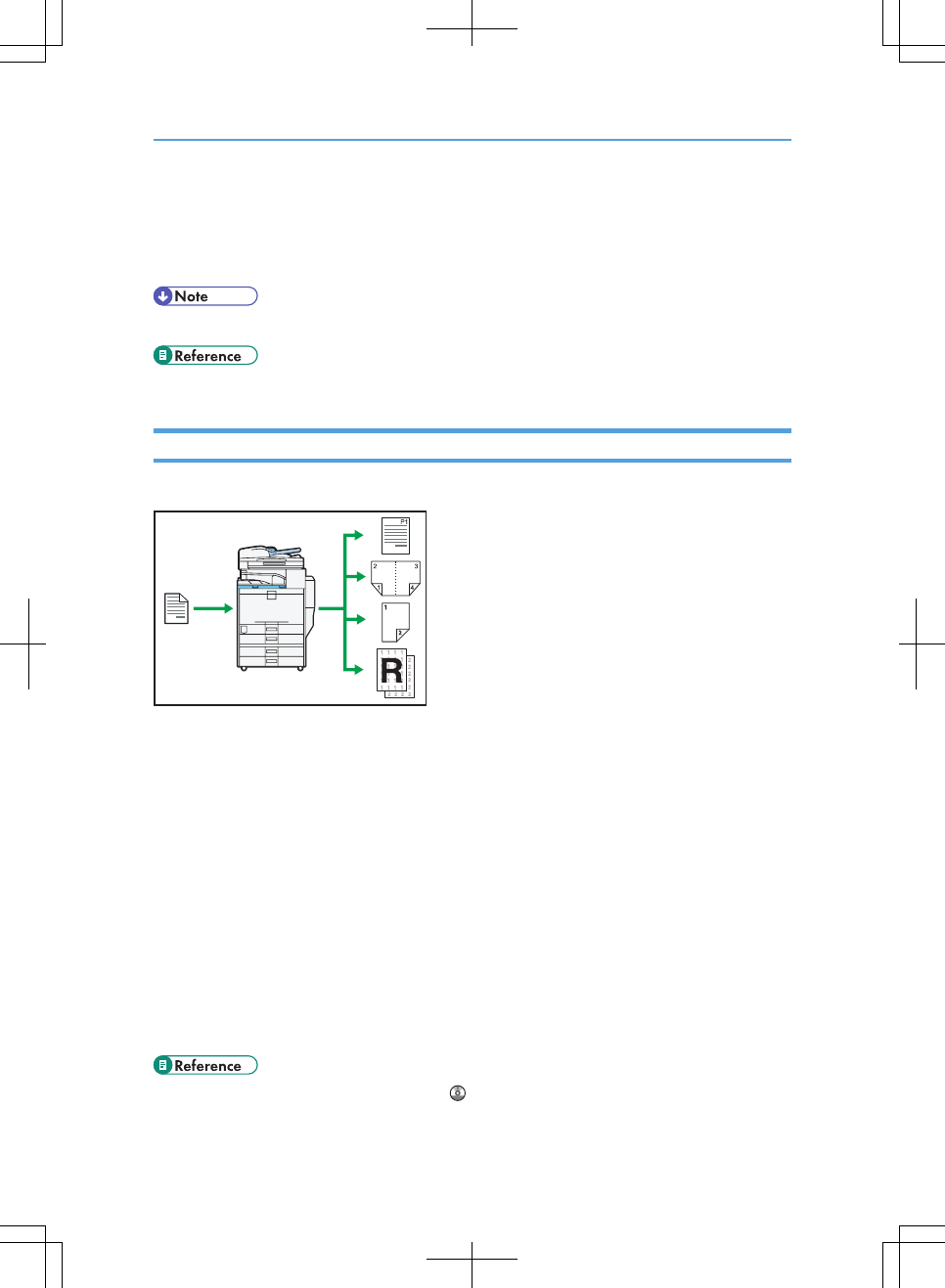
What You Can Do with This Machine
This section introduces the features of this machine.
• For details about options, see “Options”.
• p.63 "Options"
Using This Machine as a Copier
You can make copies of originals.
CAS004
• You can make copies in full color. You can switch the color copy mode depending on the type of
originals used and the desired finish.
• You can print stamps on copies. Stamps can include background numbers, scanned images, dates,
and page numbers.
• You can adjust the color tones and image quality of your copies.
• You can reduce or enlarge the copy image. With Auto Reduce / Enlarge, the machine automatically
detects the original size, and then selects an appropriate reproduction ratio based on the paper size
you select. If the orientation in which your original is placed is different from that of the paper you are
copying onto, the machine rotates the original image by 90 degrees and fits it on the copy paper.
• Copier functions such as Duplex, Combine, Booklet, and Magazine allow you to save on paper by
copying multiple pages onto single sheets.
• You can copy onto various types of paper such as envelopes and OHP transparencies.
• The optional finisher allows you to sort, staple, and punch holes in your copies.
• See Copy and Document Server Reference .
11
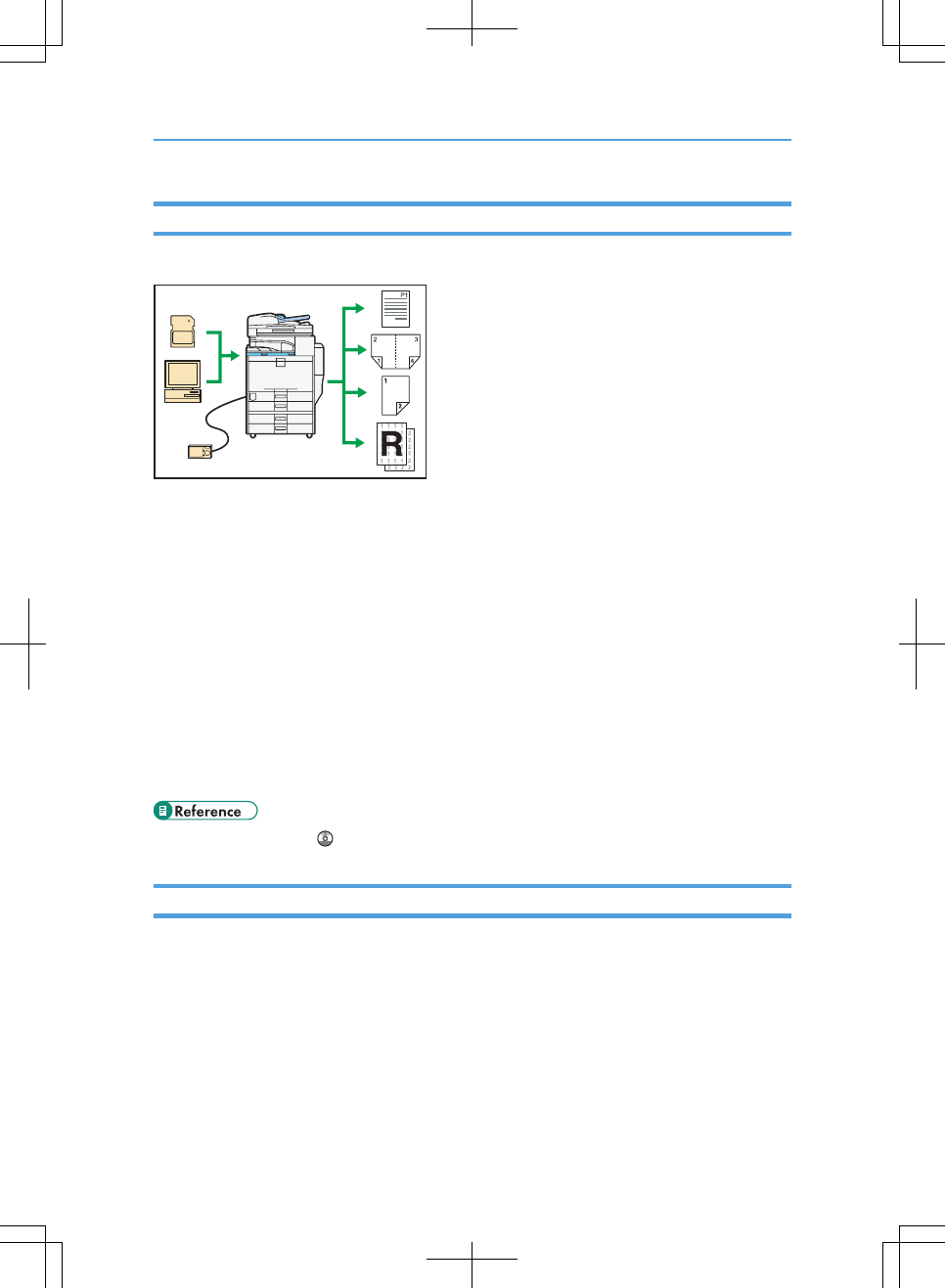
Using This Machine as a Printer
You can print documents created in applications.
CAS005
• This machine supports network and local connections.
• If the optional media slot or the optional PostScript 3 unit is installed, you can send PDF files directly
to the machine for printing, without having to open a PDF application.
• You can print or delete print jobs stored on the machine's hard disk, which have been previously sent
from computers using the printer driver. The following types of print jobs can be selected: Sample
Print, Locked Print, Hold Print, and Stored Print.
• The optional finisher allows you to collate, staple, and punch holes in your prints.
• If the optional PictBridge card is installed, you can connect a PictBridge-compatible digital camera
to this machine using a USB cable. This allows you to print the photographs stored on the camera
using the camera's own interface.
• If the optional media slot is installed, you can print files stored on a removable memory device and
specify print conditions such as color mode and print size.
• See Printer Reference .
Utilizing Stored Documents
You can store files scanned in copier, printer, or scanner mode on the machine's hard disk. With Web
Image Monitor, you can use your computer to search for, view, print, delete, and send stored files via the
network. You can also change print settings and print multiple documents (Document Server).
12
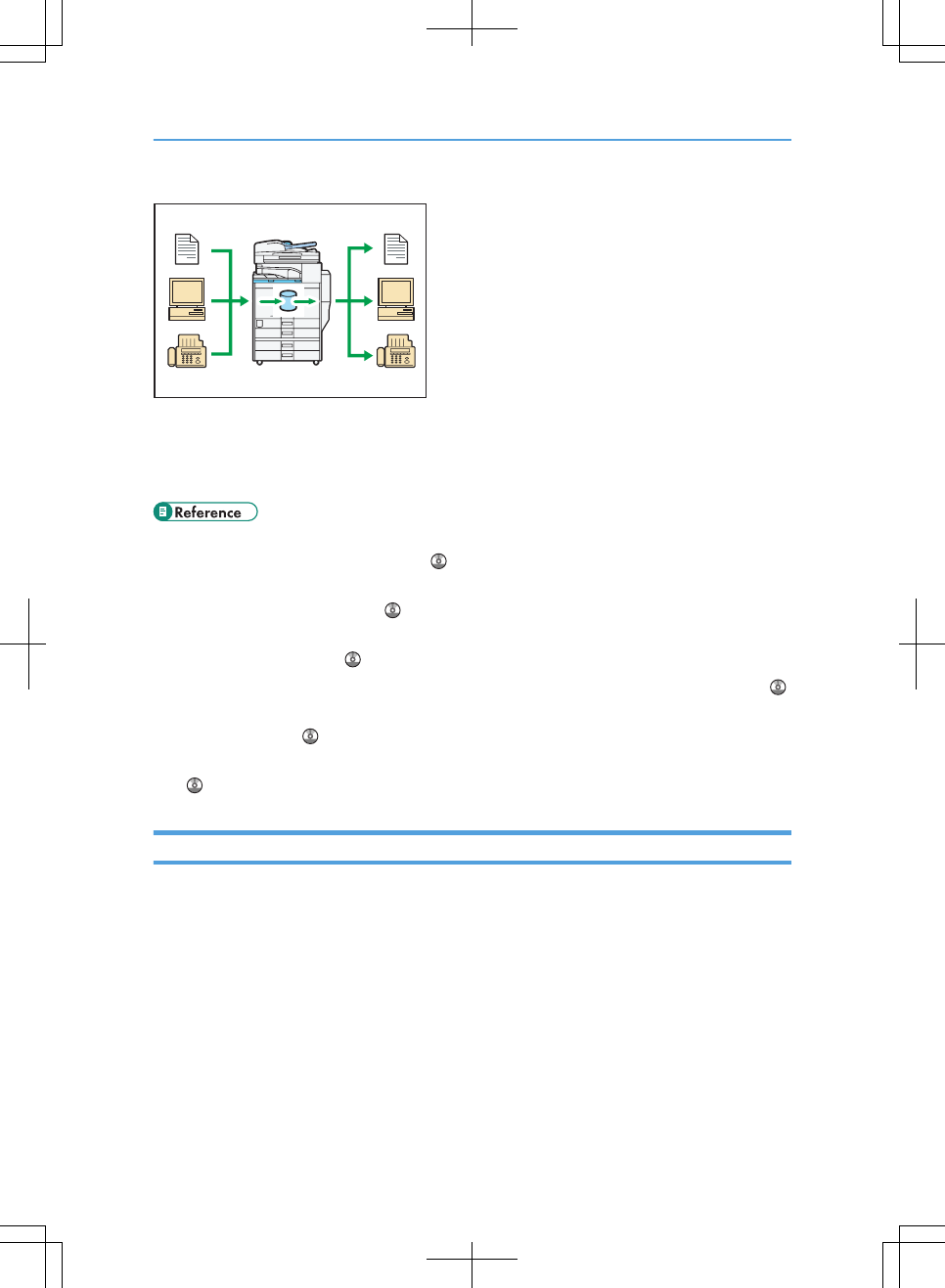
CAS006
• You can retrieve stored documents scanned in scanner mode.
• Using the file format converter (optional), you can download documents stored in copier, Document
Server, or printer mode to your computer.
• For details about machine's settings, see “Network Settings Required to Use Document Server”,
Network and System Settings Reference .
• For details about Document Server in copier mode, see “Storing Data in the Document Server”, Copy
and Document Server Reference .
• For details about Document Server in printer mode, see “Saving and Printing Using the Document
Server”, Printer Reference .
• For details about Document Server in fax mode, see “Storing a Document”, Facsimile Reference .
• For details about Document Server in scanner mode, see “Storing Files Using the Scanner Function”,
Scanner Reference .
• For details about Document Server, see “Document Server”, Copy and Document Server Reference
.
Paperless Fax Transmission and Reception
You can send and receive fax messages without printing them.
Reception
You can store received fax documents in electronic format without printing it onto paper.
13
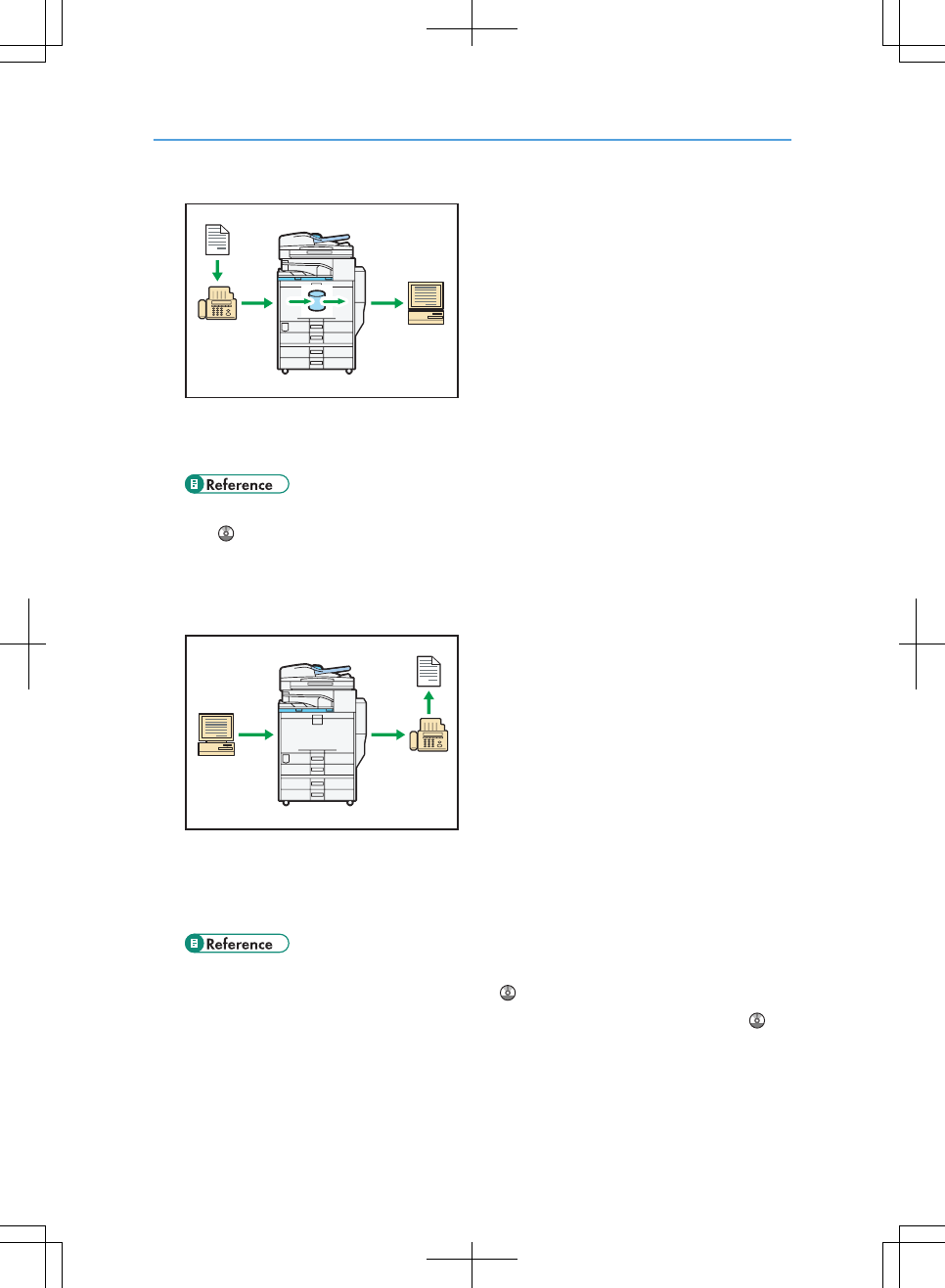
CAS007
You can use Web Image Monitor to check, print, delete, retrieve, or download documents using your
computer (Storing received documents).
• See “Confirming/Printing/Deleting Received and Stored Documents”, Facsimile Reference
.
Transmission
You can send a fax from your computer over the network (Ethernet or wireless LAN) to this machine,
which then forwards the fax via its telephone connection (LAN-Fax).
CAS008
• To send a fax, print from the Windows application you are working with, select LAN-Fax as the
printer, and then specify the destination.
• You can also check the sent image data.
• For details about the machine's settings, see “Network Settings Required to Use the Printer/LAN-
Fax”, Network and System Settings Reference .
• For details about how to use the function, see “Fax via Computer”, Facsimile Reference .
14
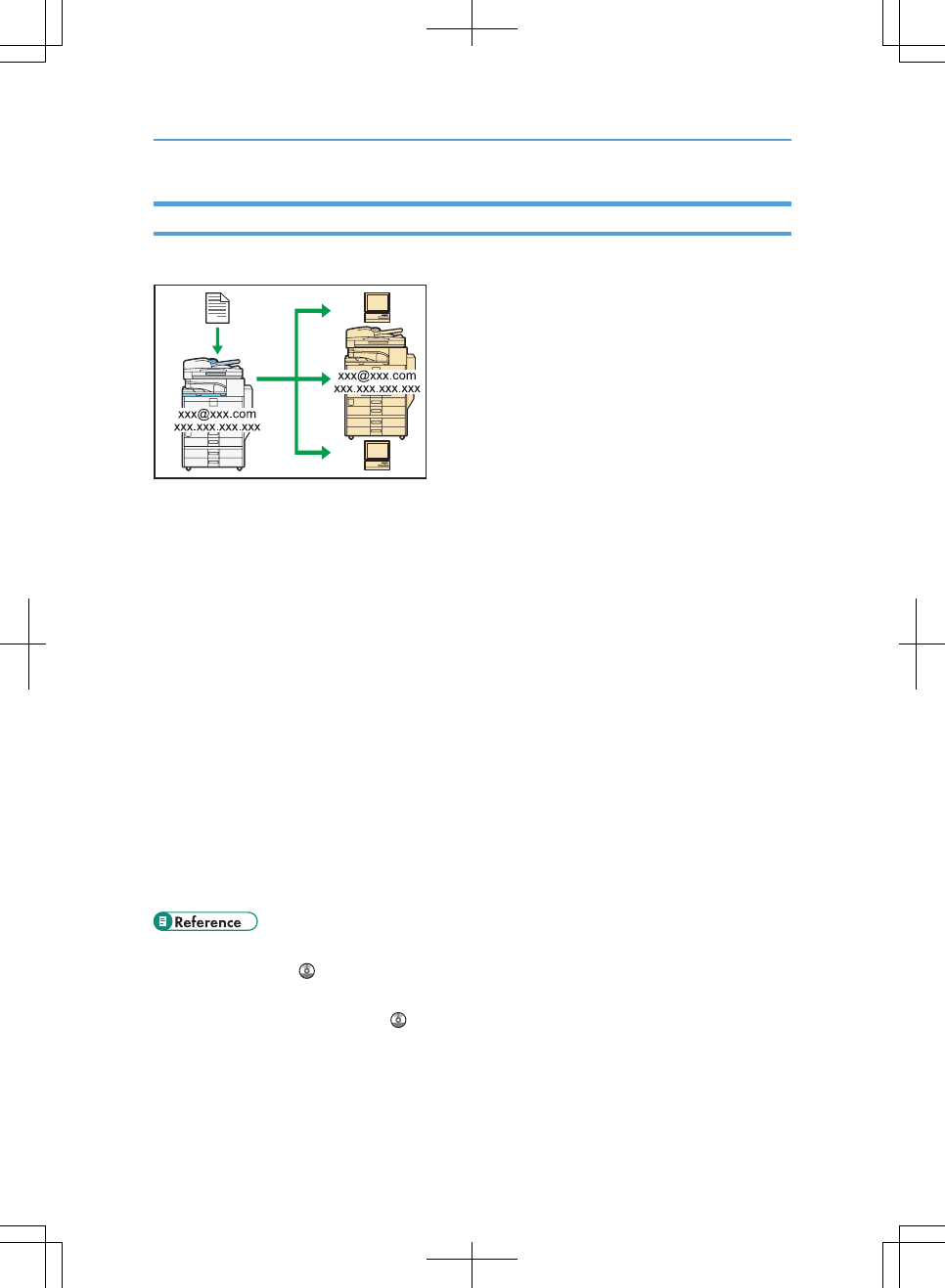
Fax Transmission and Reception Over the Internet
You can send and receive faxes over your LAN and the Internet.
CAS009
E-mail Transmission
This machine converts scanned document images to e-mail format, and transmits and receives this
data over the Internet.
• To send a document, specify an e-mail address instead of dialing the destination telephone
number (Internet Fax and e-mail transmission).
• This machine can receive e-mail messages via Internet Fax or from computers (Internet Fax
Reception and Mail to Print).
• Internet Fax compatible machines and computers that have e-mail addresses can receive e-mail
messages via Internet Fax.
IP-Fax
The IP-Fax function sends or receives documents between two facsimiles directly via a TCP/IP network.
• To send a document, specify an IP address or host name instead of a fax number (IP-Fax
Transmission).
• This machine can receive documents sent via Internet Fax (IP-Fax Reception).
• Using a VoIP gateway, this machine can send to G3 facsimiles connected to the public switched
telephone network (PSTN).
• For details about settings, see “Network Settings Required to Use Internet Fax”, Network and System
Settings Reference .
• For details about how to transmit and receive documents over the Internet, see “Transmission” and
“Reception”, Facsimile Reference .
15
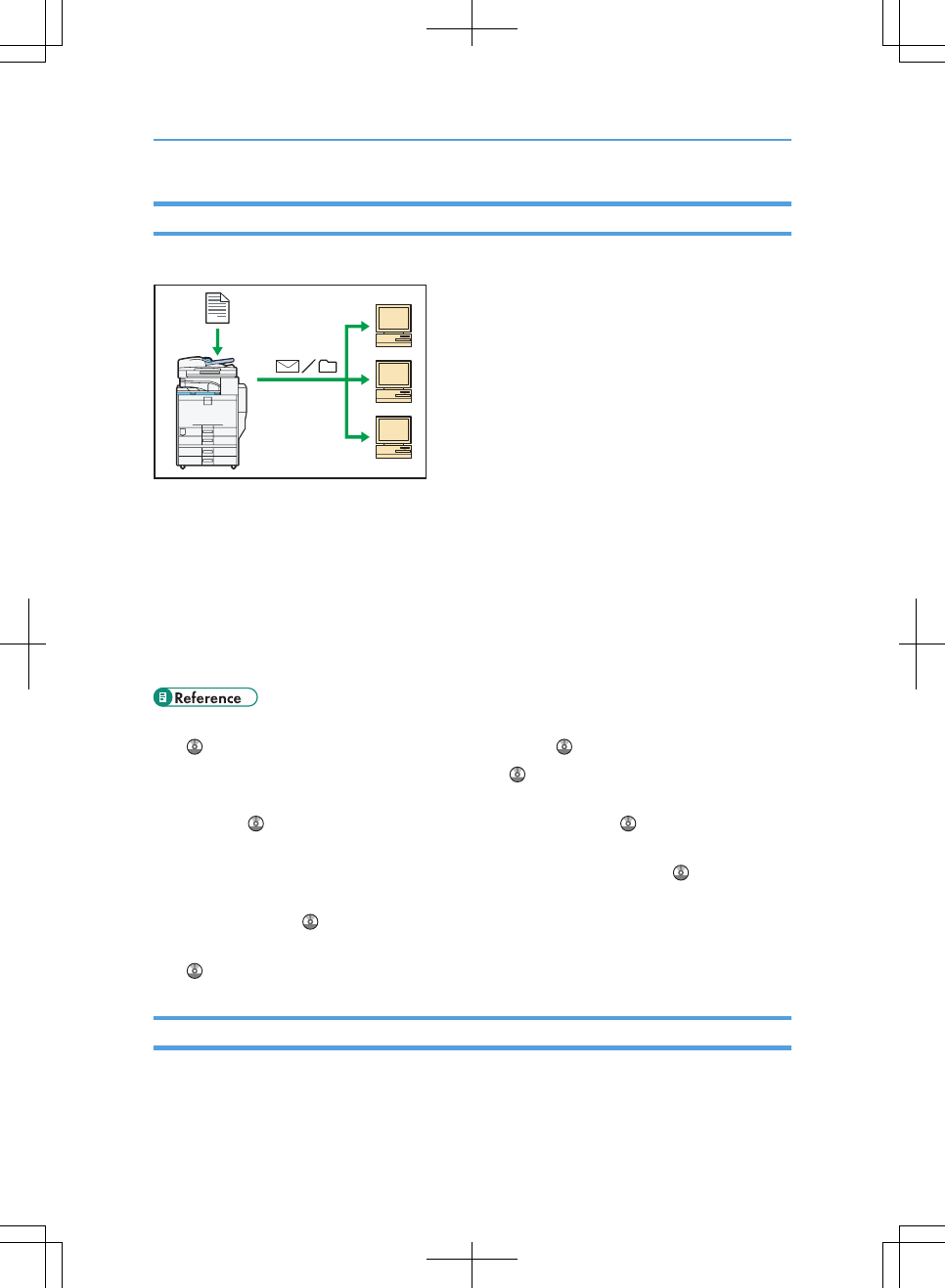
Using the Facsimile and the Scanner in a Network Environment
You can use a facsimile and a scanner over the network.
CAS010
• You can send scan files to a specified destination using e-mail (Sending scan files by e-mail).
• You can send scan files directly to folders (Sending scan files by Scan to Folder).
• You can use this machine as a delivery scanner for the ScanRouter delivery software*1 (Network
delivery scanner). You can save scan files in the delivery server or send them to a folder in a computer
on the same network.
• You can use Web Services on Devices (WSD) to send scan files to a client computer.
*1 For details to purchase ScanRouter delivery software, contact your local dealer.
• For details about sending scan files by e-mail, see “Specifying a Destination”, Facsimile Reference
, and “Sending Scan Files by E-mail”, Scanner Reference .
• For details about file storage, see Scanner Reference .
• For details about sending scan files by Scan to Folder, see “Specifying a Destination”, Facsimile
Reference , and “Sending Scan Files to Folders”, Scanner Reference .
• For details about the machine's settings for network delivery scanner, see “Network Settings Required
to Use the Network Delivery Scanner”, Network and System Settings Reference .
• For details about how to use the network delivery scanner function, see “Delivering Scan Files”,
Scanner Reference .
• For details about sending using WSD, see “Sending Scan Files Using WSD”, Scanner Reference
.
Administrating the Machine/Protecting Documents (Security Functions)
You can prevent information leakage by managing the machine and protecting documents.
16
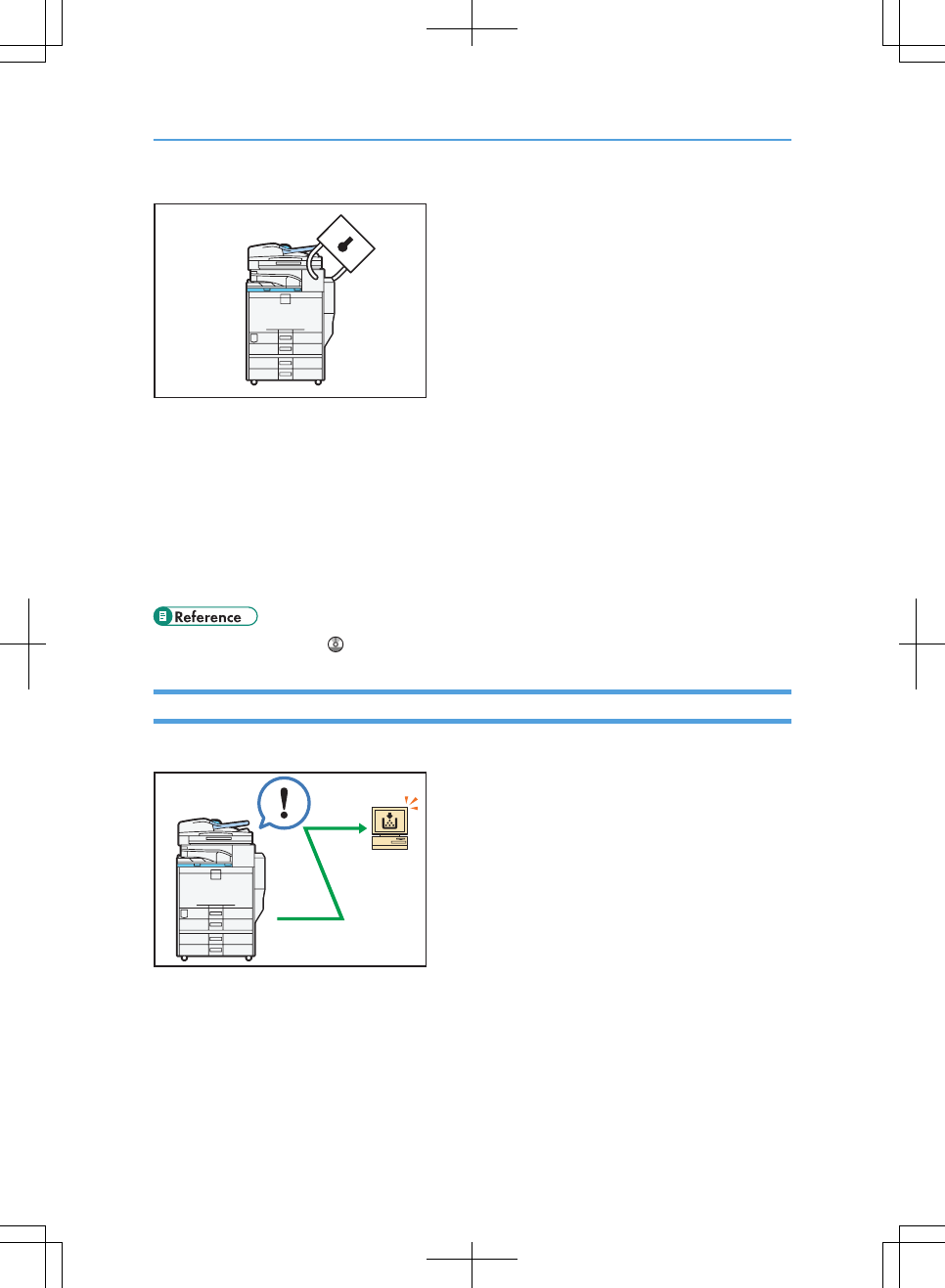
CAS011
• You can protect documents from unauthorized access and stop them from being copied without
permission.
• You can control the use of the machine, as well as prevent machine settings from being changed
without authorization.
• By setting passwords, you can prevent unauthorized access via the network.
• You can erase the data on the hard disk to prevent the information from leaking out.
• You can limit the volume of the usage of the machine for each user.
• See Security Reference .
Monitoring and Setting the Machine Via Computer
You can change the machine's settings and monitor its status from a connected computer.
CAS012
• Web Image Monitor lets you configure and operate the machine using a Web browser on a computer.
• Using Web Image Monitor, you can register information in the Address Book, specify the machine's
settings, and check the machine's status with ease.
17
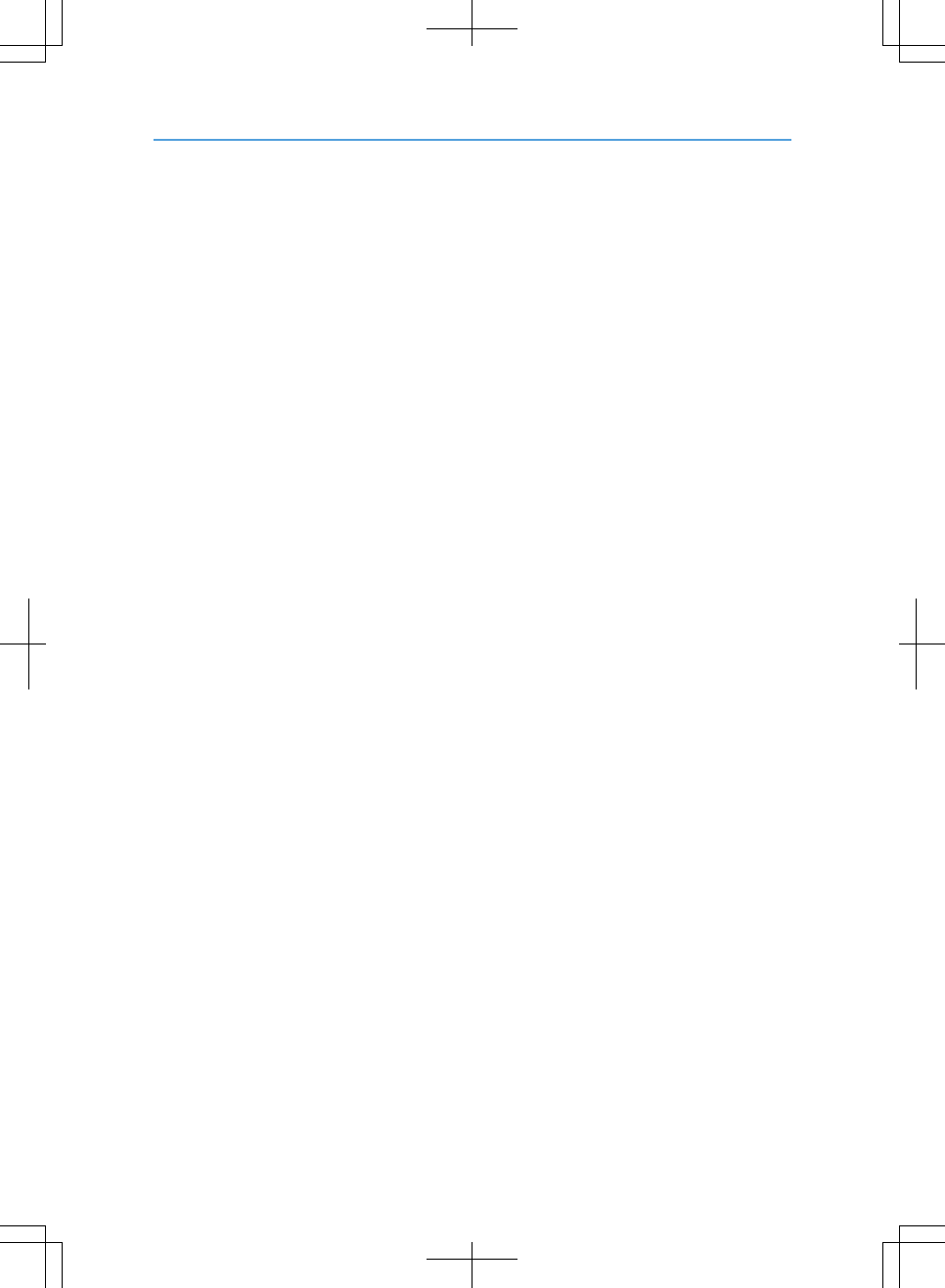
• Using Web Image Monitor, you can check and specify the initial settings (System Settings, Printer
Features, network settings, security settings/certificate management, and e-mail notification), control
print jobs, display the print job journal, and protect the data in the machine using authentication.
18
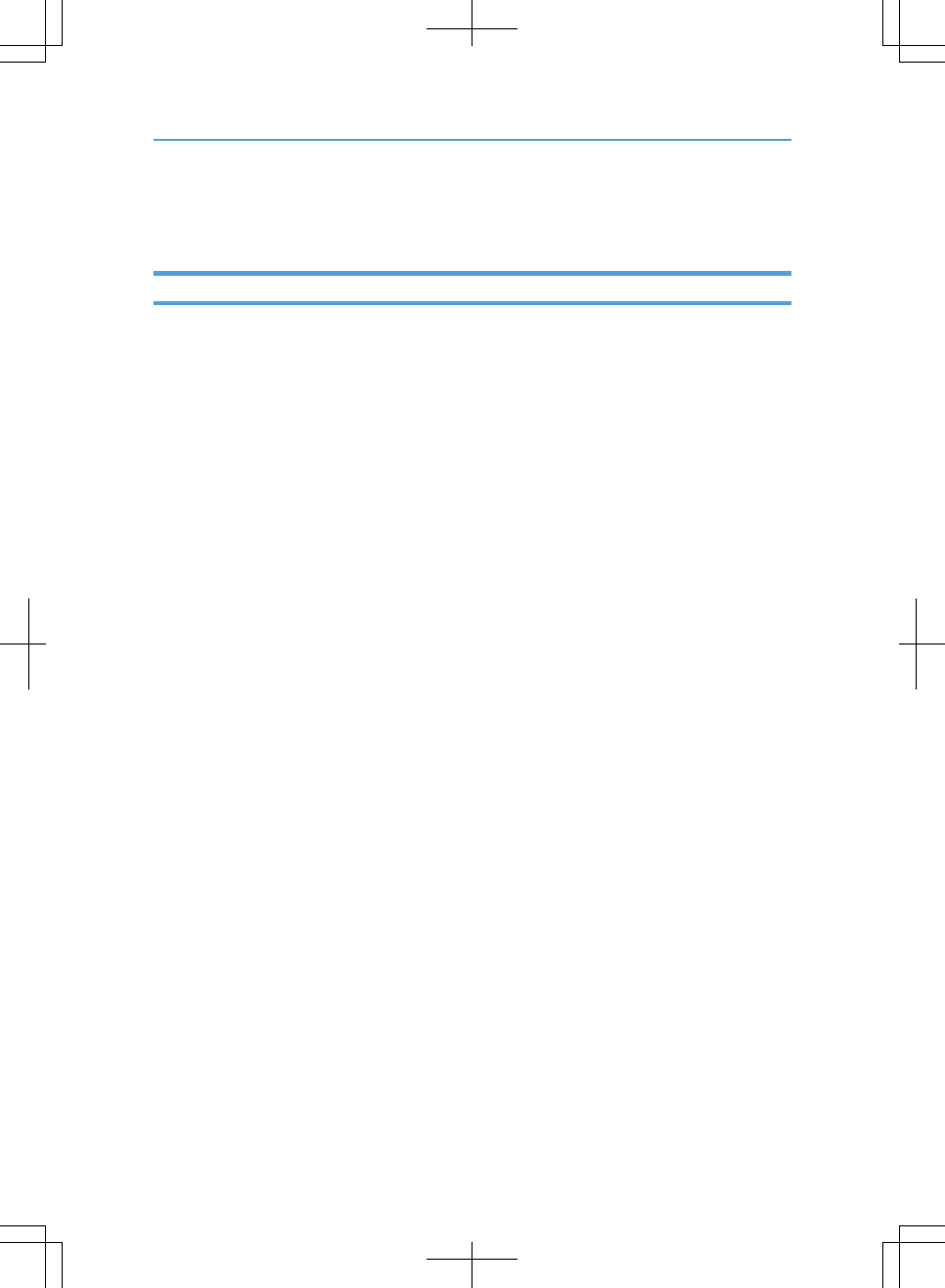
Notice
Important
In no event will the company be liable for direct, indirect, special, incidental, or consequential damages
as a result of handling or operating the machine.
For good copy quality, the manufacturer recommends that you use genuine toner from the manufacturer.
The manufacturer shall not be responsible for any damage or expense that might result from the use of
parts other than genuine parts from the manufacturer with your office products.
19
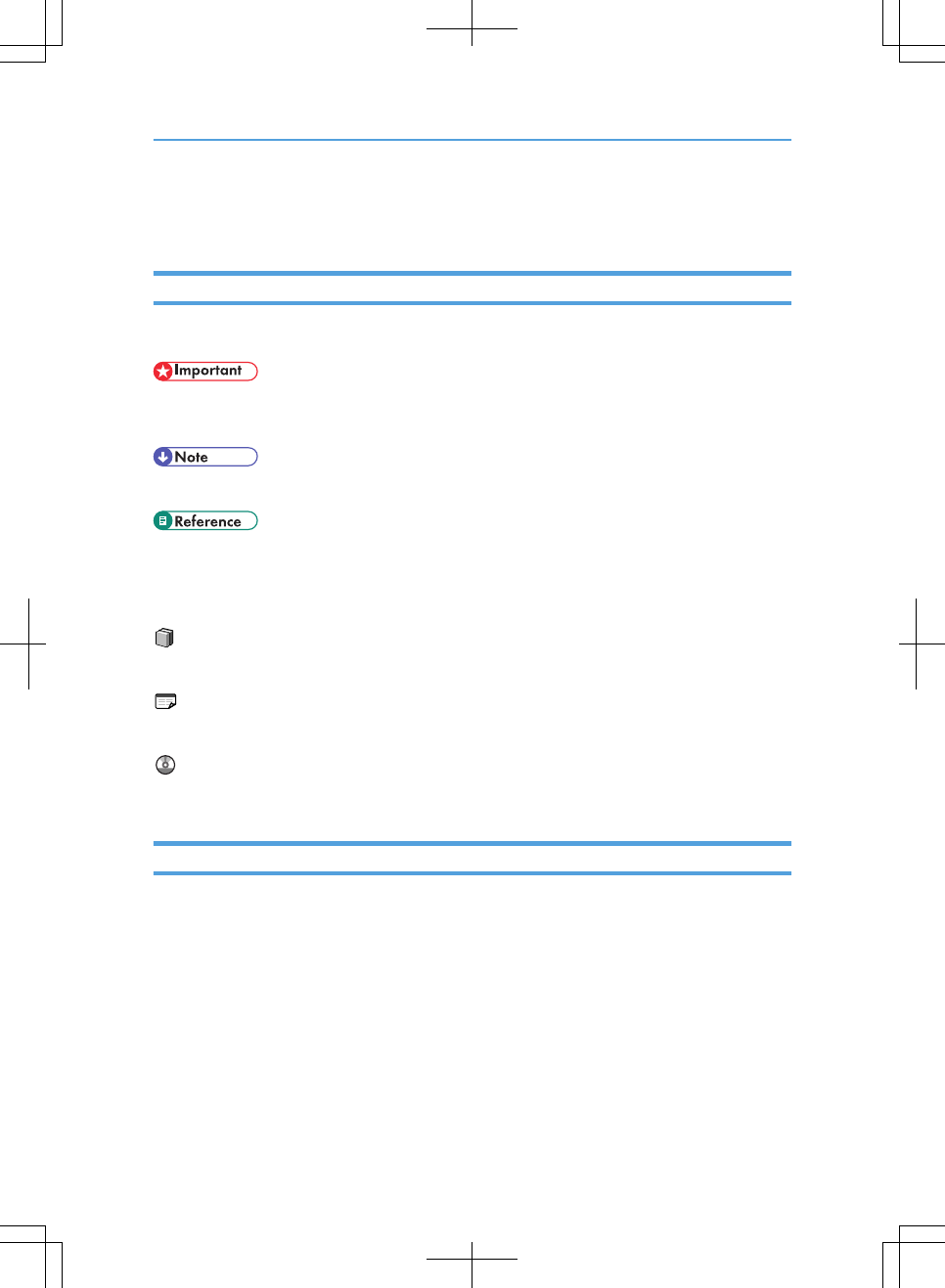
How to Read This Manual
Symbols
This manual uses the following symbols:
Indicates points to pay attention to when using the machine, and explanations of likely causes of paper
misfeeds, damage to originals, or loss of data. Be sure to read these explanations.
Indicates supplementary explanations of the machine's functions, and instructions on resolving user errors.
This symbol is located at the end of sections. It indicates where you can find further relevant information.
[ ]
Indicates the names of keys on the machine's display or control panels.
Indicates instructions in book form.
Indicates instructions in sheet form.
Indicates instructions stored in a file on a provided CD-ROM.
Machine Types
The model names of the machines do not appear in the following pages. Check the type of your machine
before reading this manual.
• Type 1: C9130/LD630C/Aficio MP C3001/C9130G/LD630CG/Aficio MP C3001G
• Type 2: C9135/LD635C/Aficio MP C3501/C9135G/LD635CG/Aficio MP C3501G
• Type 3: C9145/LD645C/Aficio MP C4501/C9145G/LD645CG/Aficio MP C4501G
• Type 4: C9155/LD655C/Aficio MP C5501/C9155G/LD655CG/Aficio MP C5501G
Certain types might not be available in some countries. For details, please contact your local dealer.
20
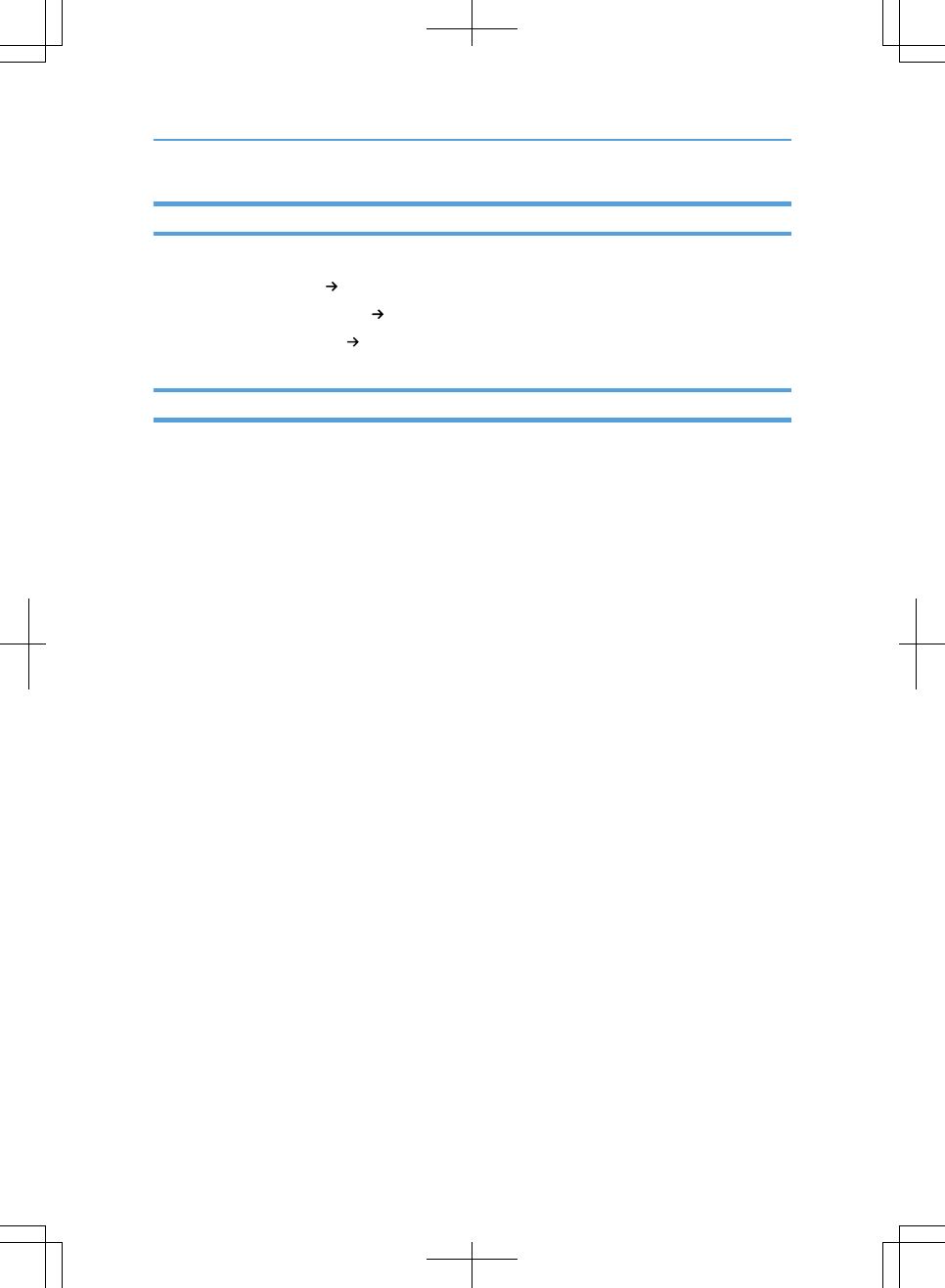
Names of Major Items
Major items of this machine are referred to as follows in this manual:
• Auto document feeder ADF
• Large capacity tray (optional) LCT
• Envelope Feeder EF3000 Small size paper tray
Notes
Contents of this manual are subject to change without prior notice.
Colors on color keys or the color circle may differ slightly from the colors of actual copies.
The color samples in this manual may differ slightly from the colors of actual copies.
Some illustrations in this manual might be slightly different from the machine.
Certain options might not be available in some countries. For details, please contact your local dealer.
Depending on which country you are in, certain units may be optional. For details, please contact your
local dealer.
21
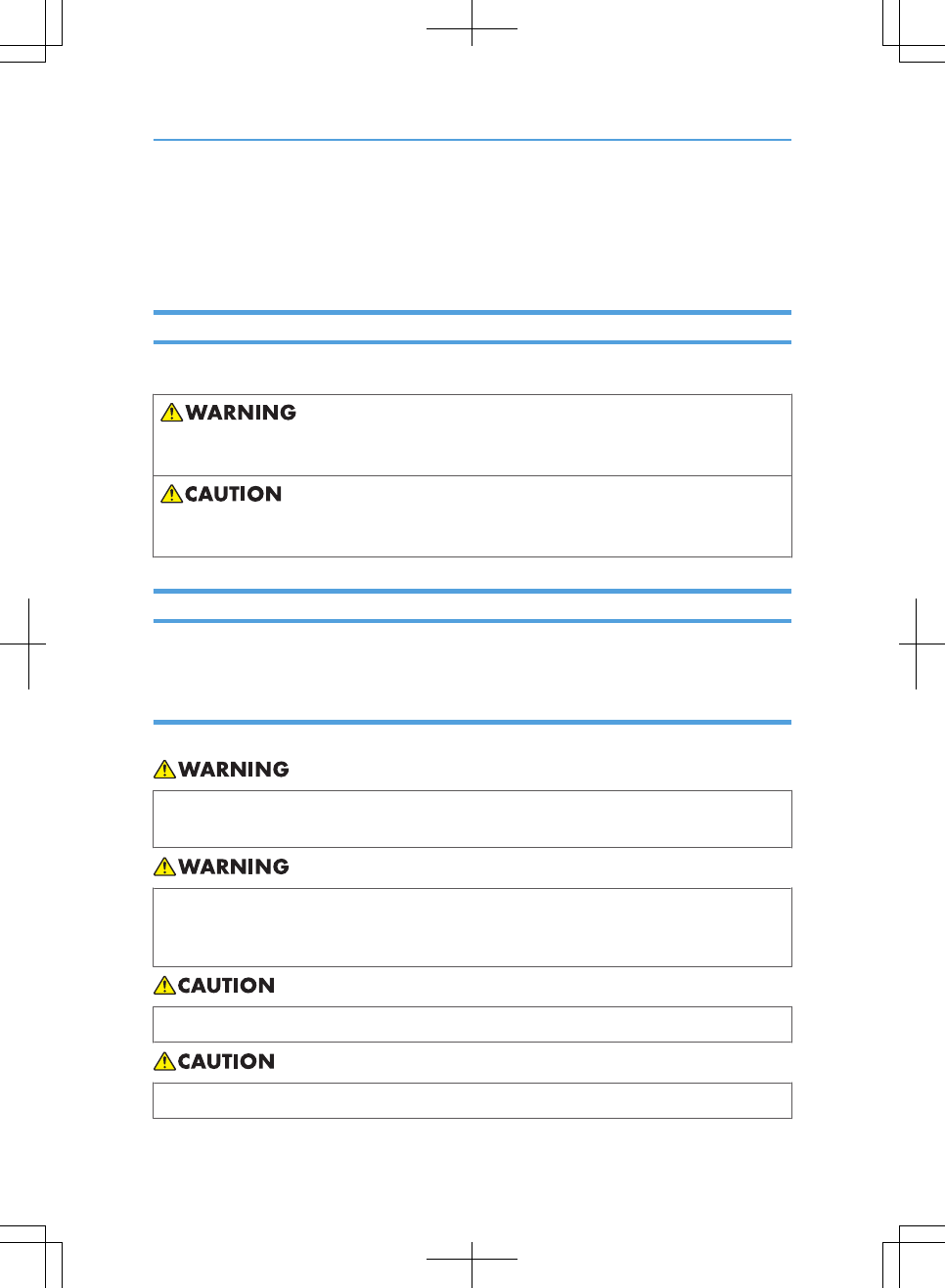
Safety Information
When using this machine, the following safety precautions should always be followed.
Safety During Operation
In this manual, the following important symbols are used:
Indicates a potentially hazardous situation which, if instructions are not followed, could result in death
or serious injury.
Indicates a potentially hazardous situation which, if instructions are not followed, may result in minor or
moderate injury or damage to property.
Safety Precautions to Be Followed
This section explains safety precautions that should always be followed when using this machine.
Environments where the machine can be used
This section explains safety precautions about environments where the machine can be used.
• Do not use flammable sprays or solvents in the vicinity of this machine. Doing so could result in fire
or electric shock.
• Do not place vases, plant pots, cups, toiletries, medicines, small metal objects, or containers
holding water or any other liquids, on or close to this machine. Fire or electric shock could result
from spillage or if such objects or substances fall inside this machine.
• Keep the machine away from humidity and dust. Otherwise a fire or an electric shock might occur.
• Do not place the machine on an unstable or tilted surface. If it topples over, an injury might occur.
22
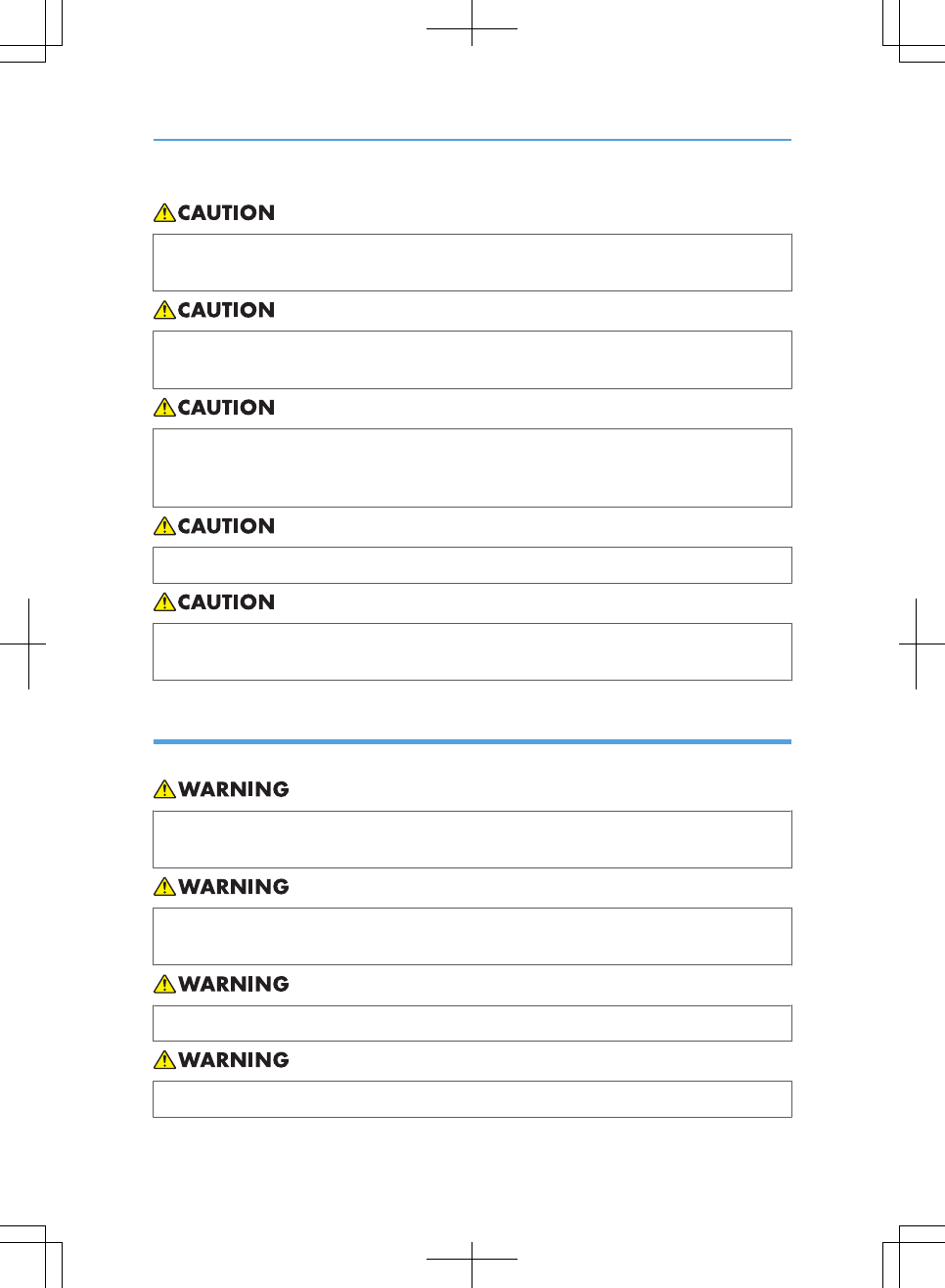
• Do not place heavy objects on the machine. Doing so can cause the machine to topple over,
possibly resulting in injury.
• Make sure the room where you are using the machine is well ventilated and spacious. Good
ventilation is especially important when the machine is used heavily.
• Do not expose the machine to salt-bearing air or corrosive gases. Also, do not locate the machine
in environments where chemical experiments are performed, such as in a laboratory. Doing so
could result in malfunction.
• Do not obstruct the machine's vents. Doing so risks fire caused by overheated internal components.
• Machine sound levels exceeding LWAd > 63 dB (A) are not suitable for desk work environments,
so place the machine in another room.
Handling power cords and power plugs
This section explains safety precautions about handling power cords and power plugs.
• Do not use any power sources other than those that match the specifications shown in
“Specifications for the Main Unit” in this manual. Doing so could result in fire or electric shock.
• Do not use any frequencies other than those that match the specifications shown. Doing so could
result in fire or electric shock.
• Do not use multi-socket adaptors. Doing so could result in fire or electric shock.
• Do not use extension cords. Doing so could result in fire or electric shock.
23
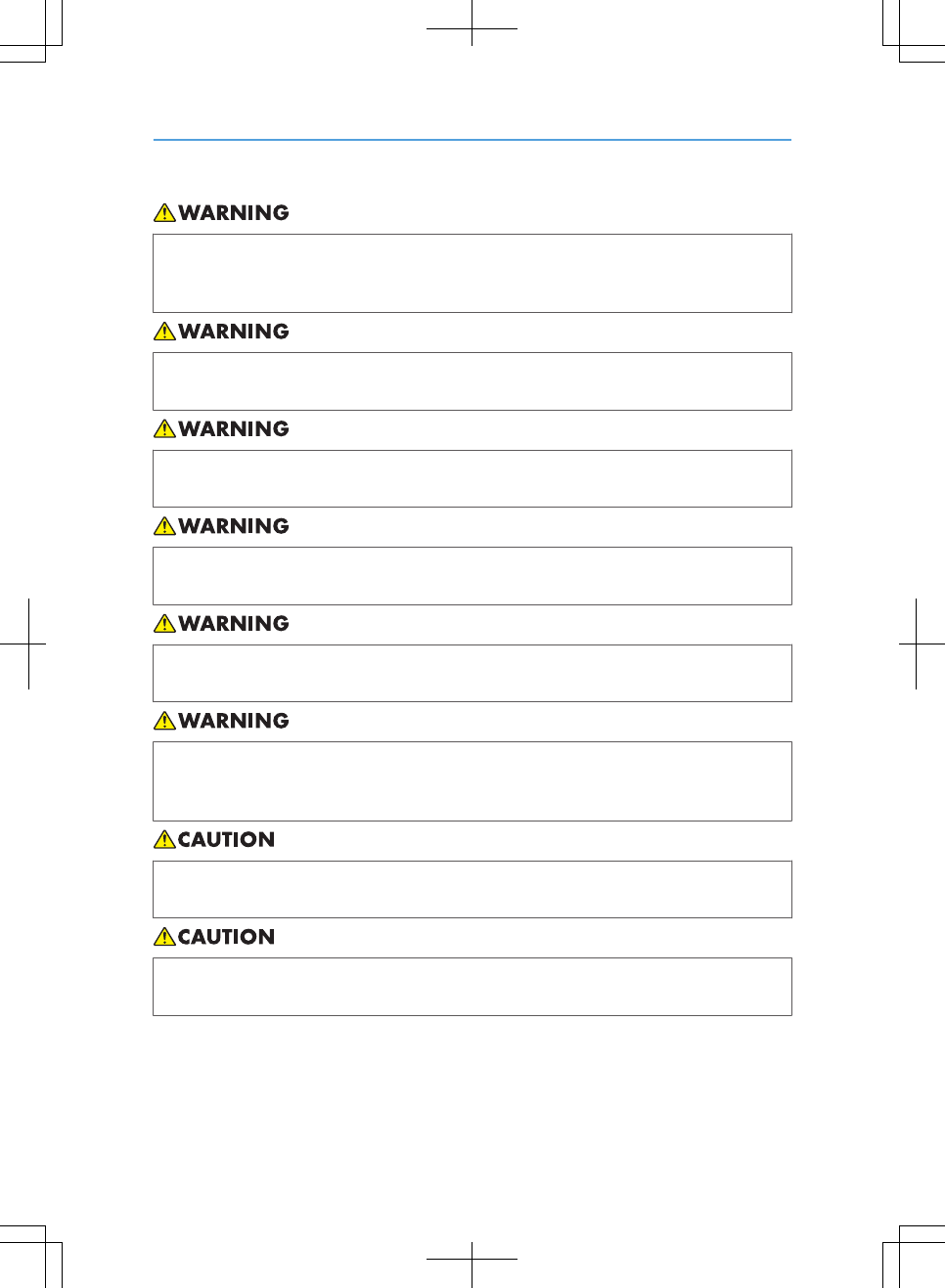
• Do not use power cords that are damaged, broken, or modified. Also, do not use power cords
that have been trapped under heavy objects, pulled hard, or bent severely. Doing so could result
in fire or electric shock.
• Touching the prongs of the power cable's plug with anything metallic constitutes a fire and electric
shock hazard.
• The supplied power cord is for use with this machine only. Do not use it with other appliances.
Doing so could result in fire or electric shock.
• It is dangerous to handle the power cord plug with wet hands. Doing so could result in electric
shock.
• Disconnect the power plug (by pulling the plug, not the cable) if the power cable or plug becomes
frayed or otherwise damaged.
• If the power cord is damaged (exposure of the core, disconnection, etc.), contact your service
representative to change a new one. Operating the machine with a damaged power cord may
cause an electric shock or fire.
• Be sure to push the plug of the power cord fully into the wall outlet. Partially inserted plugs create
an unstable connection that can result in unsafe buildup of heat.
• If this machine is not going to be used for several days or longer at a time, disconnect its power
cord from the wall outlet.
24
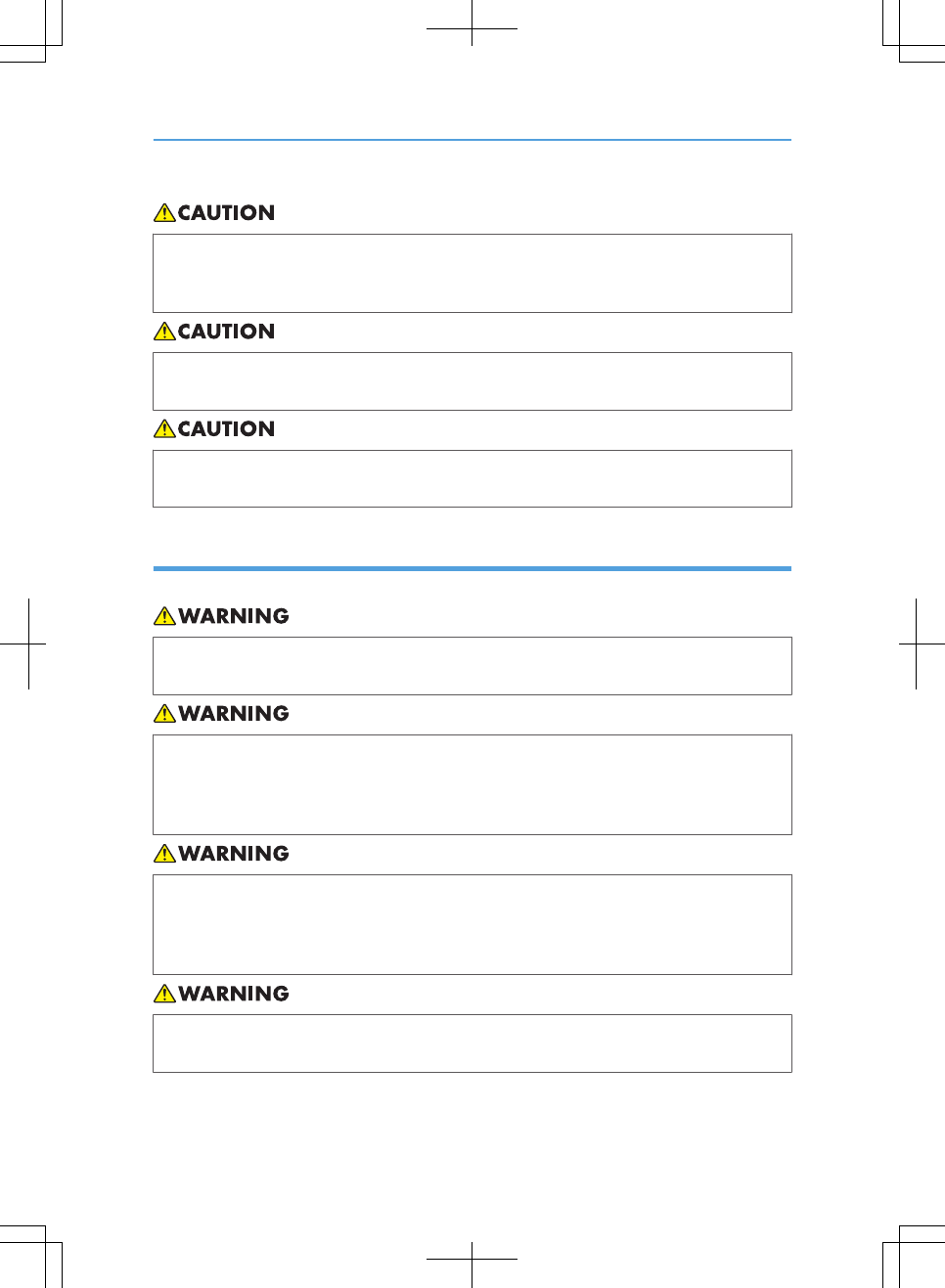
• When disconnecting the power cord from the wall outlet, always pull the plug, not the cord. Pulling
the cord can damage the power cord. Use of damaged power cords could result in fire or electric
shock.
• Be sure to disconnect the plug from the wall outlet and clean the prongs and the area around the
prongs at least once a year. Allowing dust to build up on the plug constitutes a fire hazard.
• When performing maintenance on the machine, always disconnect the power cord from the wall
outlet.
Handling the main machine
This section explains safety precautions about handling the main machine.
• Be sure to locate the machine as close as possible to a wall outlet. This will allow easy disconnection
of the power cord in the event of an emergency.
• If the machine emits smoke or odours, or if it behaves unusually, you must turn off its power
immediately. After turning off the power, be sure to disconnect the power cord plug from the wall
outlet. Then contact your service representative and report the problem. Do not use the machine.
Doing so could result in fire or electric shock.
• If metal objects, or water or other fluids fall inside this machine, you must turn off its power
immediately. After turning off the power, be sure to disconnect the power cord plug from the wall
outlet. Then contact your service representative and report the problem. Do not use the machine.
Doing so could result in fire or electric shock.
• Do not touch this machine if a lightning strike occurs in the immediate vicinity. Doing so could result
in electric shock.
25
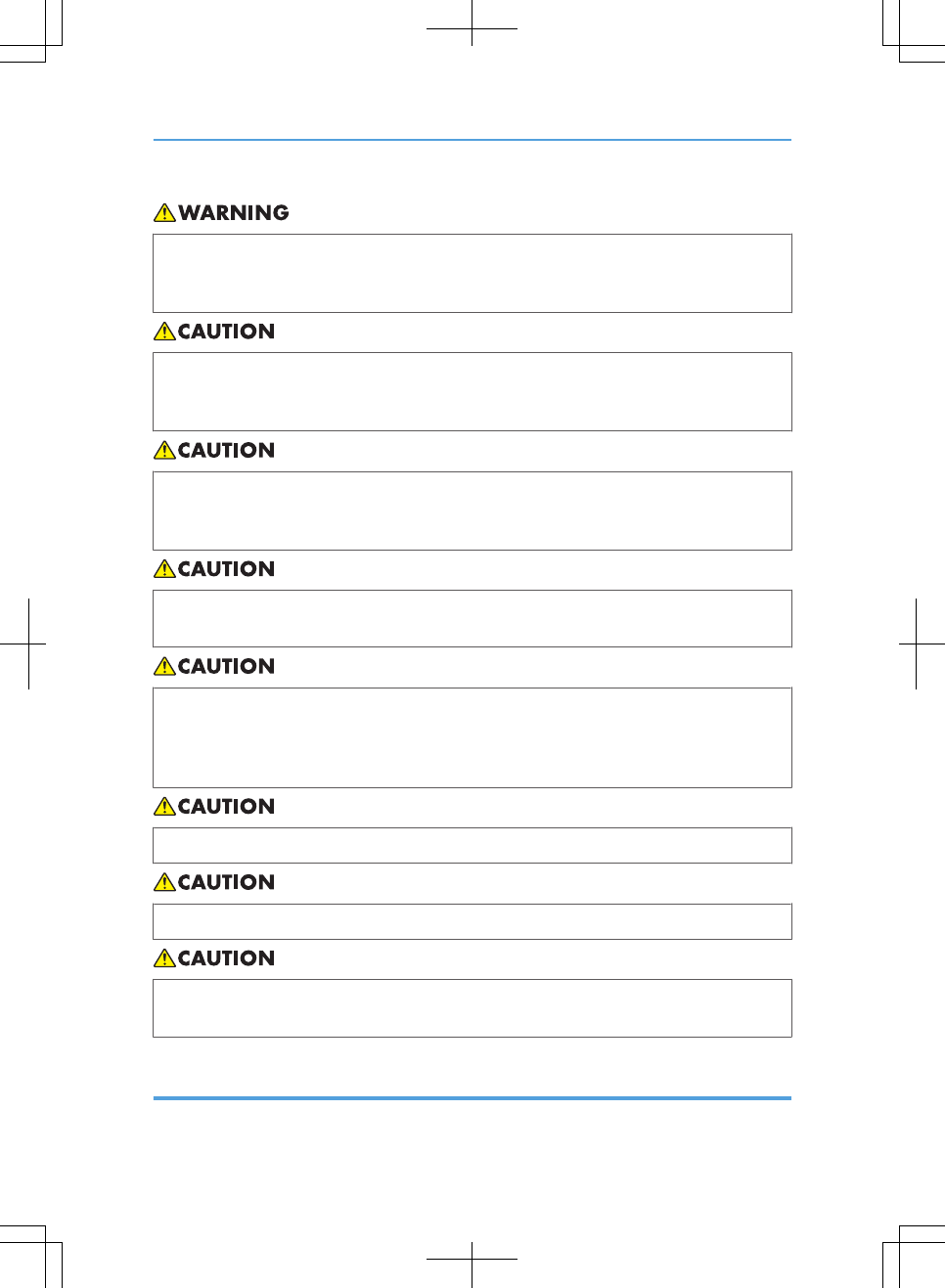
• Keep the polythene materials (bags, etc.) supplied with this machine away from babies and small
children at all times. Suffocation can result if polythene materials are brought into contact with the
mouth or nose.
• Unplug the power cord from the wall outlet before you move the machine. While moving the
machine, take care that the power cord is not damaged under the machine. Failing to take these
precautions could result in fire or electric shock.
• If you have to move the machine when the optional paper tray unit is attached, do not push on the
main unit's top section. Doing so can cause the optional paper tray unit to detach, possibly resulting
in injury.
• After you move the machine, use the caster fixture to fix it in place. Otherwise the machine might
move or come down to cause an injury.
• Contact your service representative if you need to lift the machine (such as when relocating it to
another floor). Do not attempt to lift the machine without the assistance of your service
representative. The machine will be damaged if it topples or is dropped, resulting in malfunction
and risk of injury to users.
• Do not look into the lamp. It can damage your eyes.
• Protect the machine from dampness or wet weather, such as rain and snow.
• For environmental reasons, do not dispose of the machine or expended supply waste at household
waste collection points. Disposal can take place at an authorized dealer.
Handling the machine's interior
This section explains safety precautions about handling the machine's interior.
26
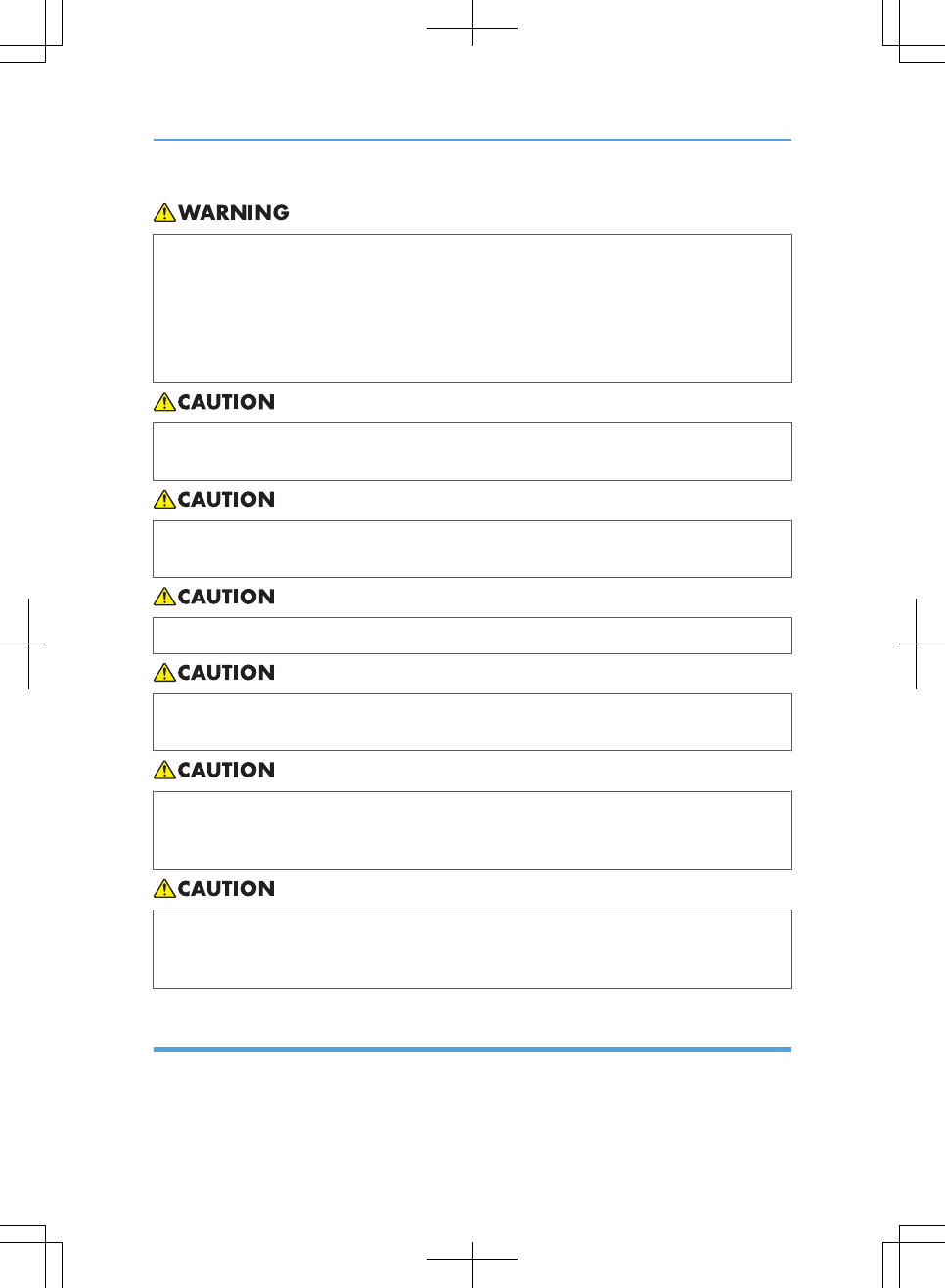
• Do not remove any covers or screws other than those explicitly mentioned in this manual. Inside
this machine are high voltage components that are an electric shock hazard and laser components
that could cause blindness. Contact your sales or service representative if any of the machine's
internal components require maintenance, adjustment, or repair.
• Do not attempt to disassemble or modify this machine. Doing so risks burns and electric shock.
Note again that exposure to the laser components inside this machine risks blindness.
• Some of this machine's internal components get very hot. For this reason, take care when removing
misfed paper. Not doing so could result in burns.
• The inside of the machine could be very hot. Do not touch the parts with a label indicating the “hot
surface”. Otherwise, an injury might occur.
• When loading paper, take care not to trap or injure your fingers.
• Keep your hands clear of the booklet finisher tray when removing misfed paper, pulling out or
pushing in the finisher's staple unit. You can trap and injure your fingers if you do not.
• During operation, rollers for transporting the paper and originals revolve. A safety device has
been installed so that the machine can be operated safely. But take care not to touch the machine
during operation. Otherwise, an injury might occur.
• If the machine's interior is not cleaned regularly, dust will accumulate. Fire and breakdown can
result from heavy accumulation of dust inside this machine. Contact your sales or service
representative for details about and charges for cleaning the machine's interior.
Handling the machine's supplies
This section explains safety precautions about handling the machine's supplies.
27
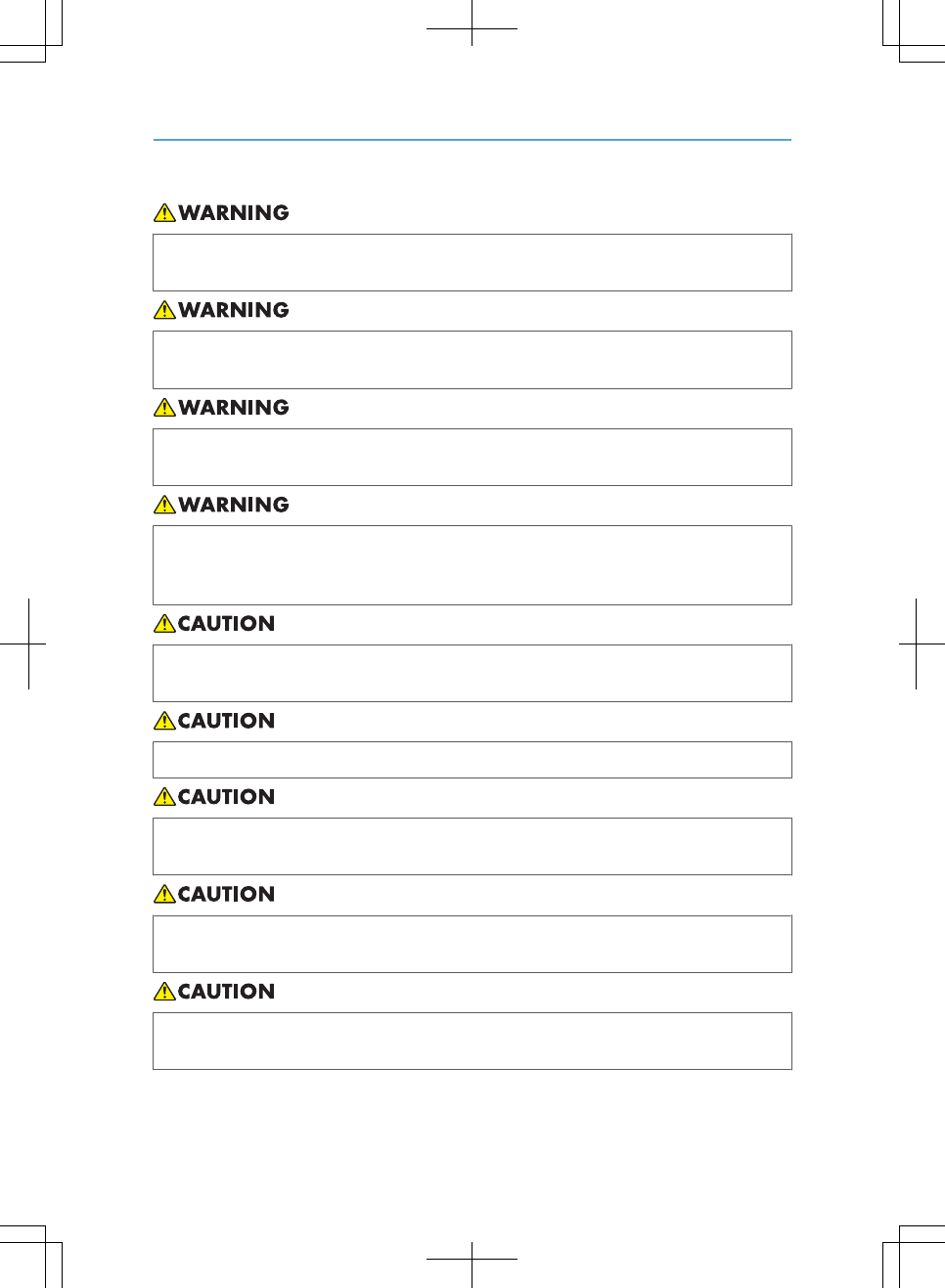
• Do not incinerate toner (new or used) or toner containers. Doing so risks burns. Toner will ignite
on contact with naked flame.
• Do not store toner (new or used) or toner containers anywhere near naked flames. Doing so risks
fire and burns. Toner will ignite on contact with naked flame.
• Do not incinerate spilled toner or used toner. Toner dust might ignite when exposed to an open
flame.
• Keep the polythene materials (bags, gloves, etc.) supplied with this machine away from babies
and small children at all times. Suffocation can result if polythene materials are brought into contact
with the mouth or nose.
• Do not crush or squeeze toner containers. Doing so can cause toner spillage, possibly resulting in
dirtying of skin, clothing, and floor, and accidental ingestion.
• Keep toner (used or unused) and toner containers out of reach of children.
• If toner or used toner is inhaled, gargle with plenty of water and move into a fresh air environment.
Consult a doctor if necessary.
• If toner or used toner gets into your eyes, flush immediately with large amounts of water. Consult
a doctor if necessary.
• If toner or used toner is swallowed, dilute by drinking a large amount of water. Consult a doctor
if necessary.
28
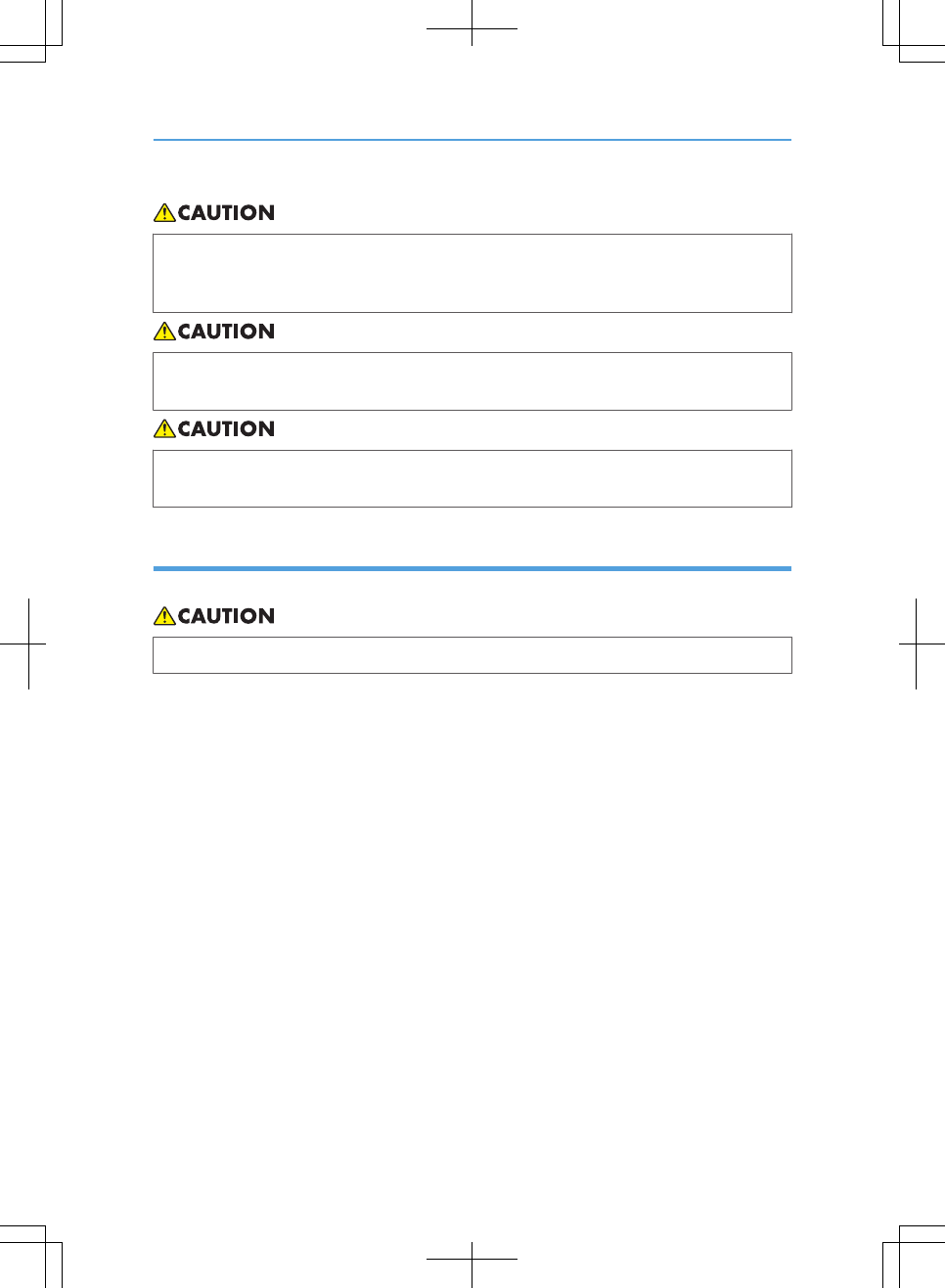
• When removing jammed paper or replacing toner, avoid getting toner (new or used) on your
clothing. If toner comes into contact with your clothing, wash the stained area with cold water. Hot
water will set the toner into the fabric and make removing the stain impossible.
• When removing jammed paper or replacing toner, avoid getting toner (new or used) on your skin.
If toner comes into contact with your skin, wash the affected area thoroughly with soap and water.
• Do not attempt to print on stapled sheets, aluminum foil, carbon paper, or any kind of conductive
paper. Doing so risks fire.
Other safety precautions
This section explains other safety precautions.
• A network interface cable with a ferrite core must be used for RF interference suppression.
29
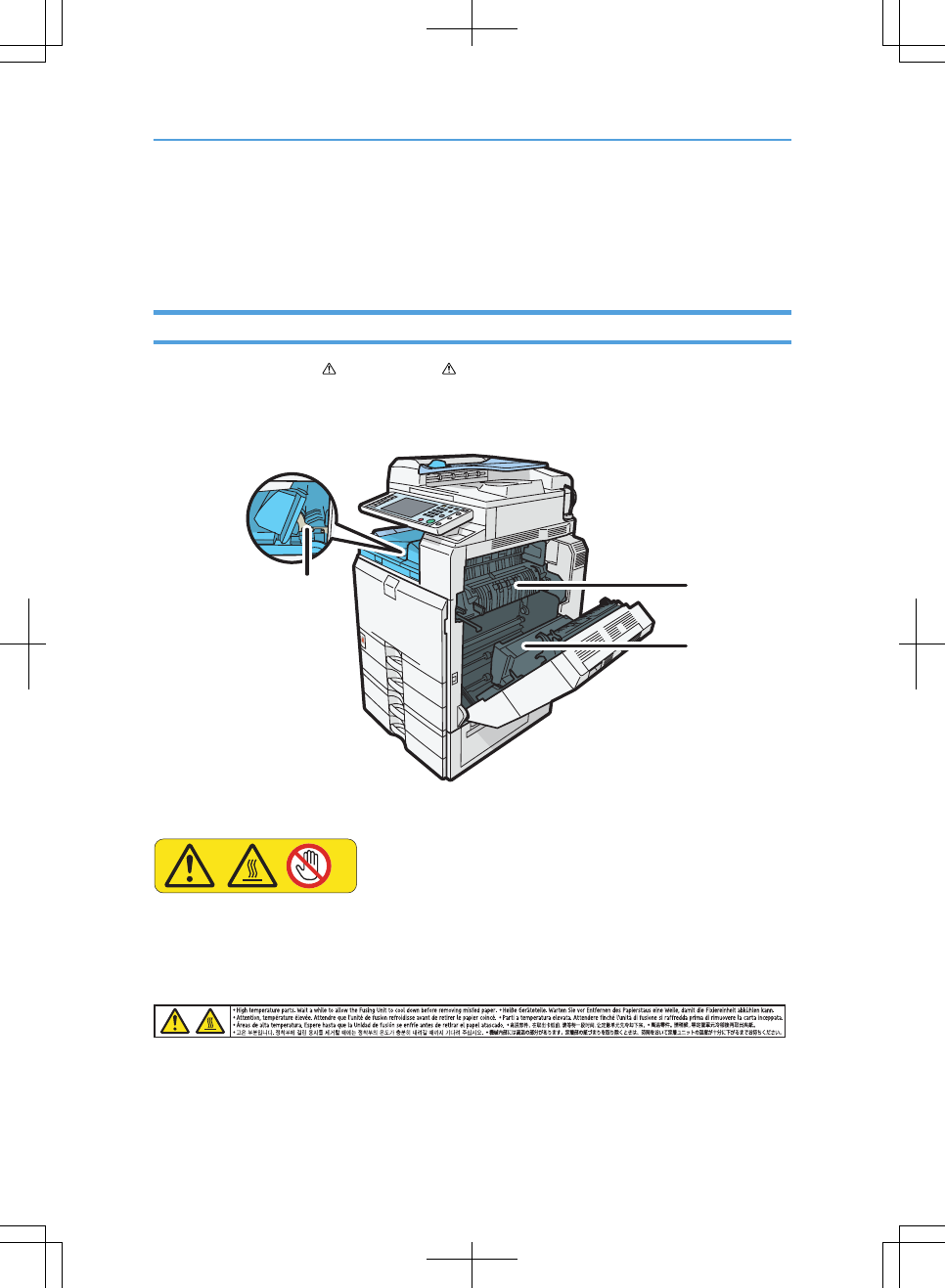
Safety Labels of This Machine
This section explains the machine's safety information labels.
Positions of WARNING and CAUTION labels for Users of Type 1 and 2
This machine has labels for WARNING and CAUTION at the positions shown below. For safety,
please follow the instructions and handle the machine as indicated.
Main unit
CAS014
2
1
3
1
CAS015
Do not touch the parts a label indicates. The inside of the bridge unit could be very hot. Caution should be
taken when removing misfed paper.
2
CAS016
High temperature parts. Wait a while to allow the Fusing Unit to cool down before removing misfed paper.
3
30
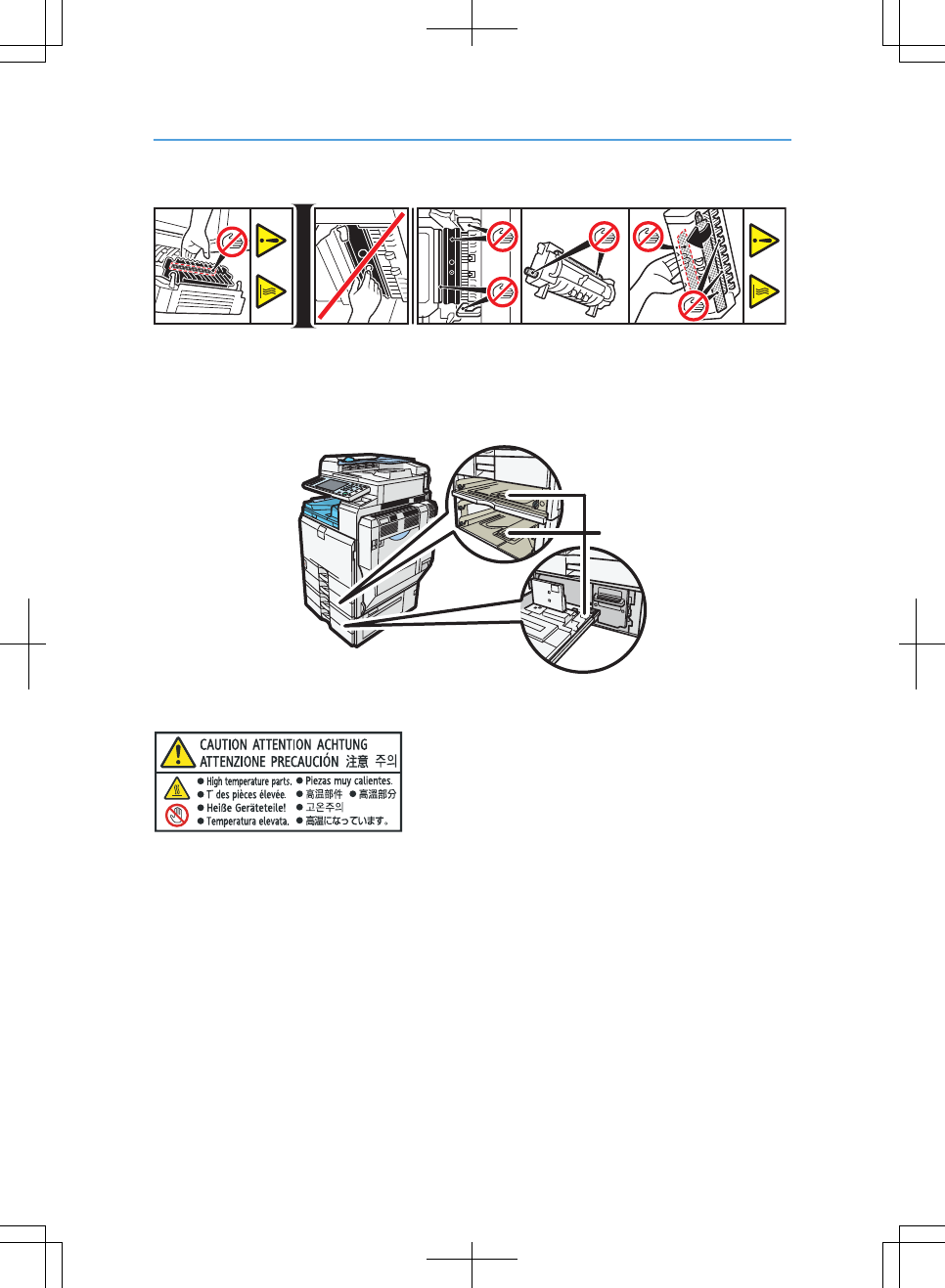
CAS017
Do not touch the parts a label indicates. The inside of the machine could be very hot. Caution should be
taken when removing misfed paper.
Paper tray
CAS019
4
4
CAS020
The inside of the machine could be very hot. Do not touch the parts which a label is put on. Otherwise, an
injury might occur.
31
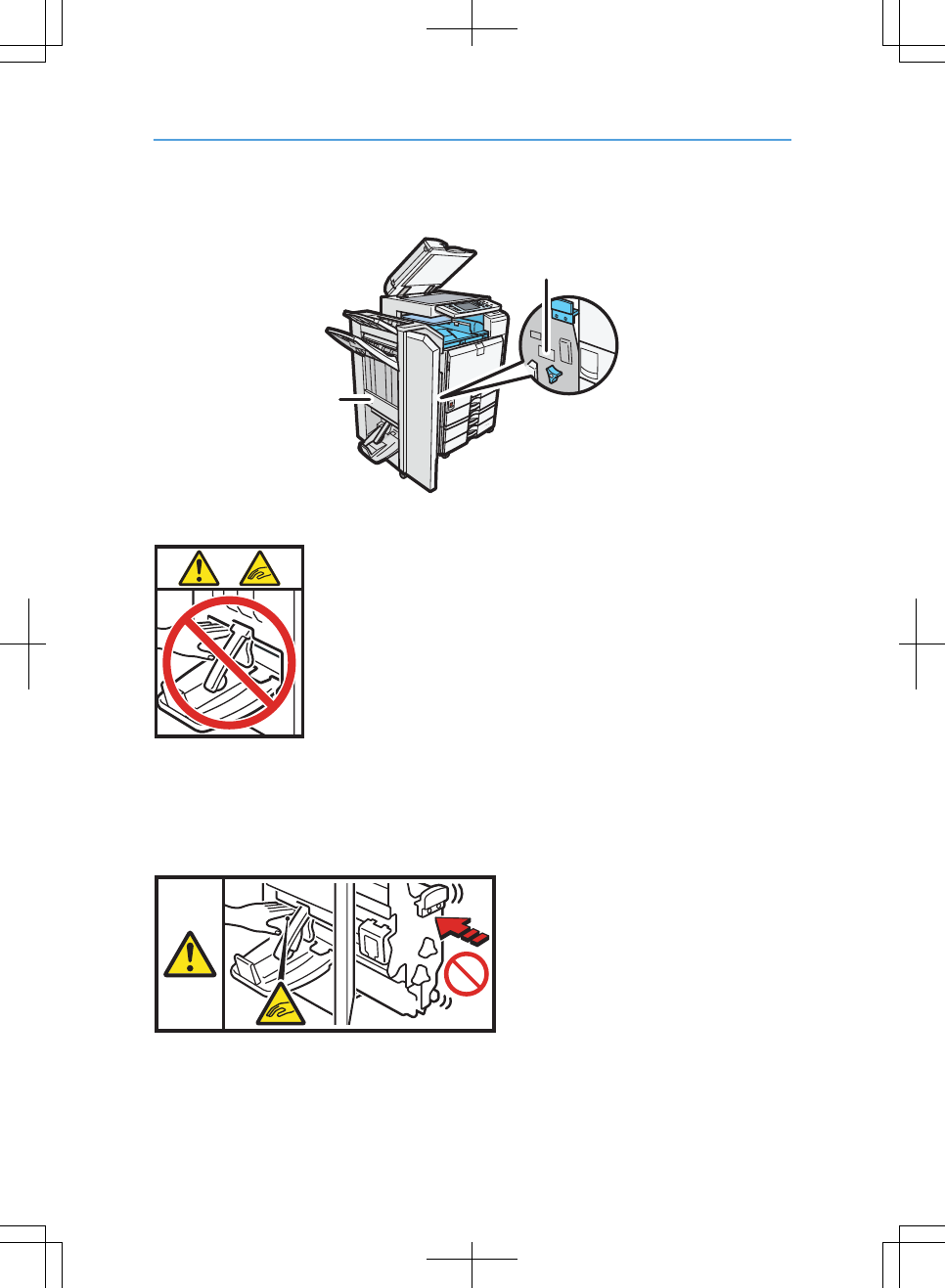
Booklet Finisher SR3000
CAS021
6
5
5
CAS022
Keep your hands clear of the booklet finisher tray when pulling out or pushing in the finisher's staple unit,
or removing paper jam. You might trap your fingers if you do not. Take care not to touch the booklet finisher
tray during operation. Otherwise, an injury might occur.
6
CAS023
Keep your hands clear of the booklet finisher tray when pulling out or pushing in the finisher's staple unit,
or removing paper jam. You might trap your fingers if you do not.
32
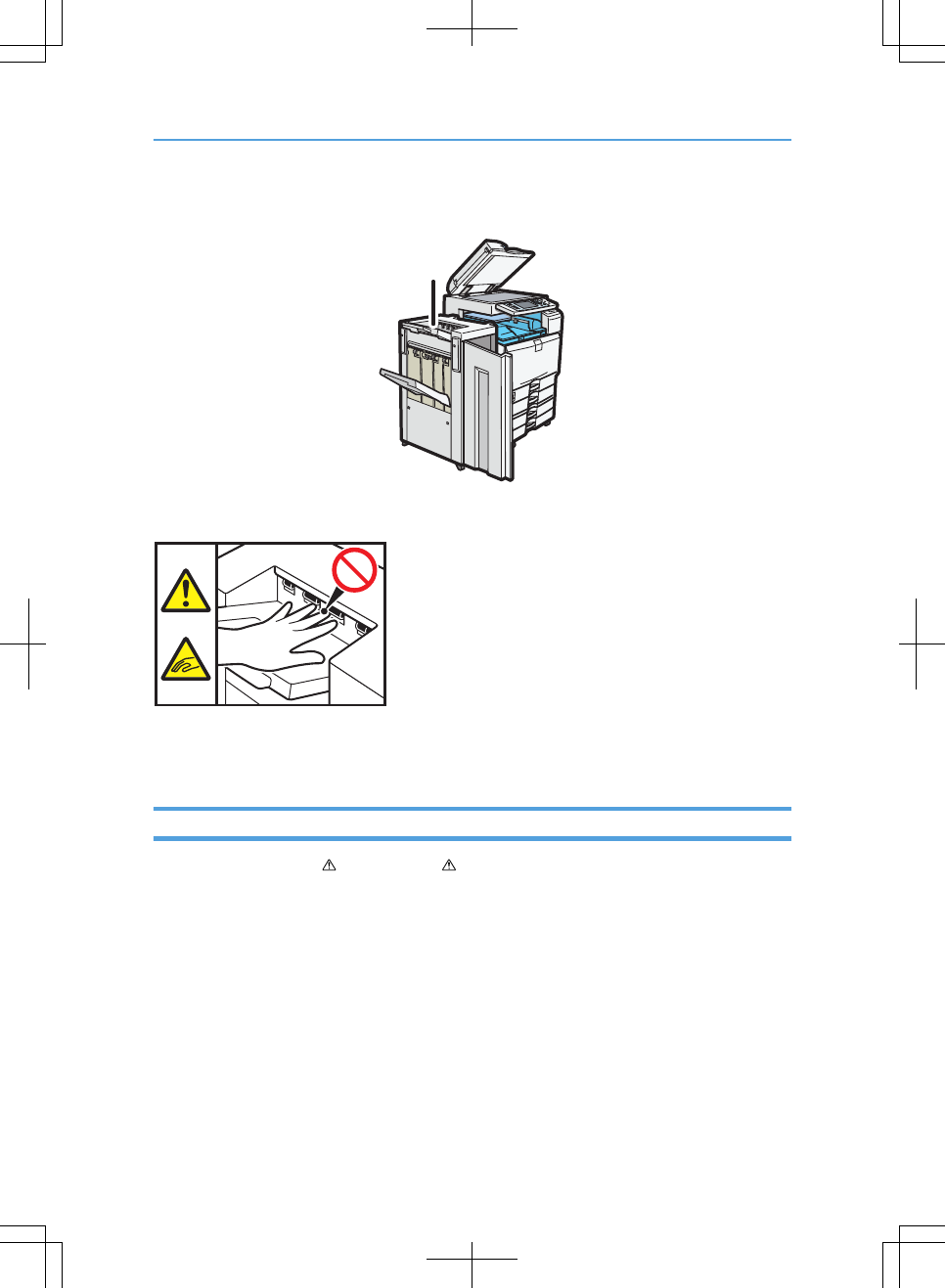
Finisher SR790
CAS127
7
7
CAS128
During operation, rollers for transporting the paper revolve. Take care not to touch rollers during operation.
Otherwise, an injury might occur.
Positions of WARNING and CAUTION labels for Users of Type 3 and 4
This machine has labels for WARNING and CAUTION at the positions shown below. For safety,
please follow the instructions and handle the machine as indicated.
33
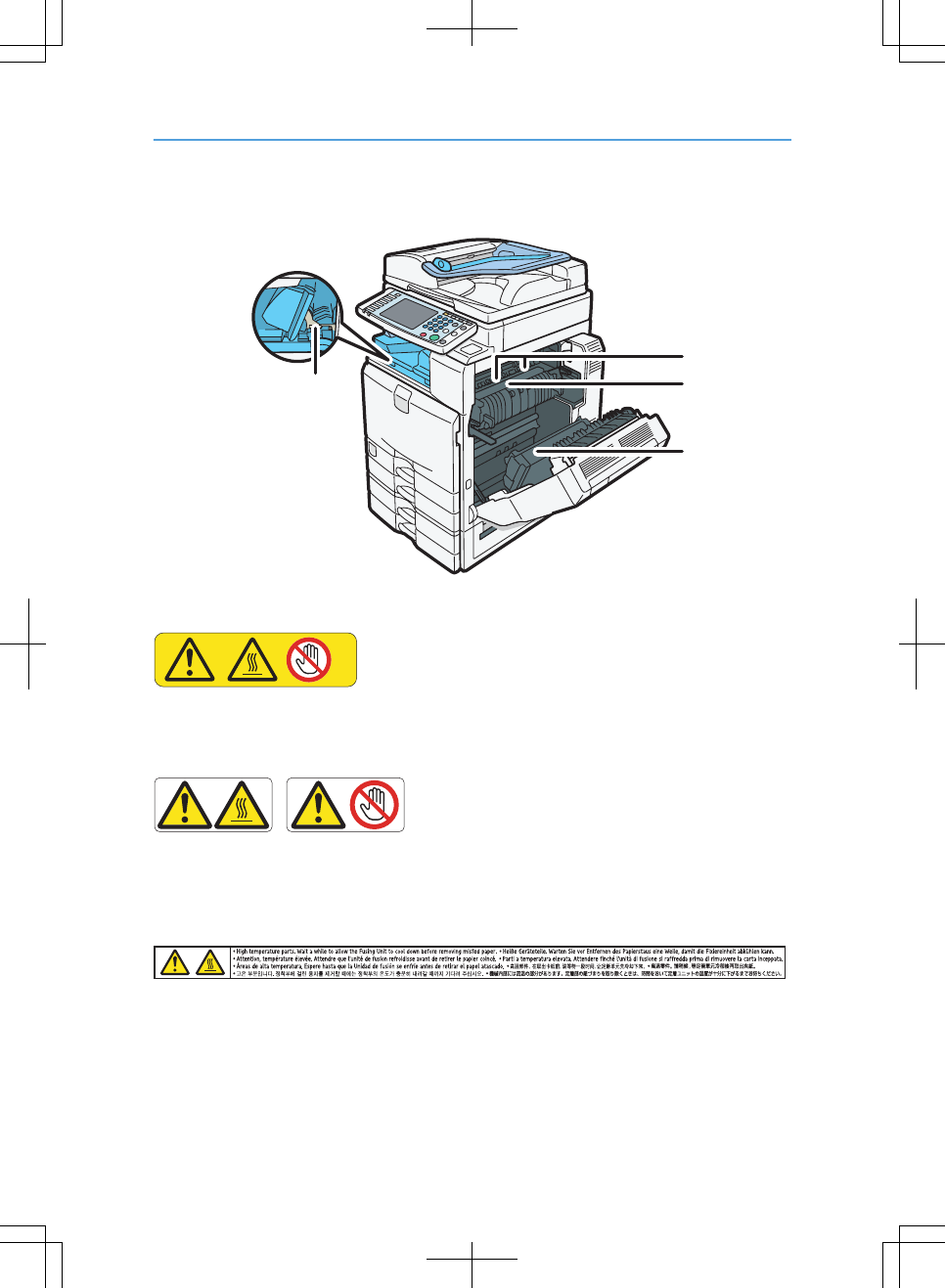
Main unit
CAS024
3
2
1
4
1
CAS015
Do not touch! Surface may be very hot.
2
CAS025
Do not touch the parts a label indicates. The inside of the machine could be very hot. Caution should be
taken when removing misfed paper.
3
CAS016
High temperature parts. Wait a while to allow the Fusing Unit to cool down before removing misfed paper.
4
34
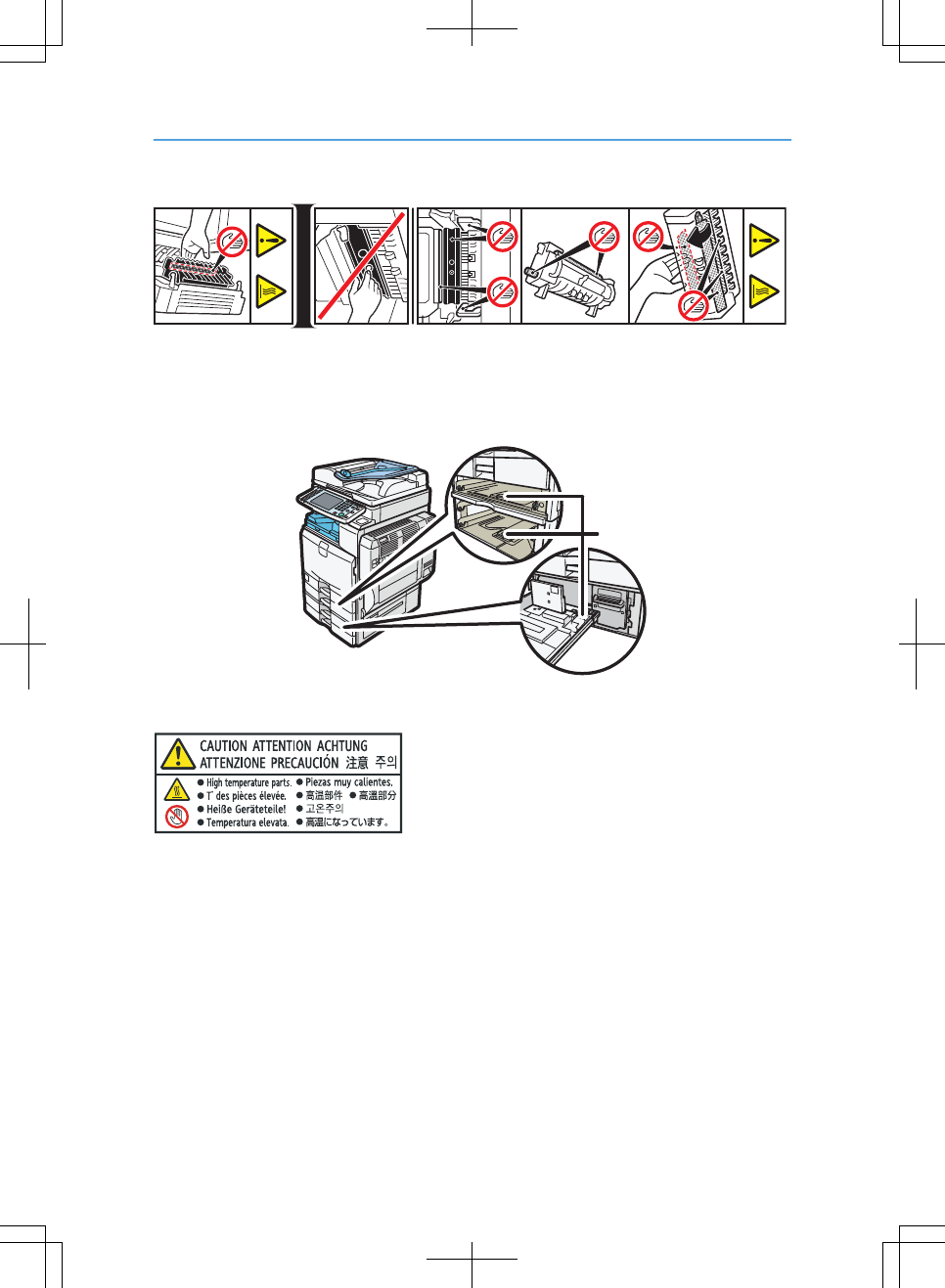
CAS017
Do not touch the parts a label indicates. The inside of the machine could be very hot. Caution should be
taken when removing misfed paper.
Paper tray
CAS026
5
5
CAS020
The inside of the machine could be very hot. Do not touch the parts which a label is put on. Otherwise, an
injury might occur.
35
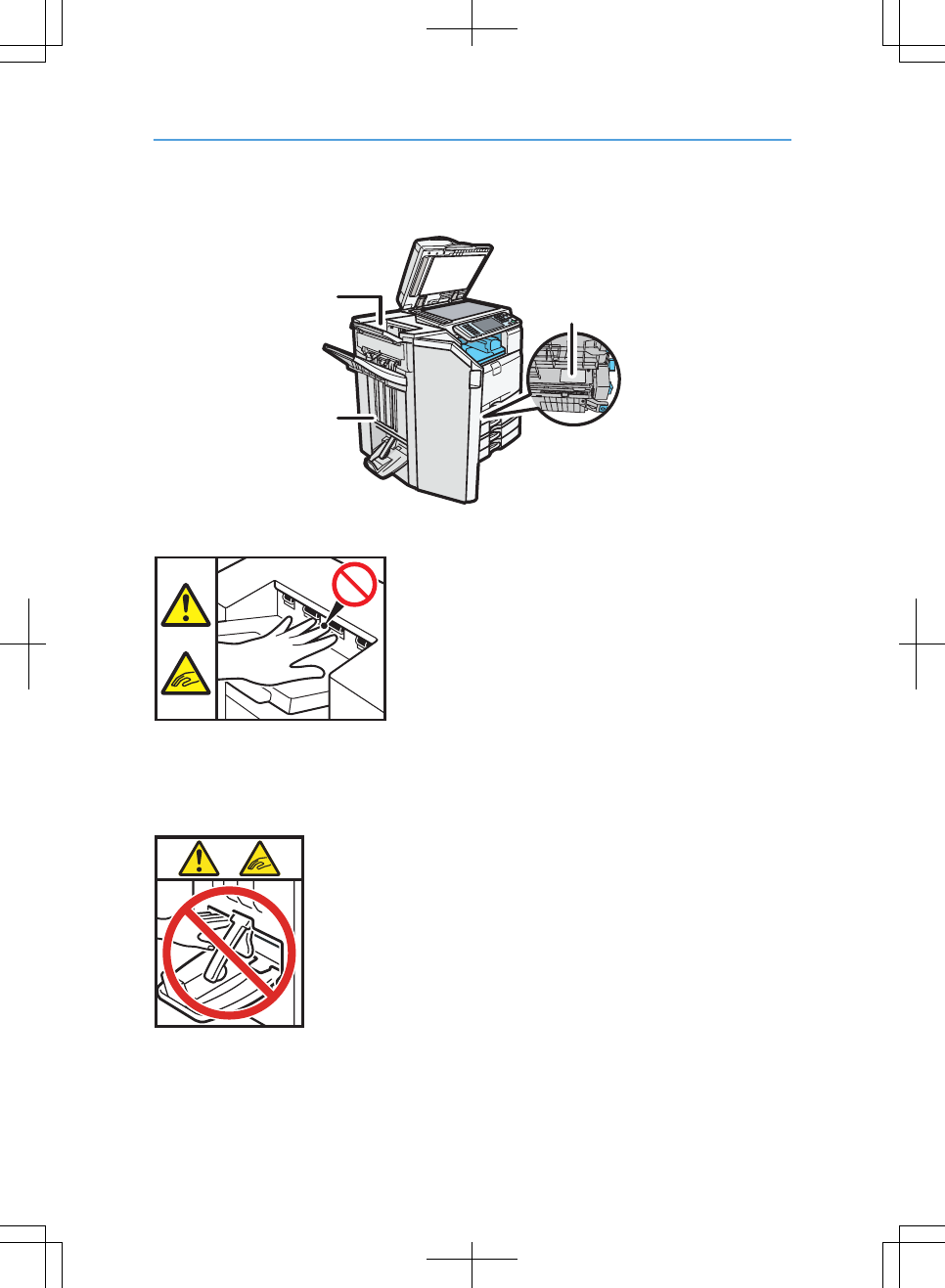
Finisher SR3030 or Booklet Finisher SR3020
CAS027
7
6
8
6
CAS128
During operation, rollers for transporting the paper revolve. Take care not to touch rollers during operation.
Otherwise, an injury might occur.
7
CAS022
Keep your hands clear of the booklet finisher tray when pulling out or pushing in the finisher's staple unit,
or removing paper jam. You might trap your fingers if you do not. Take care not to touch the booklet finisher
tray during operation. Otherwise, an injury might occur.
36
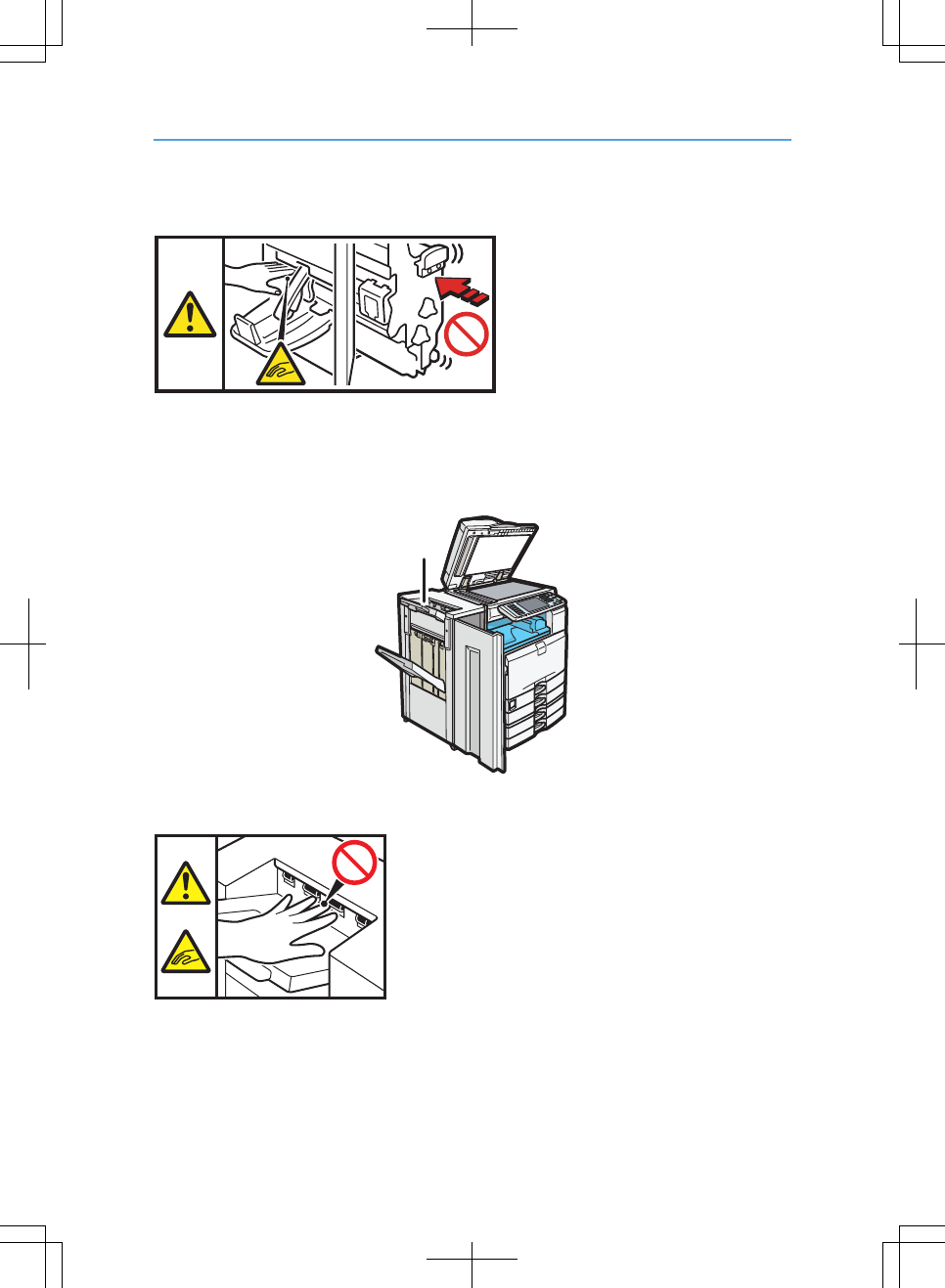
8
CAS023
Keep your hands clear of the booklet finisher tray when pulling out or pushing in the finisher's staple unit,
or removing paper jam. You might trap your fingers if you do not.
Finisher SR790
CAS126
9
9
CAS128
During operation, rollers for transporting the paper revolve. Take care not to touch rollers during operation.
Otherwise, an injury might occur.
37
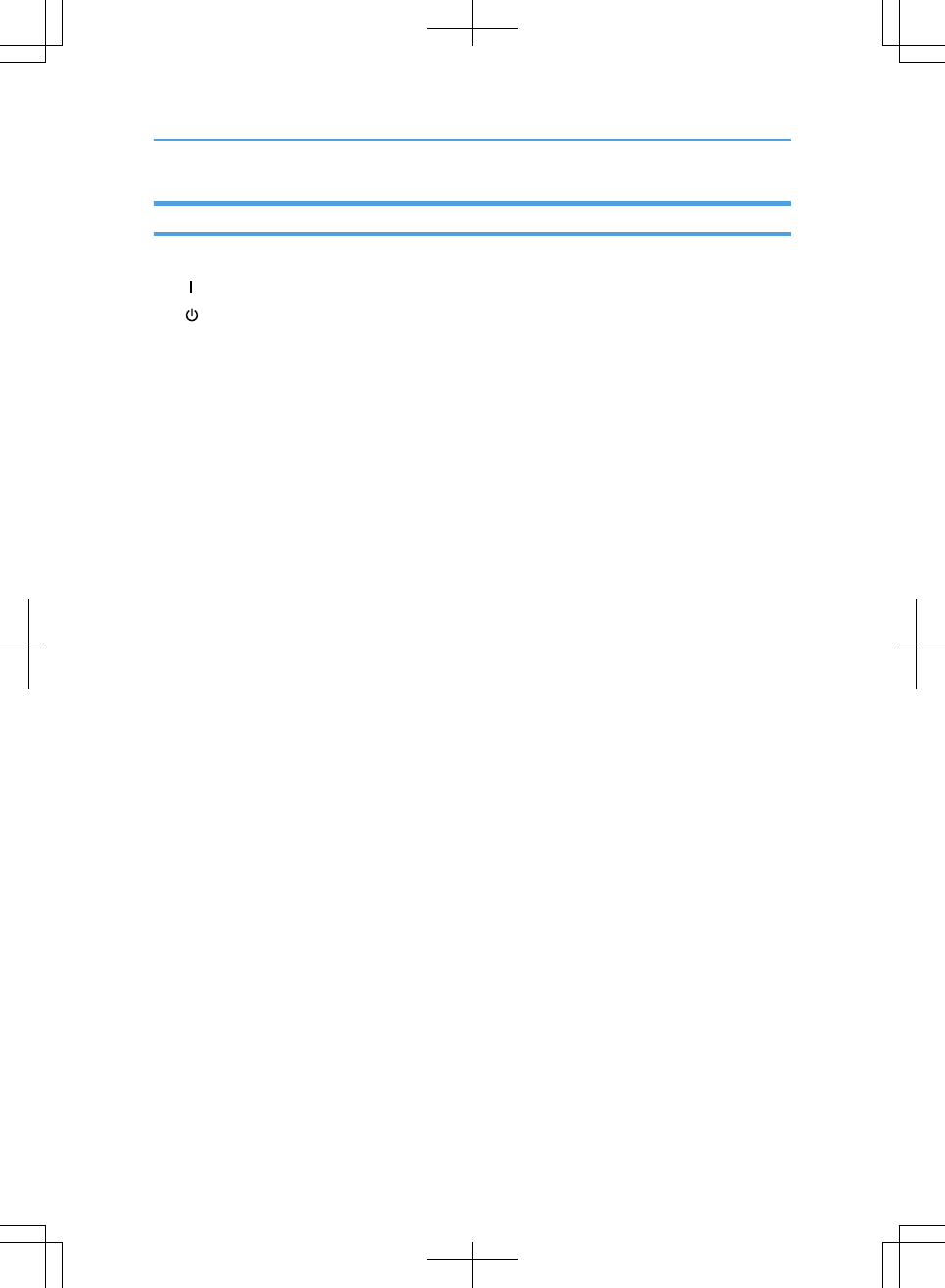
Power Switch Symbols
The meanings of the symbols for the switches on this machine are as follows:
• : POWER ON
• : STANDBY
38
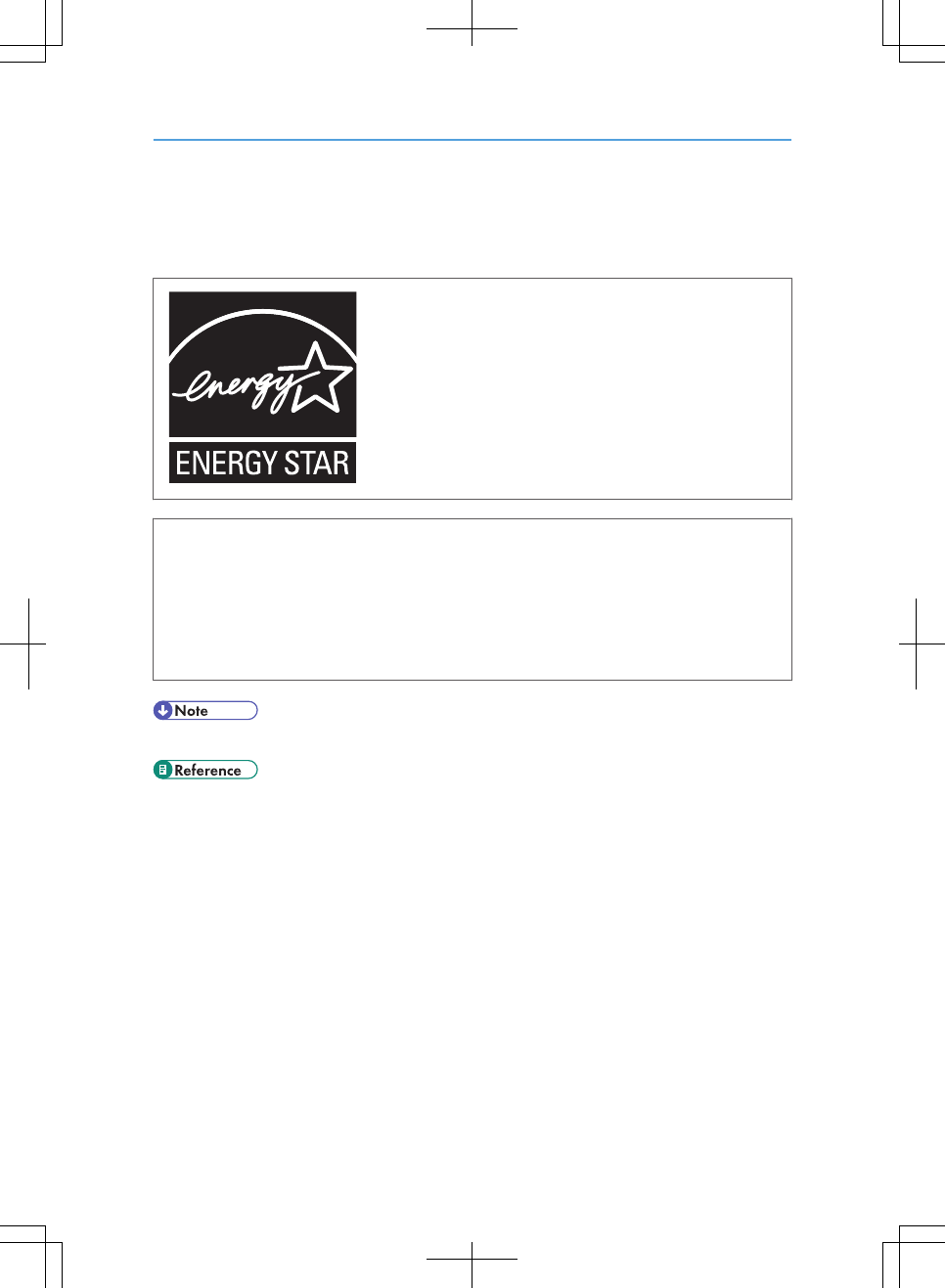
ENERGY STAR Program
ENERGY STAR® Program Requirements for Imaging Equipment
This company is a participant in the ENERGY STAR® Program.
This machine is compliant with the regulations specified by the
ENERGY STAR® Program.
The ENERGY STAR® Program Requirements for Imaging Equipment encourage energy conservation by
promoting energy efficient computers and other office equipment.
The program backs the development and dissemination of products that feature energy saving functions.
It is an open program in which manufacturers participate voluntarily.
Targeted products are computers, monitors, printers, facsimiles, copiers, scanners, and multi-function
devices. Energy Star standards and logos are internationally uniform.
• For details about the “default delay time”, see “Energy Saving Functions”.
• p.40 "Energy Saving Functions"
39
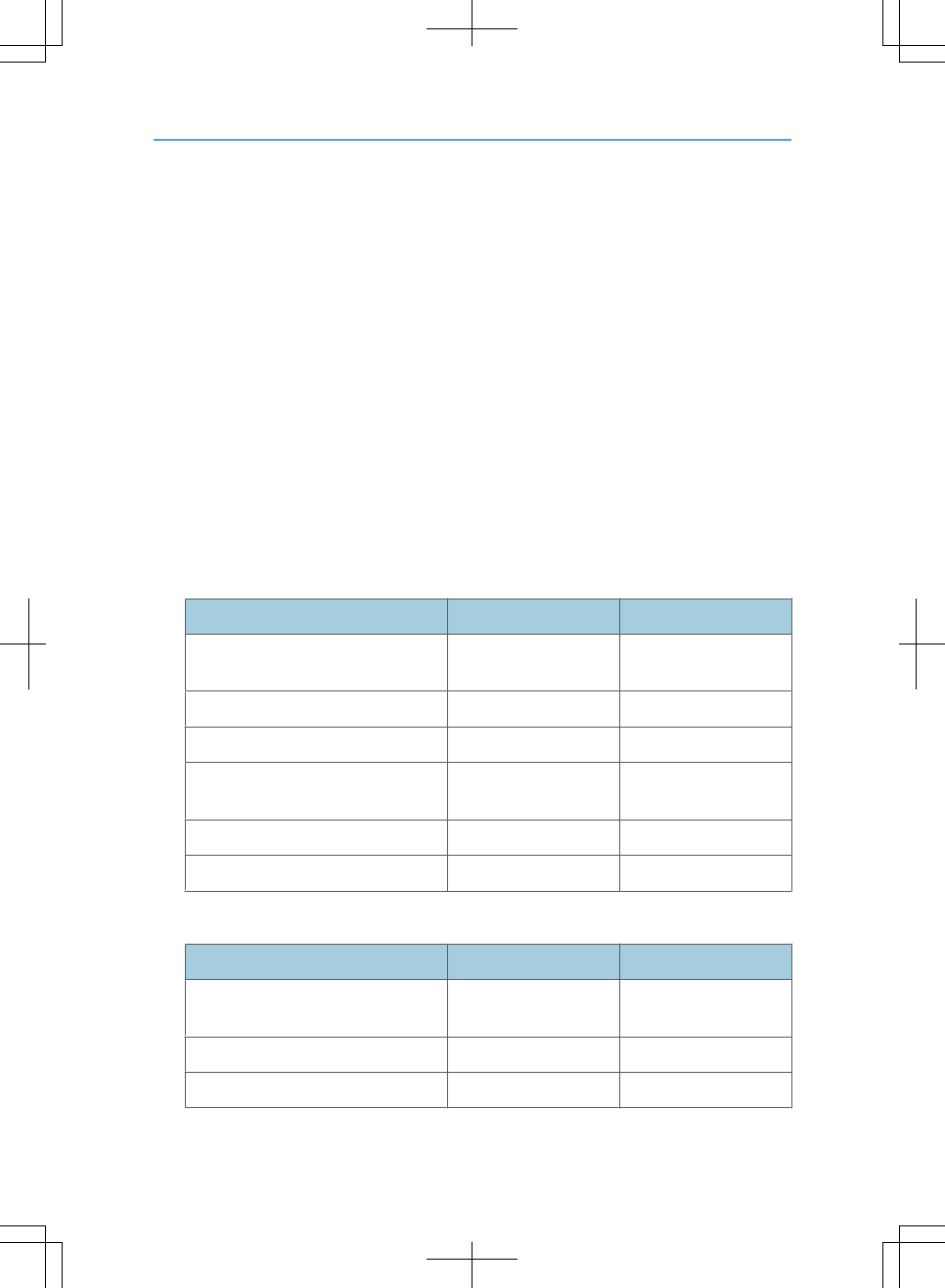
Energy Saving Functions
To reduce its power consumption, this machine has the following functions:
Low Power Mode
• If this machine remains idle for a specified period, it automatically reduces its electrical
consumption.
• The default period the machine waits before entering Low Power Mode is “Off”. This default
time can be changed.
Sleep Mode
• If this machine is already in Low Power Mode and remains idle for a specified period, it
automatically enters Sleep Mode to further reduce its electrical consumption.
• The default delay time the machine waits before entering Sleep Mode is 1 minute. This default
time can be changed.
• The machine can print jobs from computers and receive faxes while in Sleep Mode.
Specification for type 1 and 2
Type 1 Type 2
Reduced Electrical Consumption by Low
Power Mode
92 W 92 W
Time of Switch into Low Power Mode Off Off
Time of Switch out from Low Power Mode 6 seconds 6 seconds
Reduced Electrical Consumption by
Sleep Mode
1.2 W 1.2 W
Time of Switch into Sleep Mode 1 minute 1 minute
Time of Switch out from Sleep Mode 13 seconds 13 seconds
Specification for type 3 and 4
Type 3 Type 4
Reduced Electrical Consumption by Low
Power Mode
99 W 99 W
Time of Switch into Low Power Mode Off Off
Time of Switch out from Low Power Mode 10 seconds 10 seconds
40
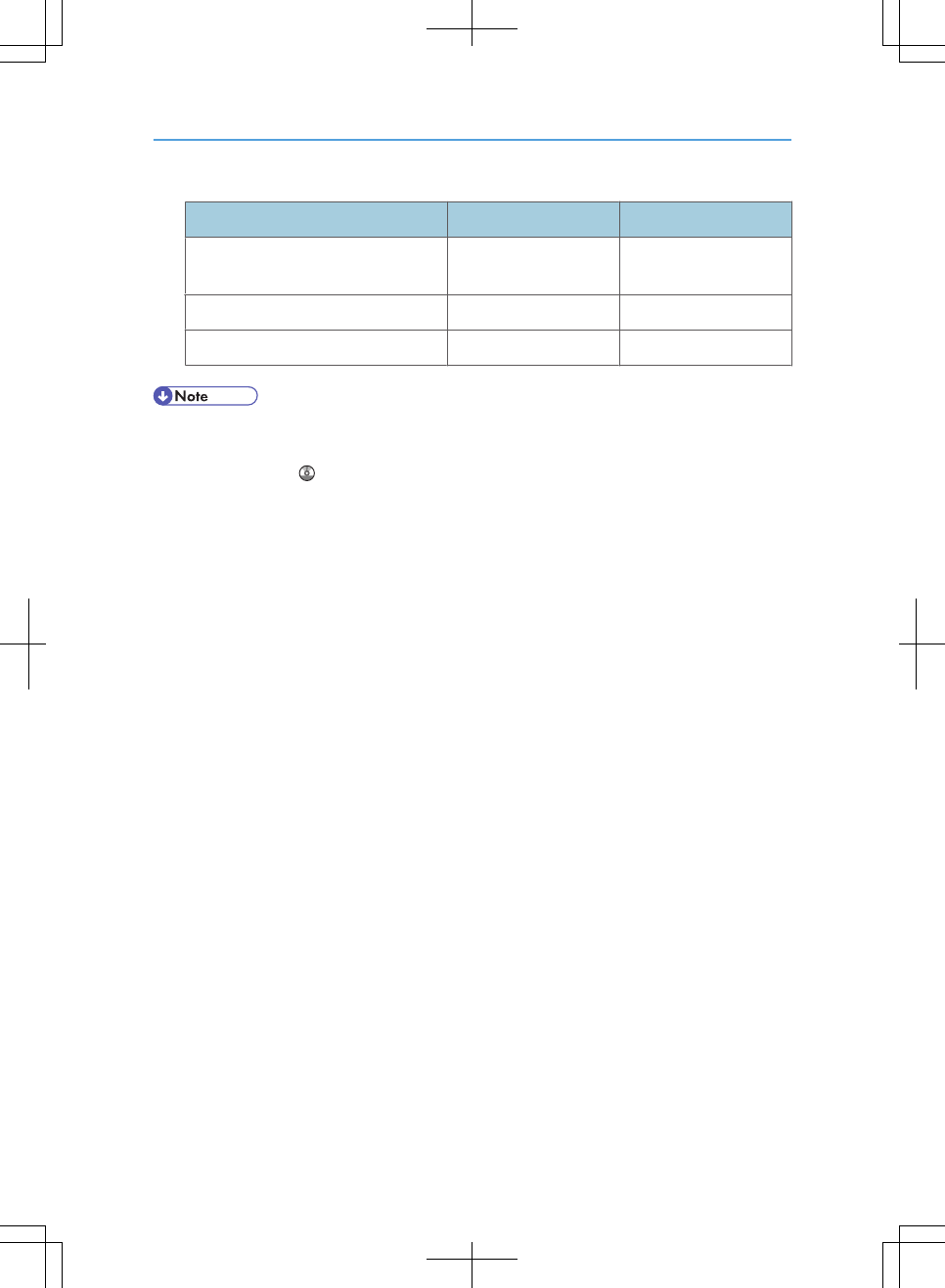
Type 3 Type 4
Reduced Electrical Consumption by
Sleep Mode
1.2 W 1.2 W
Time of Switch into Sleep Mode 1 minute 1 minute
Time of Switch out from Sleep Mode 19 seconds 32 seconds
• Specifications can vary depending on which options are installed on the machine.
• For details about how to change the default interval, see “Timer Settings”, Network and System
Settings Reference .
• Depending on which Embedded Software Architecture application is installed on it, the machine might
take longer than indicated to enter Sleep Mode.
41
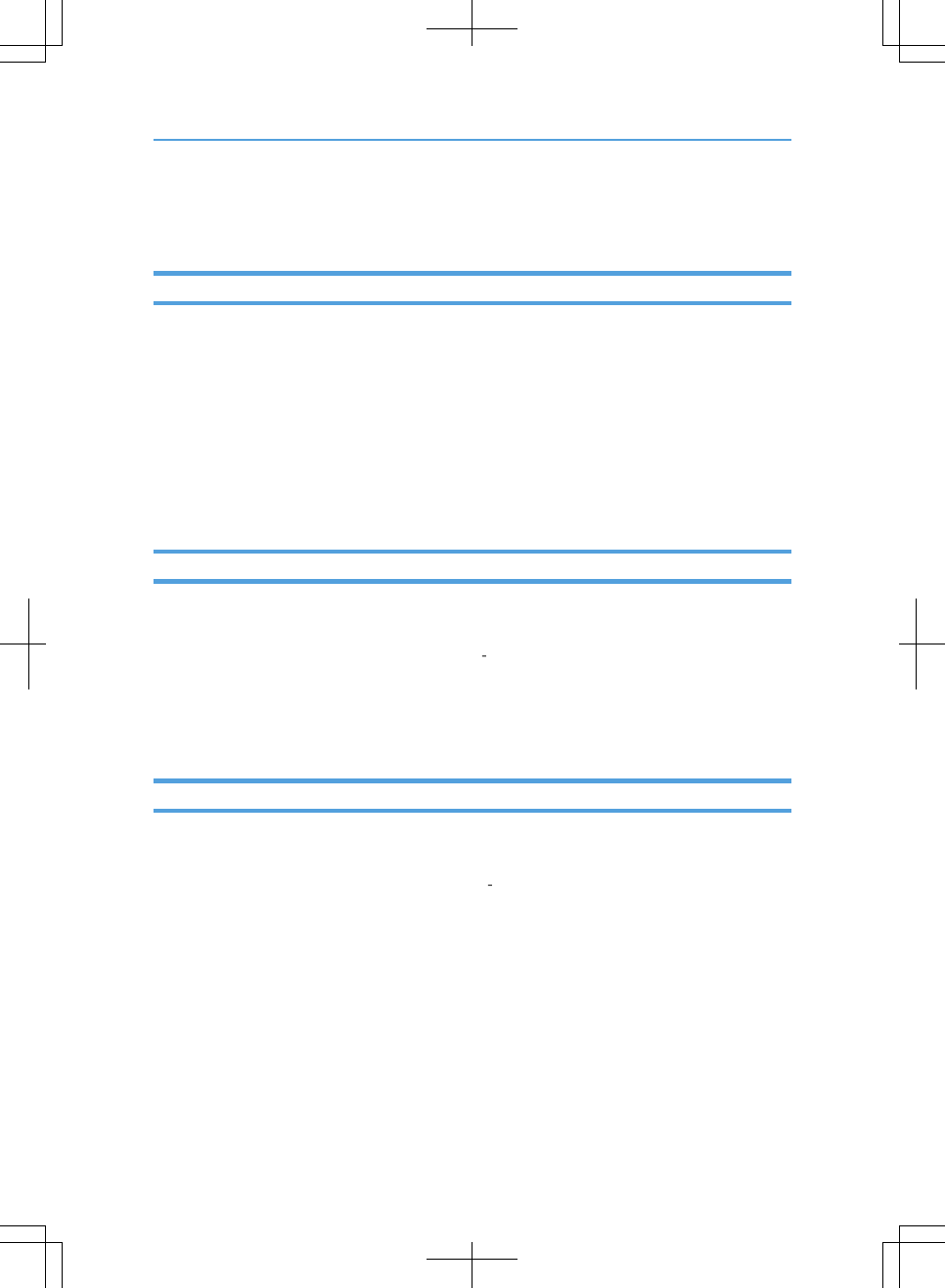
Laws and Regulations
Legal Prohibition
Do not copy or print any item for which reproduction is prohibited by law.
Copying or printing the following items is generally prohibited by local law:
bank notes, revenue stamps, bonds, stock certificates, bank drafts, checks, passports, driver's licenses.
The preceding list is meant as a guide only and is not inclusive. We assume no responsibility for its
completeness or accuracy. If you have any questions concerning the legality of copying or printing certain
items, consult with your legal advisor.
This machine is equipped with a function that prevents making counterfeit bank bills. Due to this function
the original images similar to bank bills may not be copied properly.
Laser Safety for Users of Type 1 and 2
CDRH Regulations
This equipment complies with requirements of 21 CFR subchapter J for class I laser products. This equipment
contains four AlGaInP laser diodes, 9 milliwatts, 648 663 nanometer wavelength for each emitter.
Caution:
Use of controls or adjustments or performance of procedures other than those specified in this manual might
result in hazardous radiation exposure.
Laser Safety for Users of Type 3 and 4
CDRH Regulations
This equipment complies with requirements of 21 CFR subchapter J for class I laser products. This equipment
contains eight AlGaInP laser diodes, 9 milliwatts, 648 663 nanometer wavelength for each emitter.
Caution:
Use of controls or adjustments or performance of procedures other than those specified in this manual might
result in hazardous radiation exposure.
42
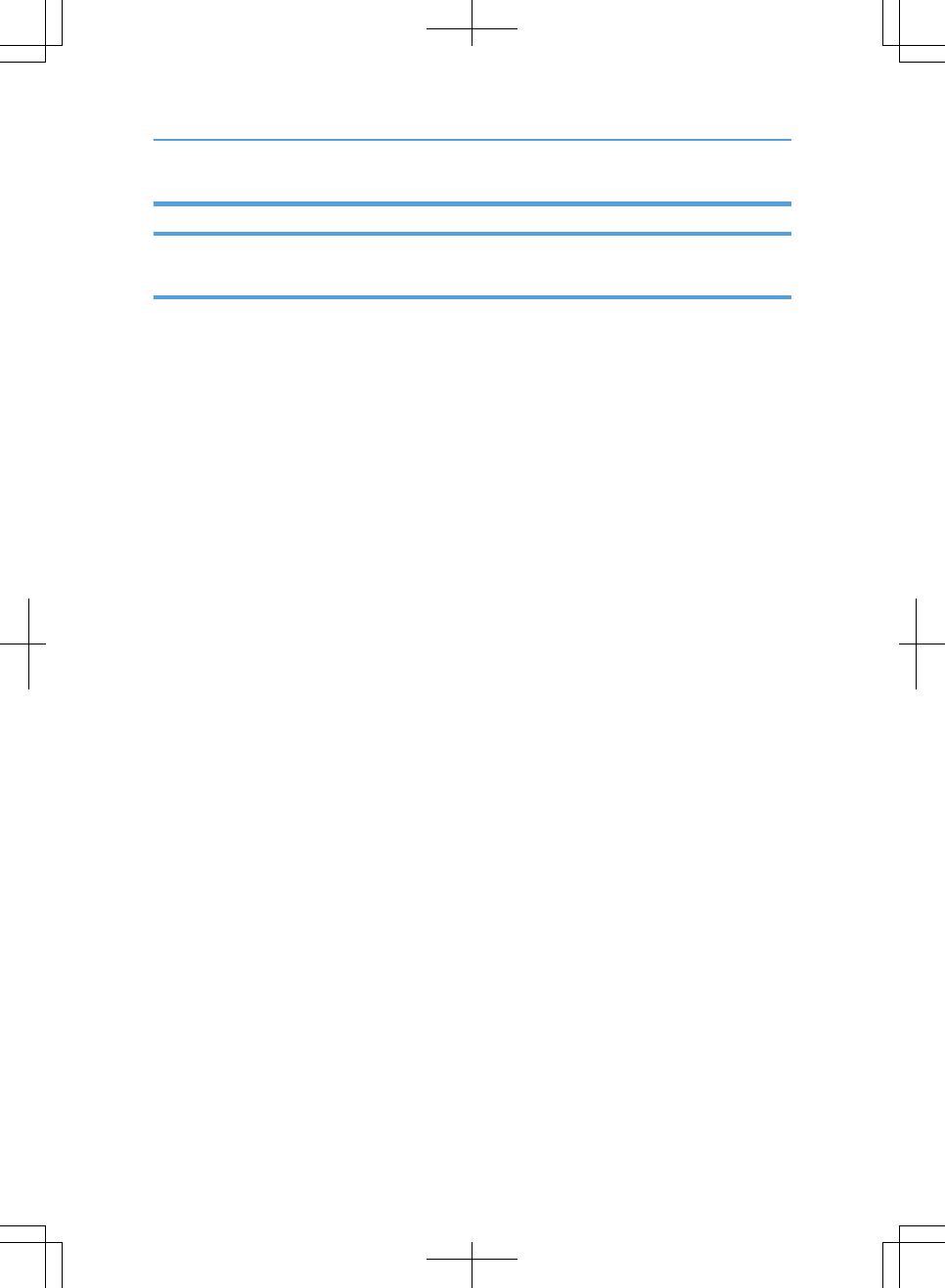
Notes to users in the United States of America
FCC Rules and IC Rules
Declaration of Conformity
This device complies with Part 15 of the FCC Rules and RSS-Gen of IC Rules.
Operation is subject to the following two conditions:
(1) This device may not cause harmful interference, and
(2) this device must accept any interference received, including interference that may cause undesired
operation.
Responsible party: Ricoh Americas Corporation
Address: 5 Dedrick Place, West Caldwell, NJ 07006
Telephone number: 973-882-2000
Product Name: Multi Function Peripheral
Model Number:
• C9130/LD630C/Aficio MP C3001
• C9135/LD635C/Aficio MP C3501
• C9130G/LD630CG/Aficio MP C3001G
• C9135G/LD635CG/Aficio MP C3501G
• C9145/LD645C/Aficio MP C4501
• C9155/LD655C/Aficio MP C5501
• C9145G/LD645CG/Aficio MP C4501G
• C9155G/LD655CG/Aficio MP C5501G
Note:
This equipment has been tested and found to comply with the limits for a Class B digital device, pursuant
to Part 15 of the FCC Rules. These limits are designed to provide reasonable protection against harmful
interference in a residential installation. This equipment generates, uses and can radiate radio
frequency energy and, if not installed and used in accordance with the instructions, may cause harmful
interference to radio communications. However, there is no guarantee that interference will not occur
in a particular installation. If this equipment does cause harmful interference to radio or television
reception, which can be determined by turning the equipment off and on, the user is encouraged to
try to correct the interference by one or more of the following measures:
• Reorient or relocate the receiving antenna.
• Increase the separation between the equipment and receiver.
• Connect the equipment into an outlet on a circuit different from that to which the receiver is
connected.
43
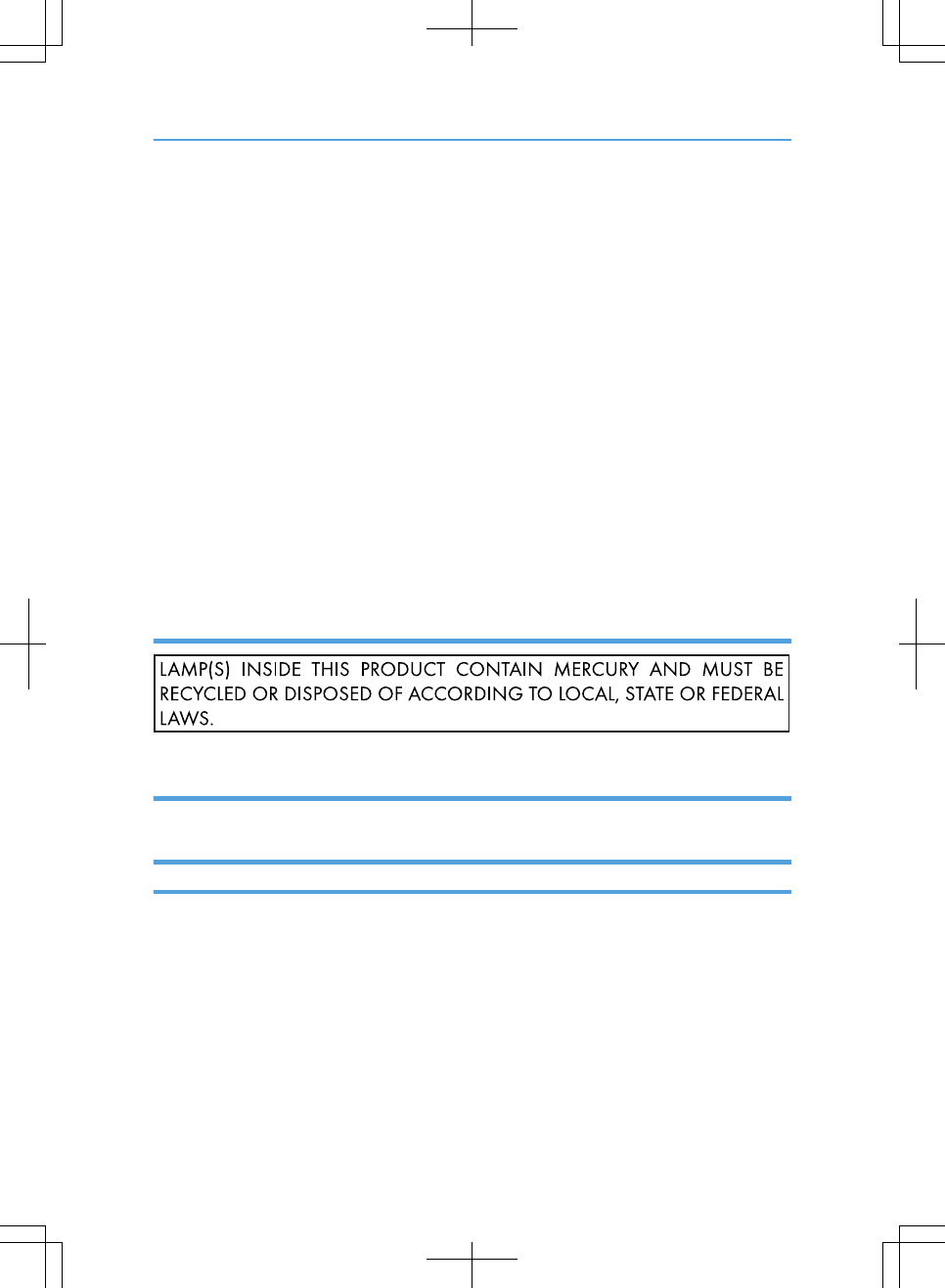
• Consult the dealer or an experienced radio /TV technician for help.
Caution:
Changes or modifications not expressly approved by the party responsible for compliance could void
the user's authority to operate the equipment.
Warning:
This device complies with part 15 and 18 of the FCC Rules and RSS-Gen of IC Rules.
Operation is subject to the following two conditions:
(1) This device may not cause harmful interference, and
(2) This device must accept any interference received, including interference that may cause undesired
operation.
Changes or modifications not expressly approved by the party responsible for compliance could void
the user's authority to operate the equipment.
This device must not be co-located or operated in conjunction with any other antenna or transmitter
except for Wireless LAN module R-WL54MN (FCC ID: BBP-WLRWL541) and Bluetooth module
BL-63101 (FCC ID: NXXBL-631) which performed colocation testing.
Notes on lamp(s) inside this machine
Notes to users in the state of California
Perchlorate Material - special handling may apply, See www.dtsc.ca.gov/hazardouswaste/perchlorate
Important Safety Instructions
When using your telephone equipment, basic safety precautions should always be followed to reduce the
risk of fire, electric shock and injury to persons, including the following:
• Do not use this product near water, for example, near a bath tub, wash bowl, kitchen sink or laundry
tub, in a wet basement or near a swimming pool.
• Avoid using a telephone during an electrical storm. There may be a remote risk of electric shock from
lightning.
• Do not use a telephone in the vicinity of a gas leak to report the leak.
• Use only the power cord and batteries indicated in this manual. Do not dispose of batteries in a fire.
They may explode. Check with local codes for possible special disposal instructions.
44
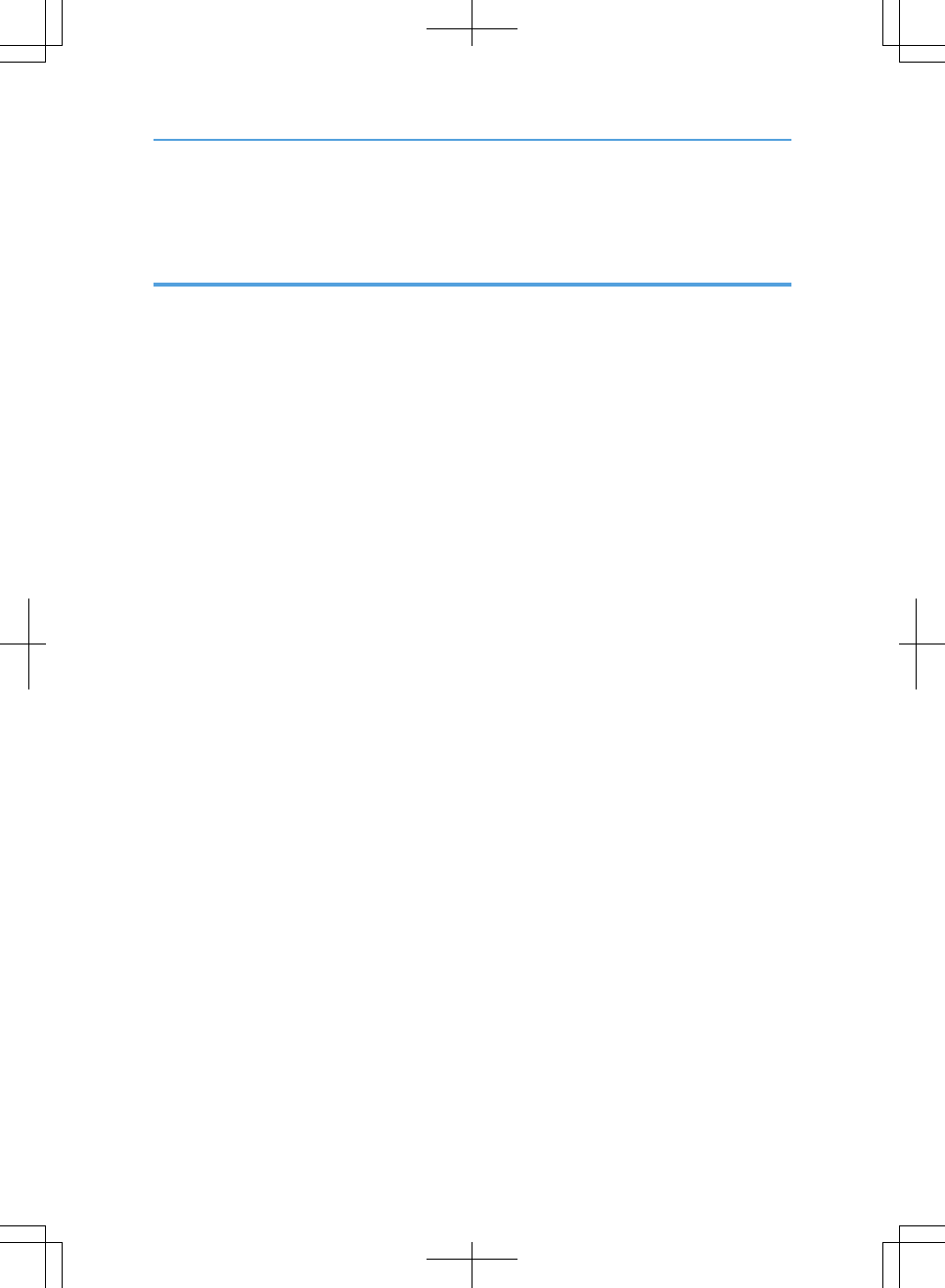
Save these instructions.
IMPORTANTES MESURES DE SÉCURITÉ
Certaines mesures de sécurité doivent être prises pendant l'utilisation de material téléphonique afin de
réduire les risques d'incendie, de choc électrique et de blessures. En voici quelques-unes:
• Ne pas utiliser l'appareil près de l'eau, p.ex., près d'une baignoire, d'un lavabo, d'un évier de cuisine,
d'un bac à laver, dans un sous-sol humide ou près d'une piscine.
• Éviter d'utiliser le téléphone (sauf s'il s'agit d'un appareil sans fil) pendant un orage électrique. Ceci
peut présenter un risque de choc électrique causé par la foudre.
• Ne pas utiliser l'appareil téléphonique pour signaler une fuite de gaz s'il est situé près de la fuite.
• Utiliser seulement le cordon d'alimentation et le type de piles indiqués dans ce manual. Ne pas jeter
les piles dans le feu: elles peuvent exploser. Se conformer aux règlements pertinents quant à
l'élimination des piles.
Conserver ces instructions.
45
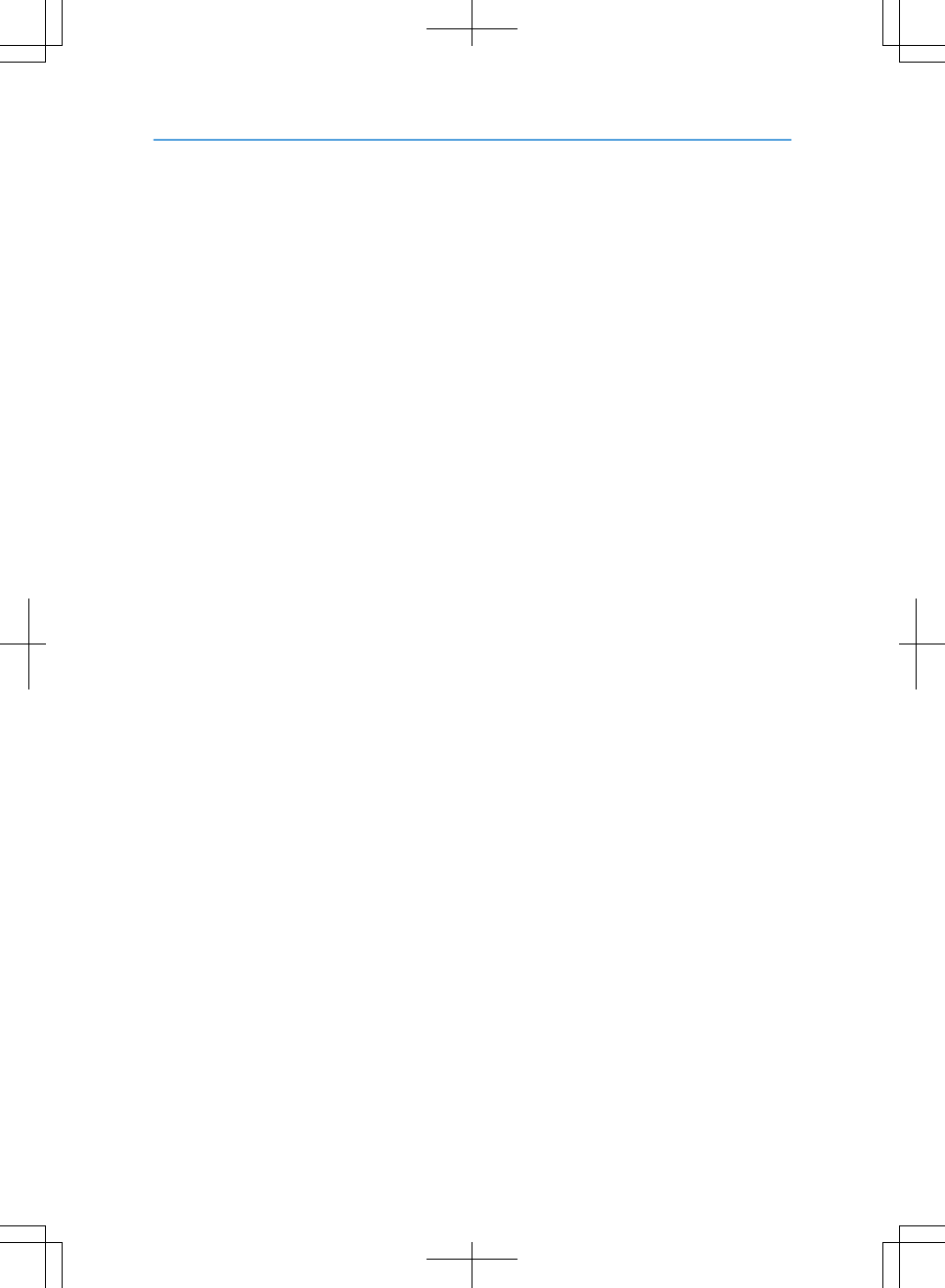
46
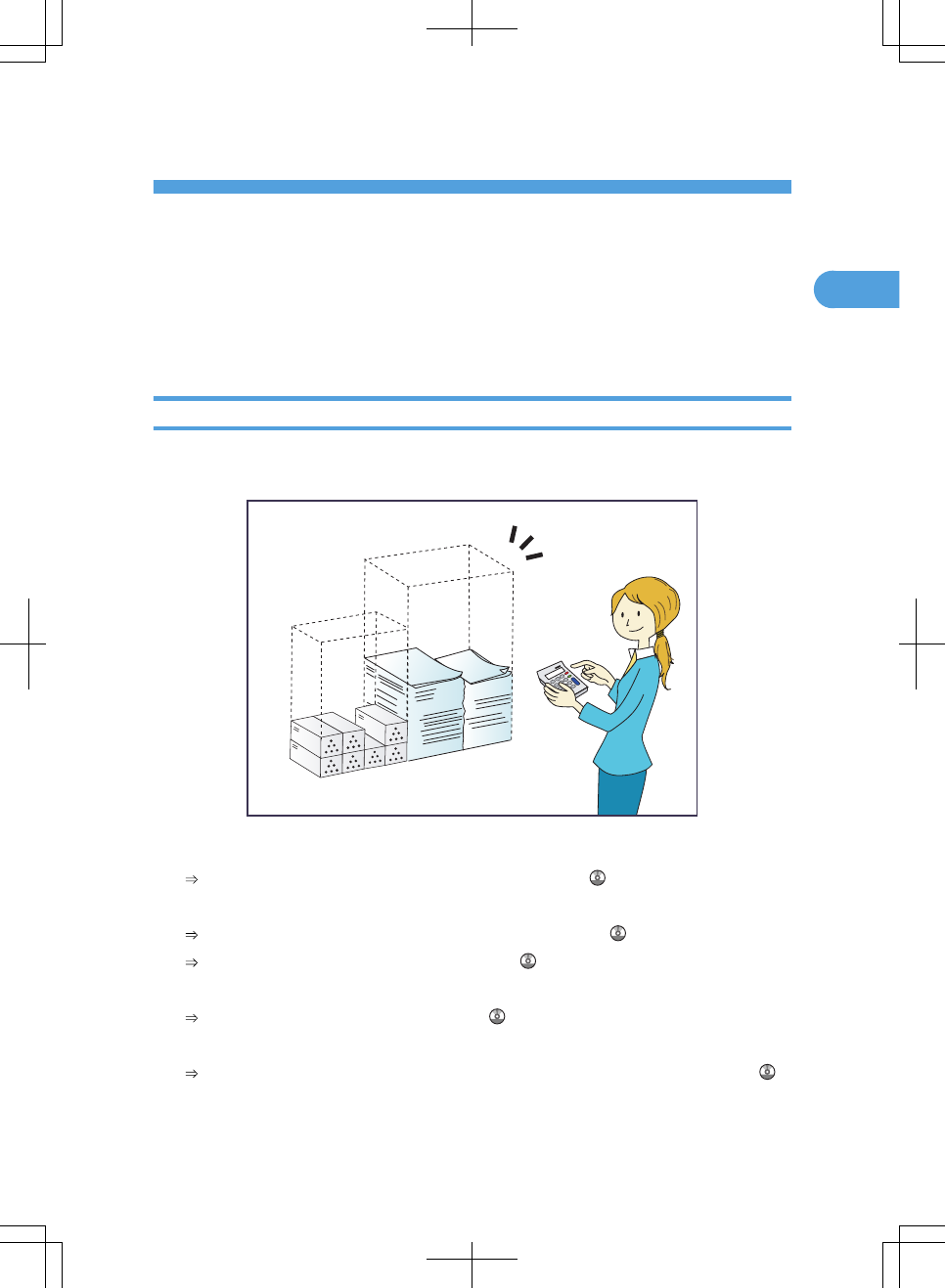
1. Simple Search
You can search for a procedure either by keyword or by what you want to do.
Searching by What You Want to Do
You can search for a procedure by what you want to do.
I Want to Save my Paper Document!
This section explains the functions and procedures that you can use to reduce your printing and running
costs easily.
BRL059S
Printing multi-page documents on both sides of sheets (Duplex Copy)
See “Duplex Copying”, Copy and Document Server Reference .
Printing multi-page documents and received faxes on a single sheet (Combine (Copier/Fax))
See “Combined Copying”, Copy and Document Server Reference .
See “Combine Two Originals”, Facsimile Reference .
Printing received faxes on both sides of sheets (2 Sided Print)
See “Two-Sided Printing”, Facsimile Reference .
Converting received faxes to electronic formats (Paperless Fax)
See “Confirming/Printing/Deleting Received and Stored Documents”, Facsimile Reference .
47
1
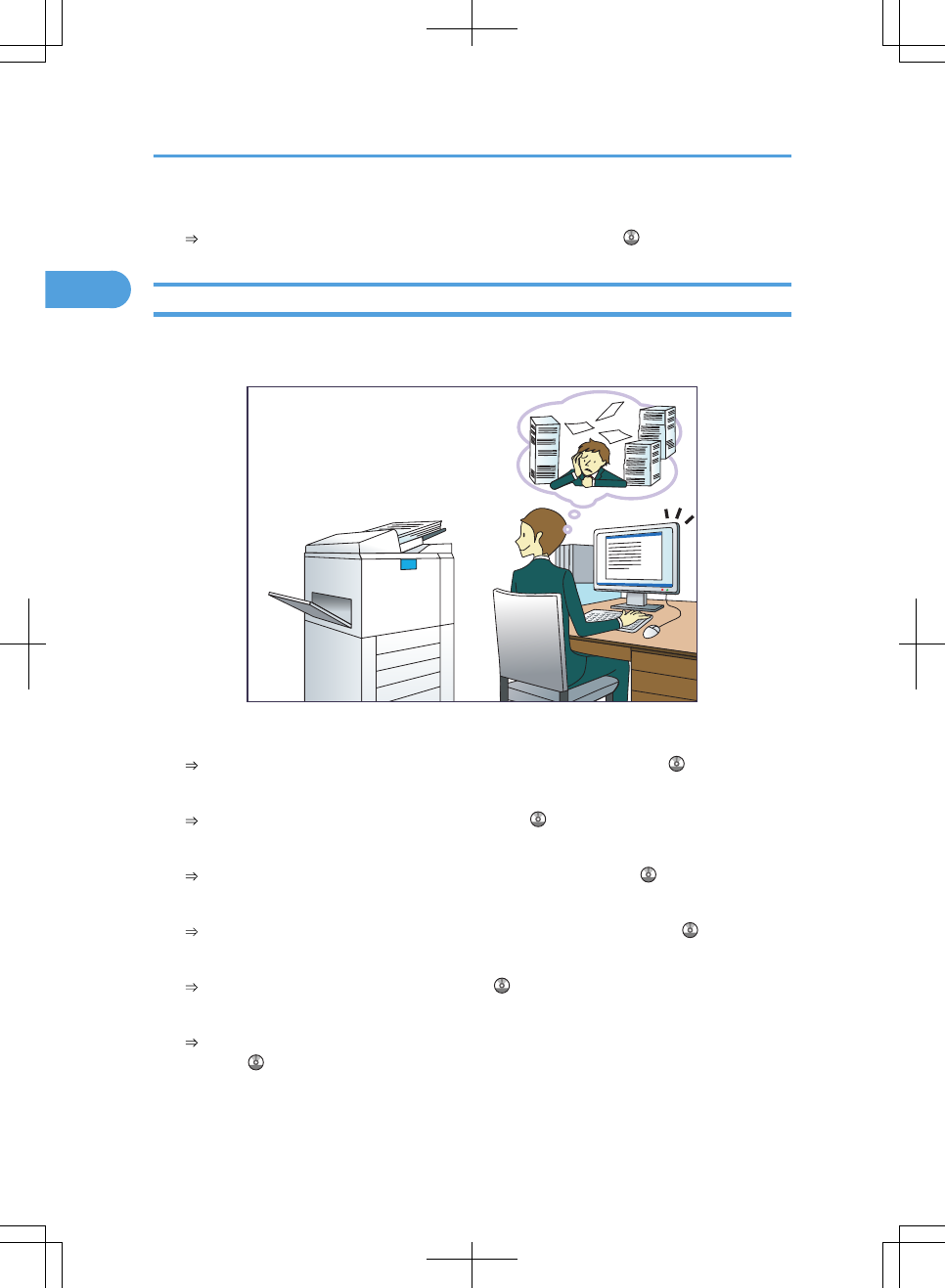
Sending files from the computer without printing them (LAN-Fax)
See “Sending Fax Documents from Computers”, Facsimile Reference .
I Want to Convert Documents to Electronic Formats Easily!
This section explains the functions and procedures you can use to convert documents to electronic formats
easily.
BQX138S
Sending scan files
See “Basic Procedure for Sending Scan Files by E-mail”, Scanner Reference .
Sending the URL of the folder in which scan files are stored
See “Sending the URL by E-mail”, Scanner Reference .
Storing scan files in a shared folder
See “Basic Procedure When Using Scan to Folder”, Scanner Reference .
Storing scan files on media
See “Saving Scan Files on a Removable Memory Device”, Scanner Reference .
Converting transmitted faxes to electronic formats and sending them to a computer
See “Folder Transmission”, Facsimile Reference .
Managing and using documents converted to electronic formats (Document Server)
See “Relationship between Document Server and Other Functions”, Copy and Document Server
Reference .
1. Simple Search
48
1
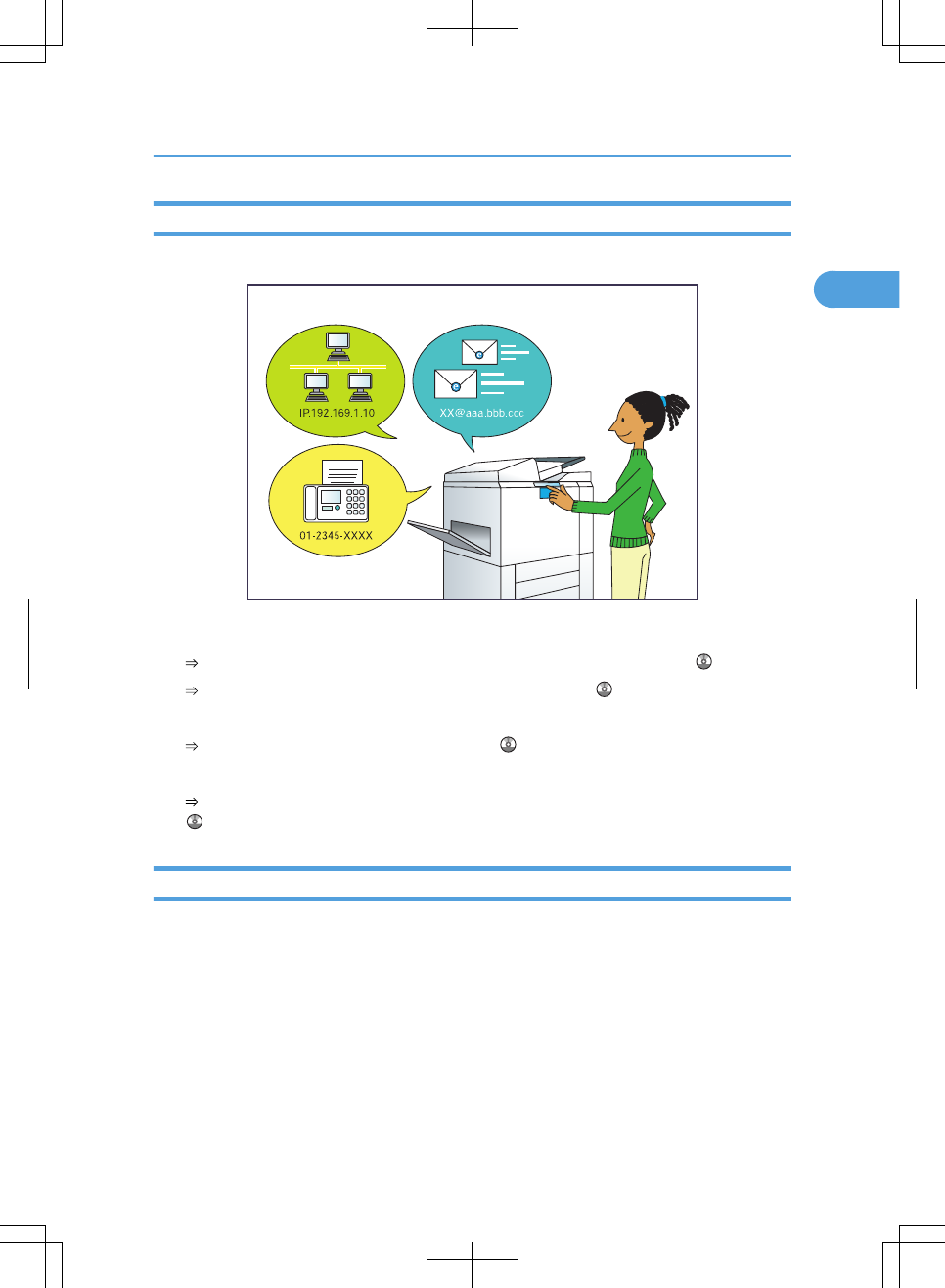
I Want to Register Destinations!
You can find explanations of the functions and procedures that you can use to register destinations easily.
BRL060S
Using the control panel to register destinations in the Address Book
See “Registering Entered Destinations to the Address Book”, Facsimile Reference .
See “Entering an E-mail Address Manually”, Scanner Reference .
Using Web Image Monitor to register destinations from a computer
See “To add new receiver”, Facsimile Reference .
Downloading destinations registered in the machine to the LAN-Fax driver destination list
See “Using the Machine's Address Book as the LAN-Fax Destination List”, Facsimile Reference
.
I Want to Operate the Machine More Effectively!
This section explains the functions and procedures that you can use to operate the machine more effectively.
Searching by What You Want to Do
49
1
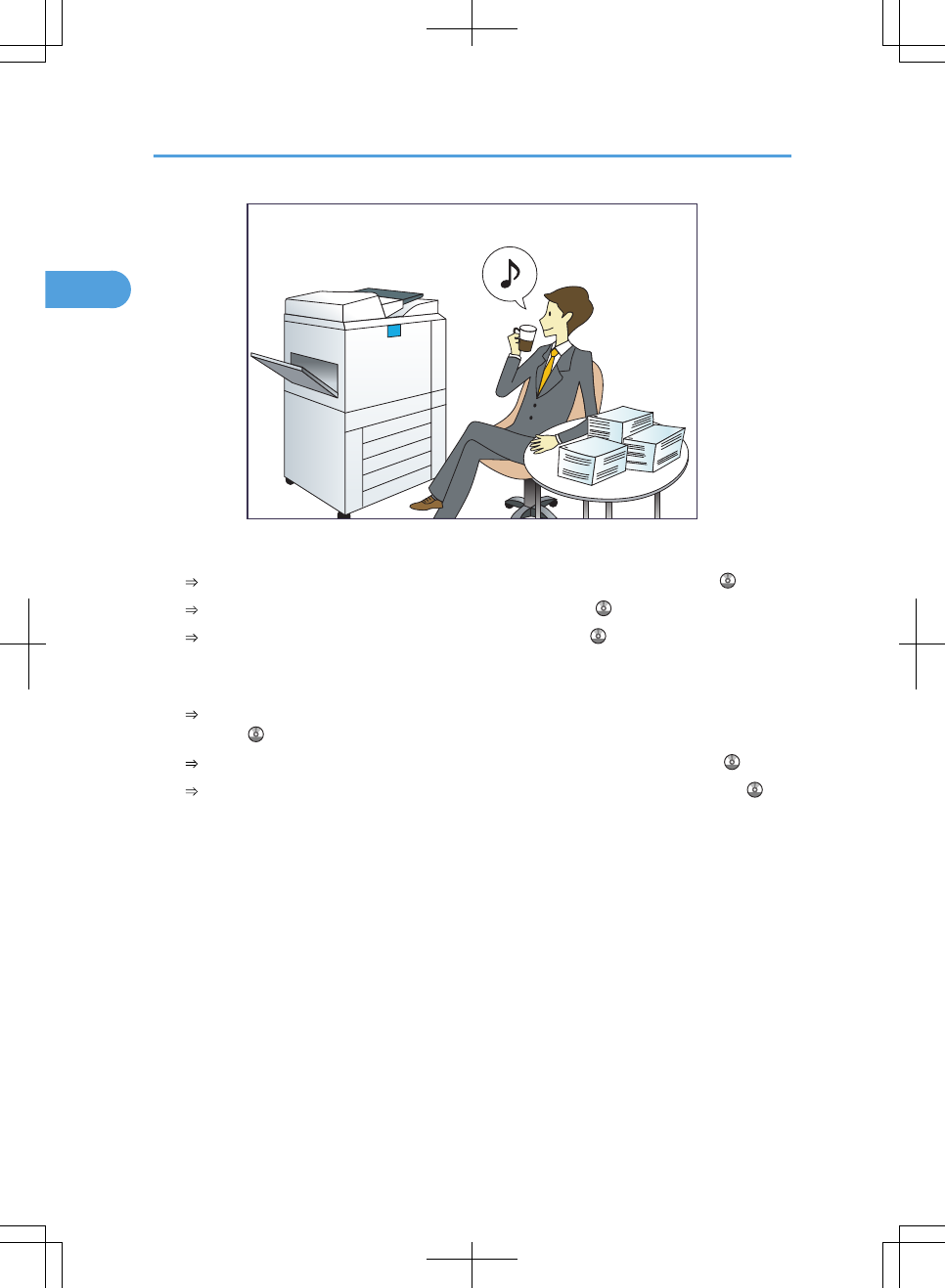
BQX139S
Registering and using frequently-used settings (Program)
See “Registering Frequently Used Functions”, Copy and Document Server Reference .
See “Registering Frequently Used Settings”, Facsimile Reference .
See “Registering Frequently Used Settings”, Scanner Reference .
Registering frequently-used settings as initial settings (Program as Defaults (Copier/Fax/
Scanner))
See “Changing the Default Functions of the Copy's Initial Display”, Copy and Document Server
Reference .
See “Changing the Default Functions of the Fax's Initial Display”, Facsimile Reference .
See “Changing the Default Functions of the Scanner's Initial Display”, Scanner Reference .
1. Simple Search
50
1
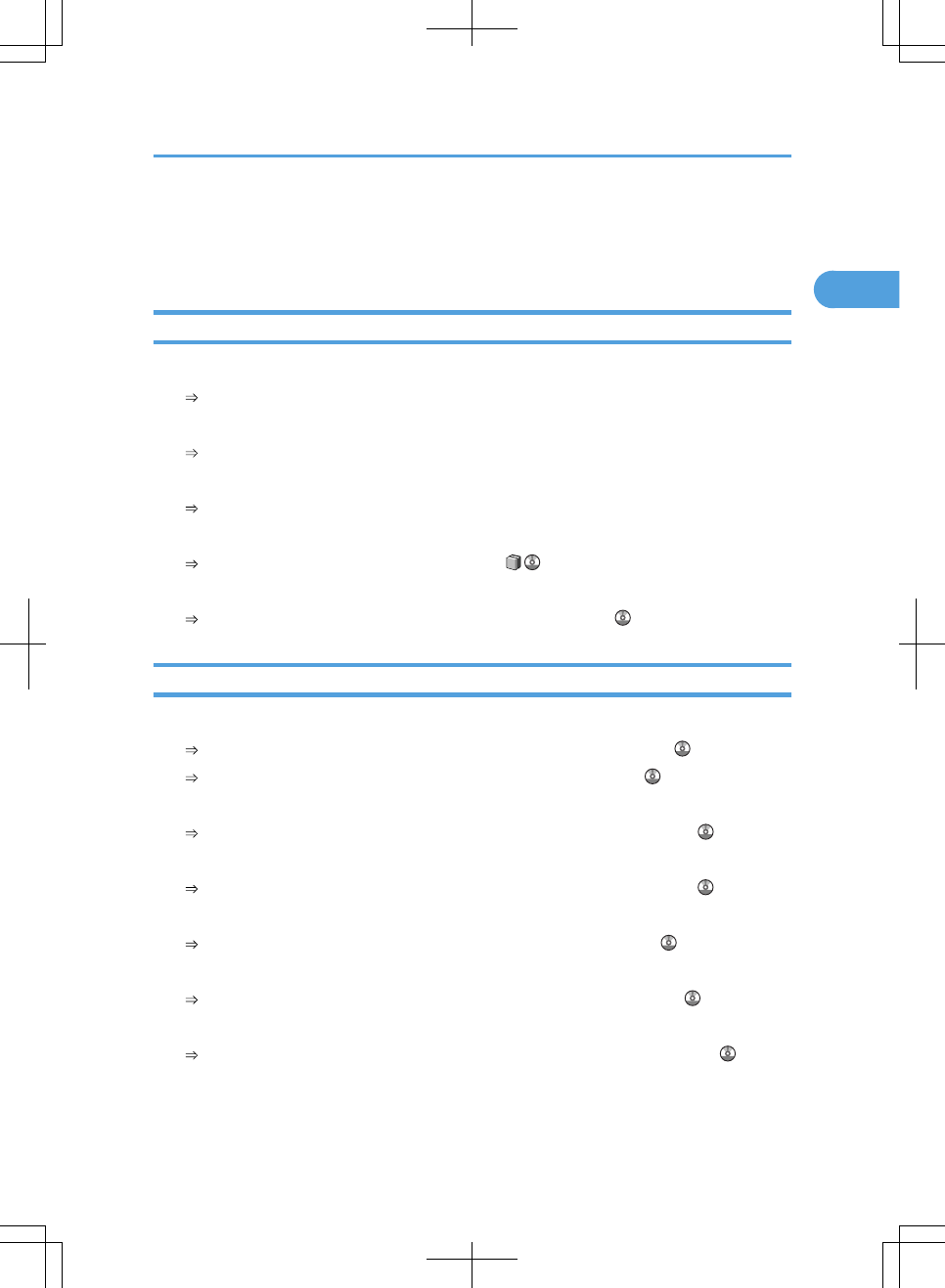
Searching by Keyword
You can search for a procedure by keyword.
Paper
I want to load paper.
p.91 "Loading Paper"
I want to change the paper size.
p.99 "Changing the Paper Size"
I want to know what the paper specifications are.
p.111 "Recommended Paper Sizes and Types"
The paper has jammed.
See “Removing Jammed Paper”, Troubleshooting .
I want to change the initial paper settings.
See “Tray Paper Settings”, Network and System Settings Reference .
Register/Change/Delete
I want to register a fax number.
See “Registering a Fax Destination”, Network and System Settings Reference .
See “Registering Destinations in the Address Book”, Facsimile Reference .
I want to register an IP-Fax number.
See “Registering an IP-Fax Destination”, Network and System Settings Reference .
I want to register an e-mail address.
See “Registering an E-mail Destination”, Network and System Settings Reference .
I want to register an SMB folder.
See “Registering an SMB Folder”, Network and System Settings Reference .
I want to register multiple addresses as a group.
See “Registering Names to a Group”, Network and System Settings Reference .
I want to register frequently-used copier functions.
See “Registering Frequently Used Functions”, Copy and Document Server Reference .
Searching by Keyword
51
1
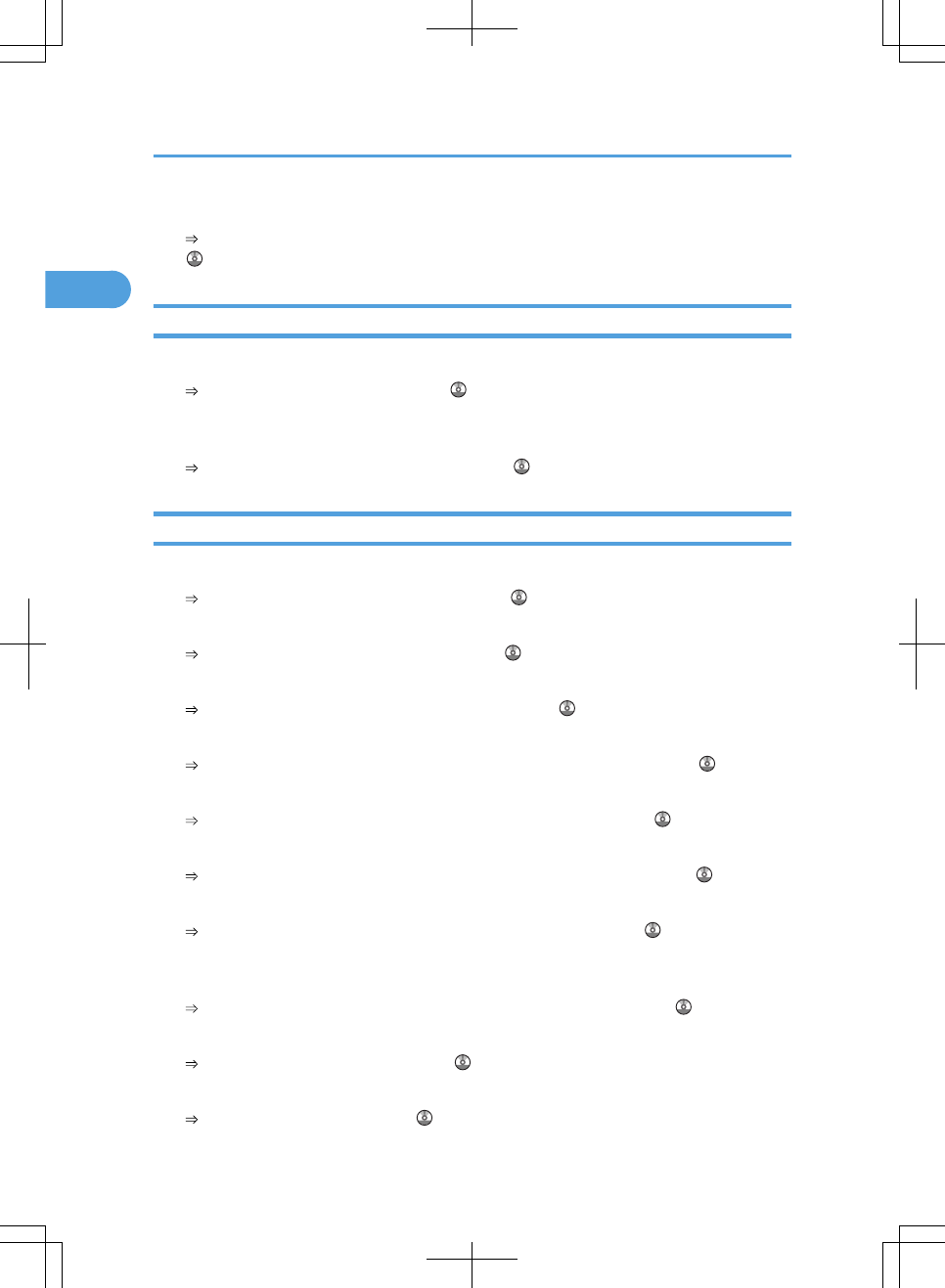
I want to copy the contents of the machine's Address Book to the LAN-Fax address book.
See “Using the Machine's Address Book as the LAN-Fax Destination List”, Facsimile Reference
.
Color
I want to scan a color original (Normal Color Scan)
See “Scan Settings”, Scanner Reference .
I want to minimize the amount of storage required when scanning color originals (High
Compression PDF)
See “Specifying the File Type”, Scanner Reference .
Check
I want to display the fax transmission status.
See “Confirming on Display”, Facsimile Reference .
I want to print a report of the fax transmission status.
See “Confirming by Report”, Facsimile Reference .
I want to check which destinations the machine failed to send faxes to.
See “Communication Failure Report”, Facsimile Reference .
I want to check which files have been sent by memory transmission.
See “Communication Result Report (Memory Transmission)”, Facsimile Reference .
I want to check which files are stored in the Document Server.
See “Using the Document Server”, Copy and Document Server Reference .
I want to check which faxes have been received.
See “Checking the Reception Result (Reception File Status)”, Facsimile Reference .
I want to view the received faxes that are stored in the machine.
See “Confirming Received and Stored Documents”, Facsimile Reference .
To avoid sending faxes to wrong destinations, I want to check fax transmission details before
sending.
See “Preventing Transmission to the Wrong Destination”, Facsimile Reference .
I want to check the settings for scanning and sending files before sending a scan file.
See “Check Modes”, Scanner Reference .
I want to check the scan image before sending it.
See “Preview”, Scanner Reference .
1. Simple Search
52
1
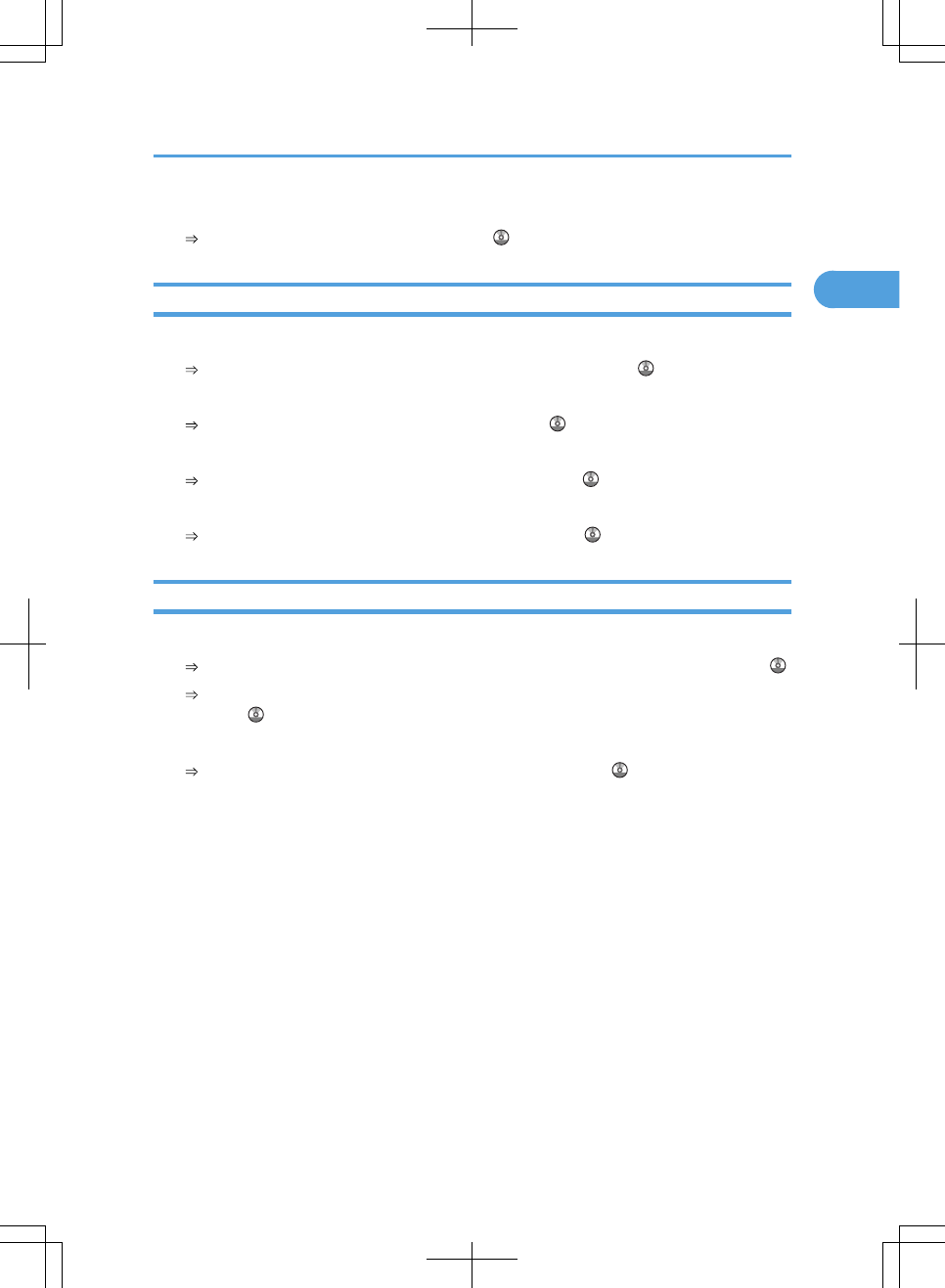
I want to view the transmission result.
See “Scanned Files Status”, Scanner Reference .
Install
I want to install the printer driver so I can use the SmartDeviceMonitor for Client port.
See “Using the Smart Device Monitor for Client Port”, Printer Reference .
I want to install the printer driver so I can use the Standard TCP/IP port.
See “Using the Standard TCP/IP Port”, Printer Reference .
I want to install the printer driver so I can use as a Windows Network Printer.
See “Using as a Windows Network Printer”, Printer Reference .
I want to install the printer driver so I can use the machine by USB.
See “Installing the Printer Driver Using USB”, Printer Reference .
Envelope
I want to copy onto envelopes.
See “Copying onto Envelopes from the Bypass Tray”, Copy and Document Server Reference .
See “Copying onto Envelopes from the Small Size Paper Tray”, Copy and Document Server
Reference .
I want to print onto envelopes.
See “Setting Envelopes Using the Control Panel”, Printer Reference .
Searching by Keyword
53
1
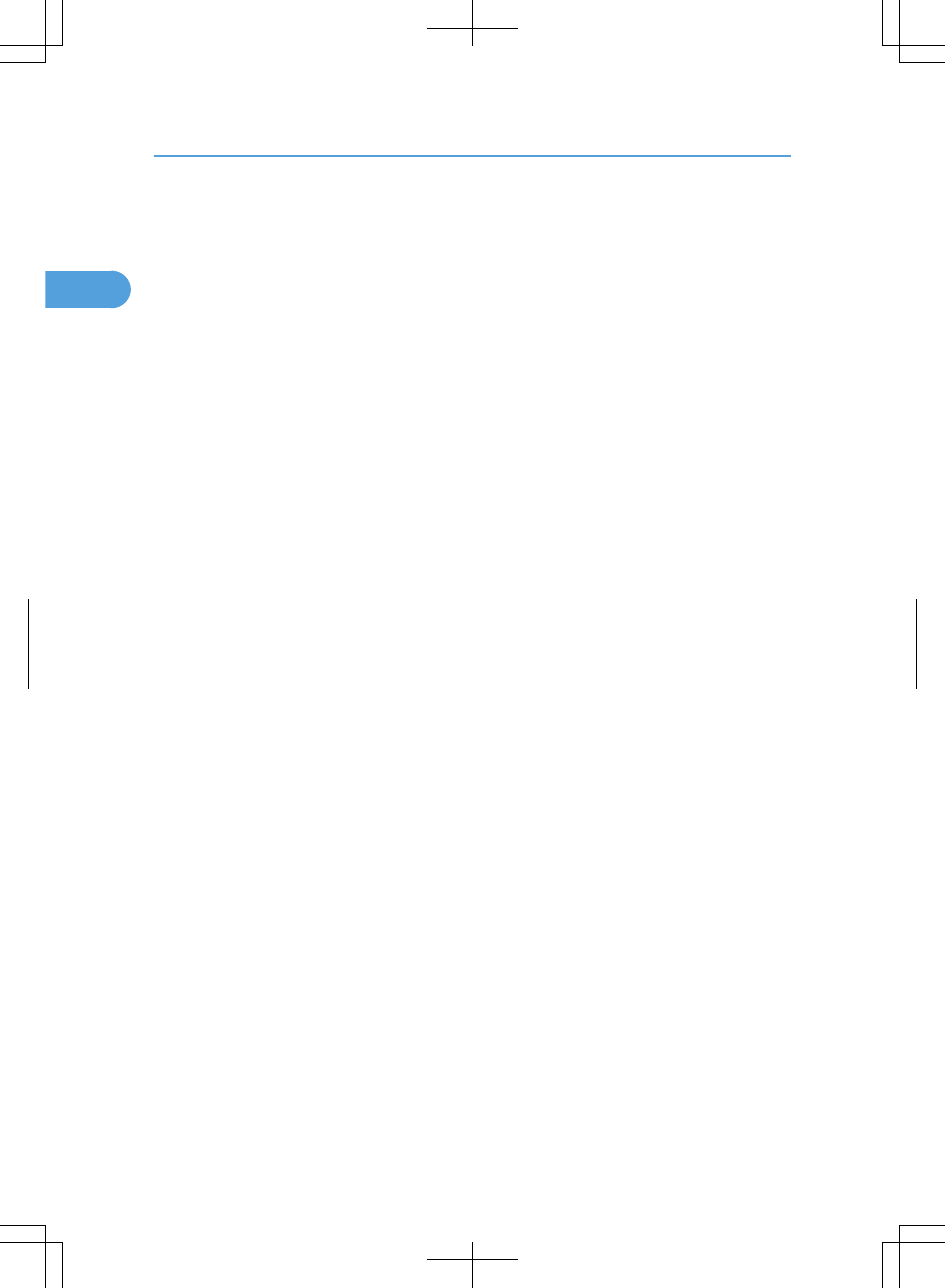
1. Simple Search
54
1
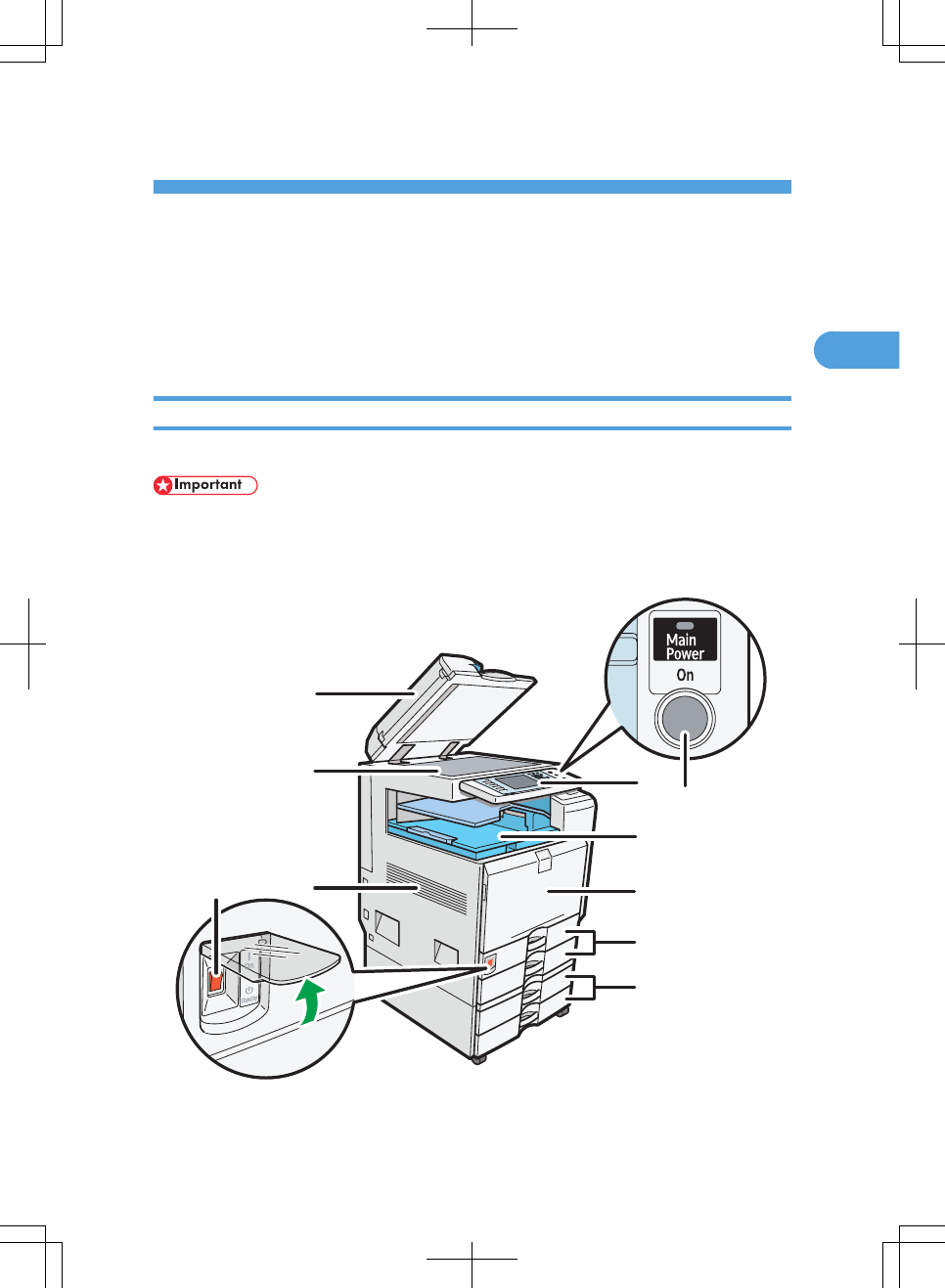
2. Getting Started
This chapter describes how to start using this machine.
Guide to Components
This section introduces the names and functions of the components.
Guide to Components of Type 1 and 2
This section introduces the names and functions of the components of type 1 and 2.
• Do not obstruct the ventilation holes by placing objects near them or leaning things against them. If
the machine overheats, a fault might occur.
Front and left view
CAS092
1
2
4
5
6
7
8
9
10
3
55
2
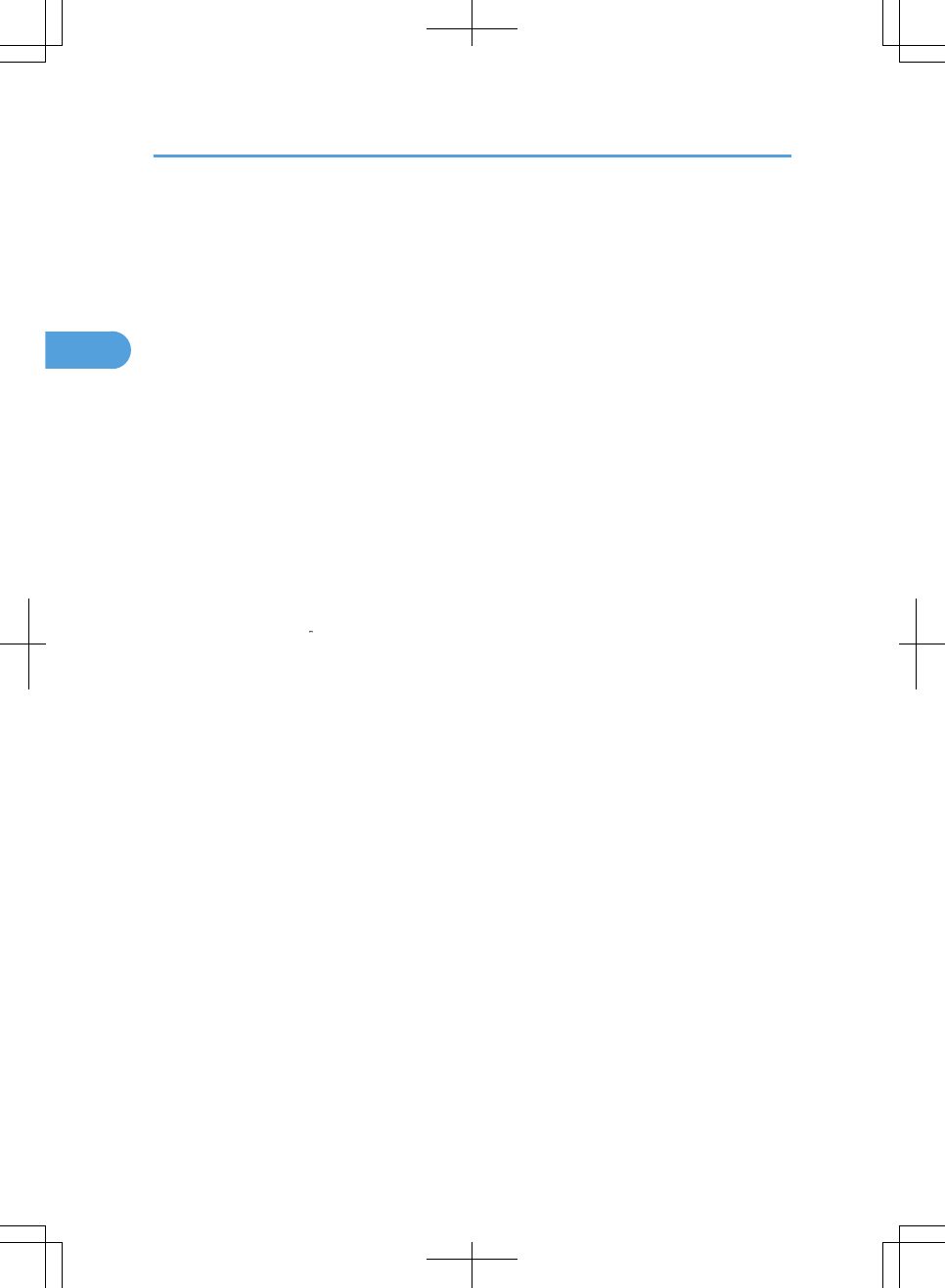
1. ADF
Lower the ADF over originals placed on the exposure glass.
If you load a stack of originals in the ADF, the ADF will automatically feed the originals one by one. This ADF
can be used for two-sided originals.
2. Exposure glass
Place originals face down here.
3. Ventilation holes
Prevent overheating.
4. Main power switch
If the machine does not operate after turning on the operation switch, check if the main power switch is turned
on. If it is off, turn it on. See “Turning On/Off the Power”.
5. Control panel
See “Control Panel”.
6. Internal tray 1
Copied/printed paper and fax messages are delivered here.
7. Front cover
Open to access the inside of the machine.
8. Paper trays (trays 1 2)
Load paper here.
9. Lower paper trays (optional)
Load paper here.
10. Operation switch
Press to turn the power on (the operation switch indicator lights up). To turn the power off, press again (the
operation switch indicator goes off). See “Turning On/Off the Power”.
2. Getting Started
56
2
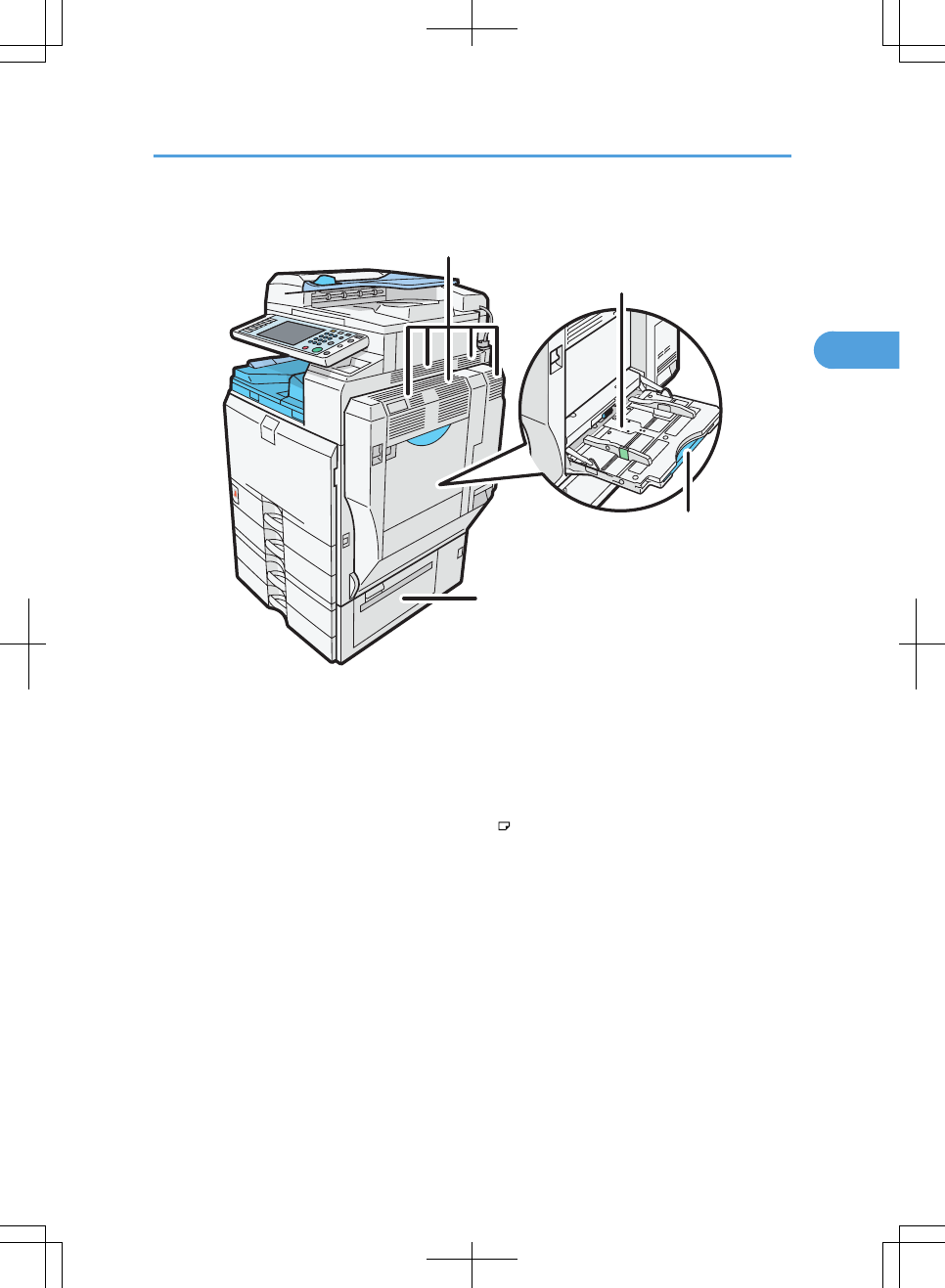
Front and right view
CAS029
1
2
3
4
1. Ventilation holes
Prevent overheating.
2. Bypass tray
Use to copy or print on OHP transparencies, label paper (adhesive labels), envelopes and custom size paper.
3. Extender
Pull this extender out when loading sheets larger than A4 in the bypass tray.
4. Lower right cover
Open this cover when a paper jam occurs.
Guide to Components
57
2
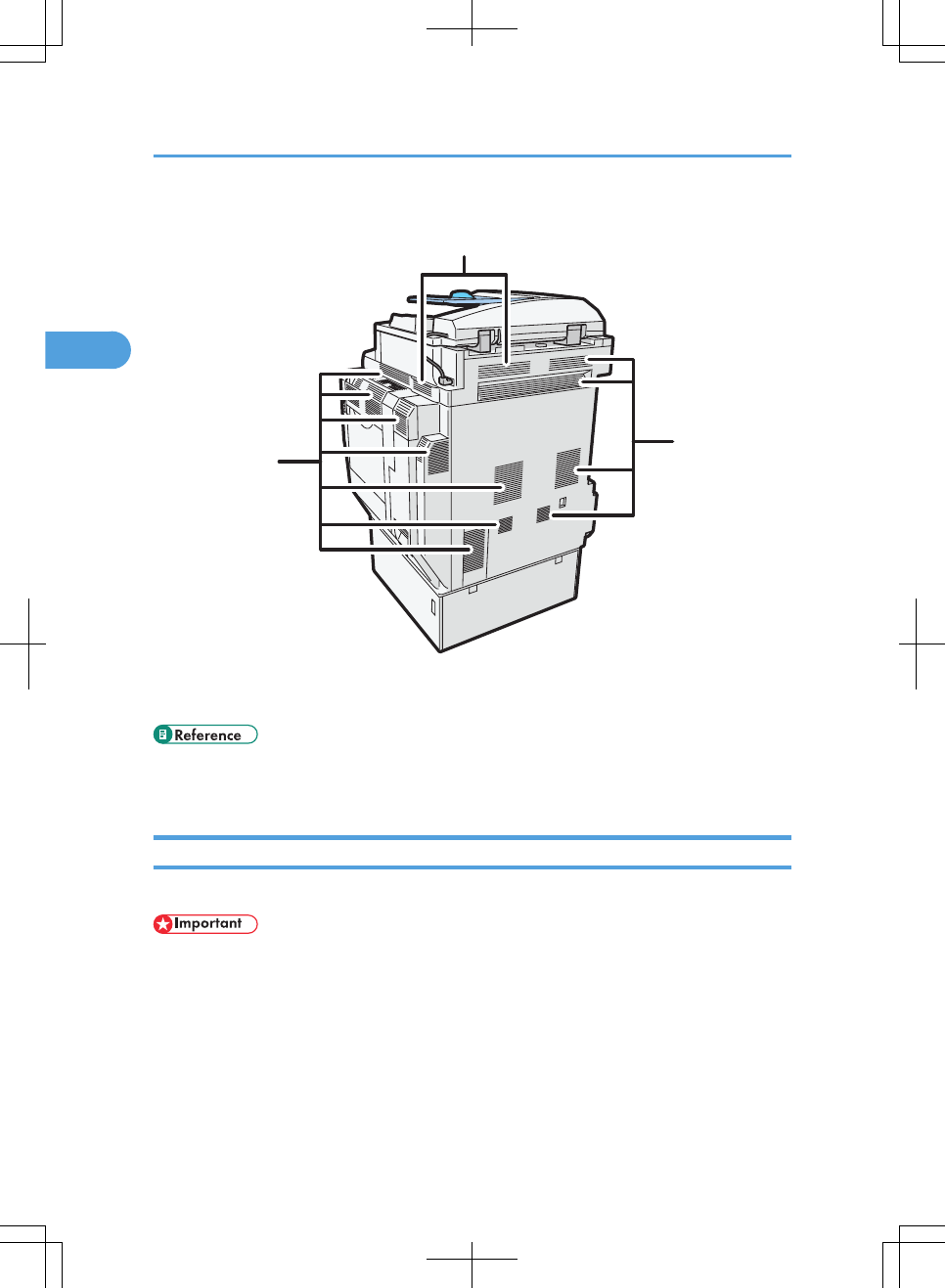
Rear and right view
CAS030
1
1
1
1. Ventilation holes
Prevent overheating.
• p.68 "Control Panel"
• p.80 "Turning On/Off the Power"
Guide to Components of Type 3 and 4
This section introduces the names and functions of the components of type 3 and 4.
• Do not obstruct the ventilation holes by placing objects near them or leaning things against them. If
the machine overheats, a fault might occur.
2. Getting Started
58
2
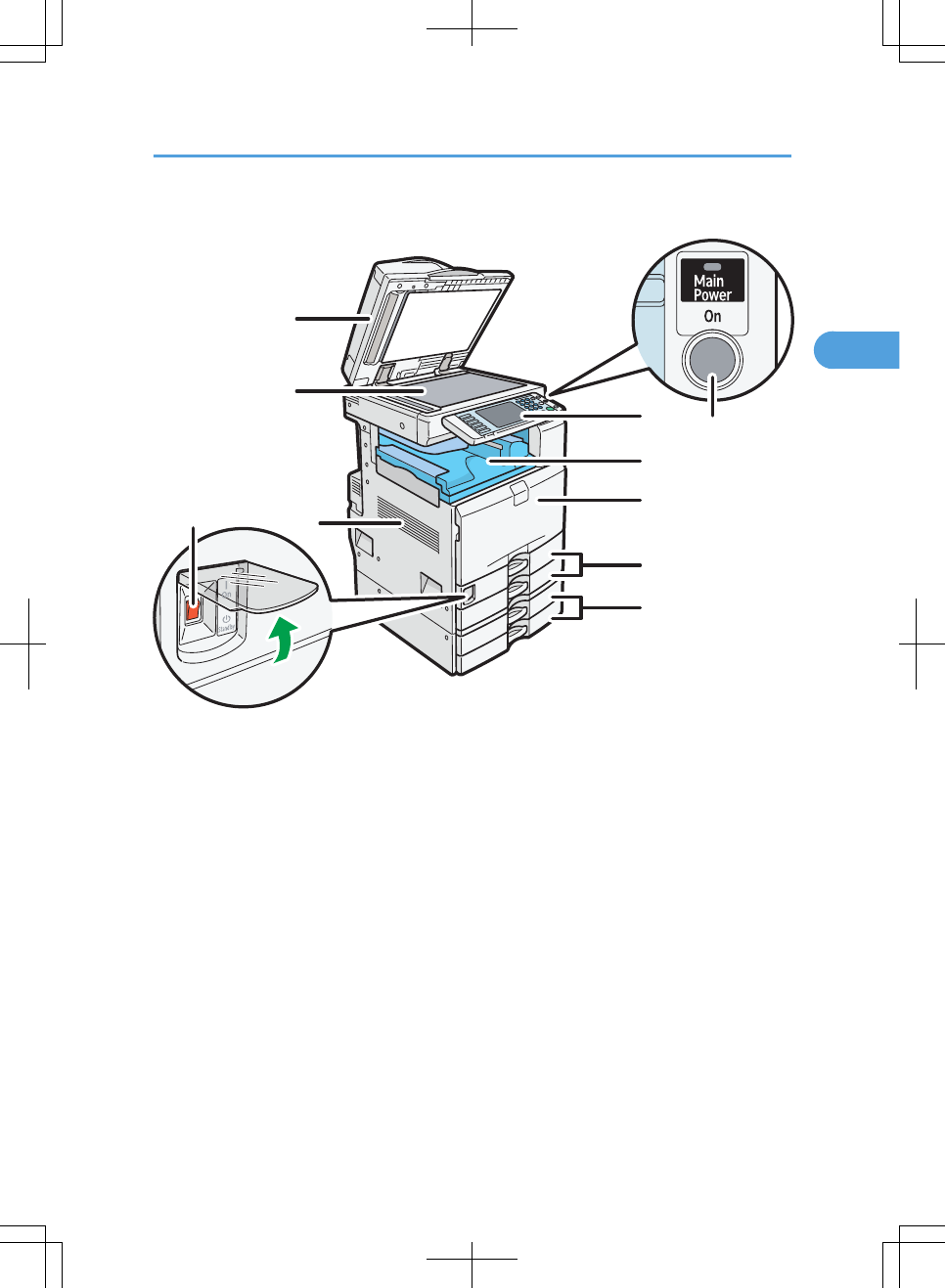
Front and left view
CAS093
4
1
2
3
5
6
7
8
9
10
1. ADF
Lower the ADF over originals placed on the exposure glass.
If you load a stack of originals in the ADF, the ADF will automatically feed the originals one by one. This ADF
can be used for two-sided originals.
2. Exposure glass
Place originals face down here.
3. Ventilation holes
Prevent overheating.
4. Main power switch
If the machine does not operate after turning on the operation switch, check if the main power switch is turned
on. If it is off, turn it on. See “Turning On/Off the Power”.
5. Control panel
See “Control Panel”.
6. Internal tray 1
Copied/printed paper and fax messages are delivered here.
Guide to Components
59
2
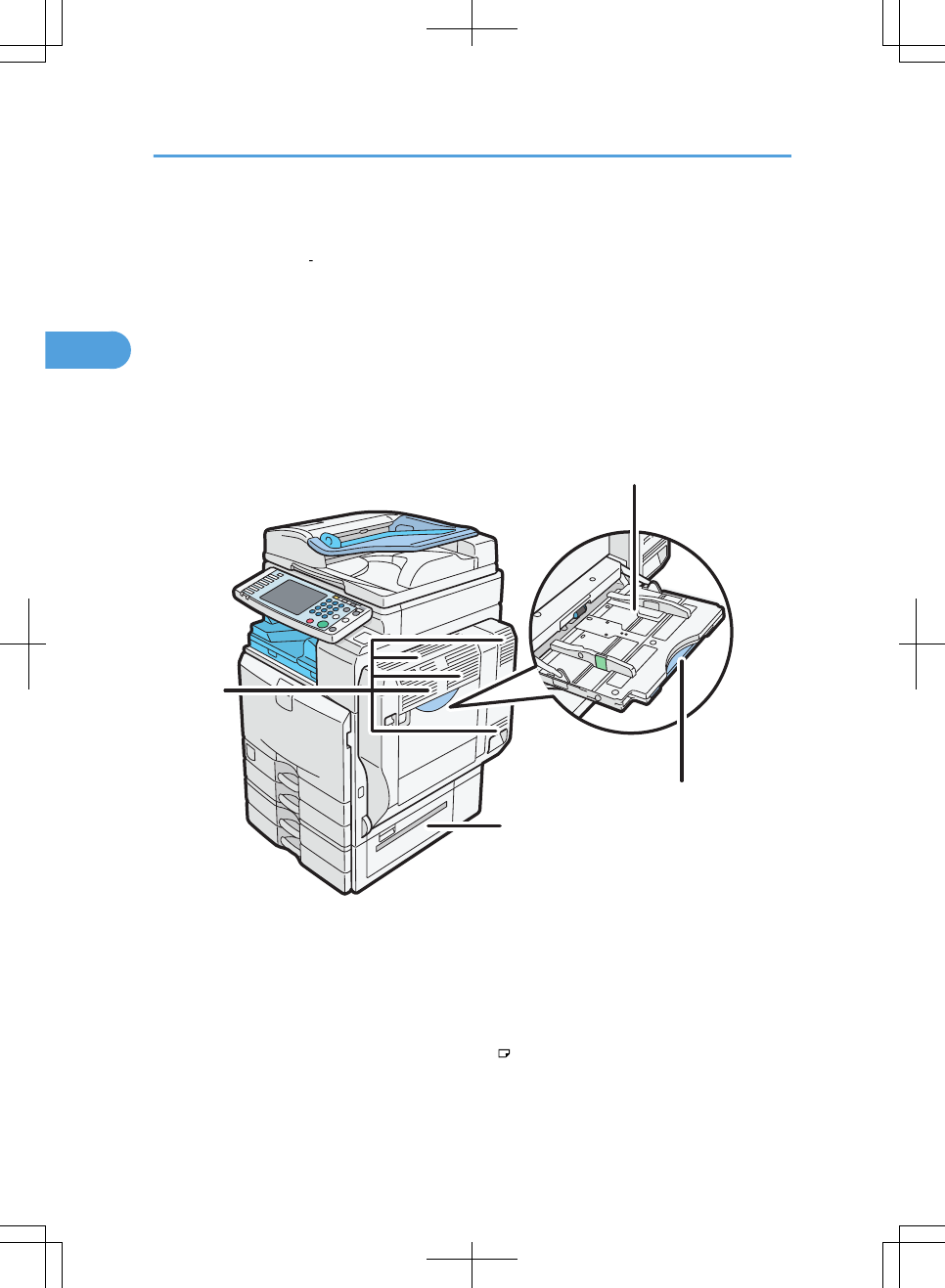
7. Front cover
Open to access the inside of the machine.
8. Paper trays (trays 1 2)
Load paper here.
9. Lower paper trays (optional)
Load paper here.
10. Operation switch
Press to turn the power on (the operation switch indicator lights up). To turn the power off, press again (the
operation switch indicator goes off). See “Turning On/Off the Power”.
Front and right view
CAS032
1
2
3
4
1. Ventilation holes
Prevent overheating.
2. Bypass tray
Use to copy or print on OHP transparencies, label paper (adhesive labels), envelopes and custom size paper.
3. Extender
Pull this extender out when loading sheets larger than A4 in the bypass tray.
4. Lower right cover
Open this cover when a paper jam occurs.
2. Getting Started
60
2
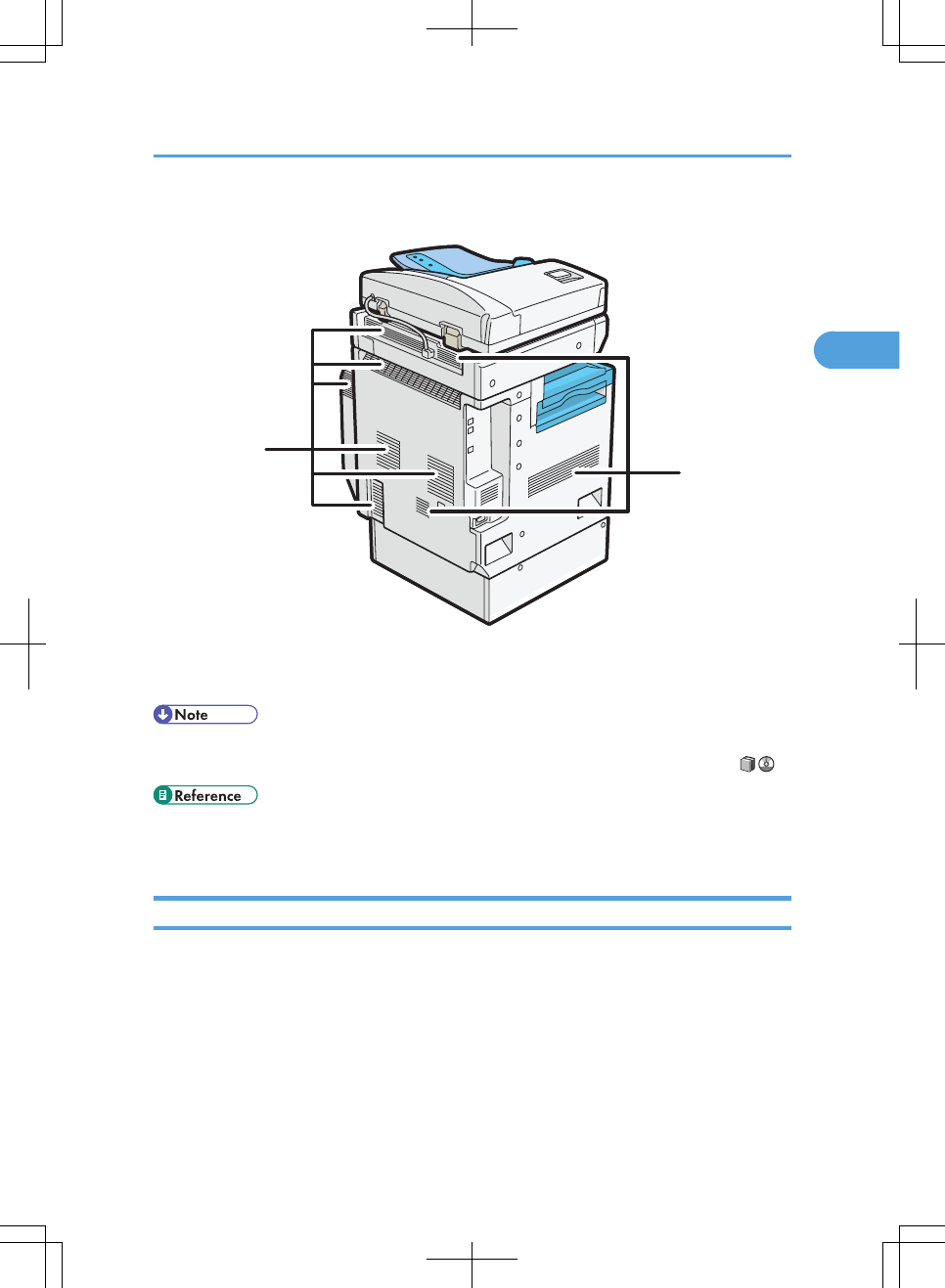
Rear and left view
CAS033
1
1
1. Ventilation holes
Prevent overheating.
• To cool the machine's interior, the fan may continue running after the machine finishes a large print
job. For details, see “When You Have Problems Operating the Machine”, Troubleshooting .
• p.68 "Control Panel"
• p.80 "Turning On/Off the Power"
About the Guide on the Internal Tray 2 (Optional)
If printed sheets come out curled, raise the guide on the internal tray 2.
To raise the guide on the internal tray 2
Push the lever that is on the underside of the internal tray 2 inward.
Guide to Components
61
2
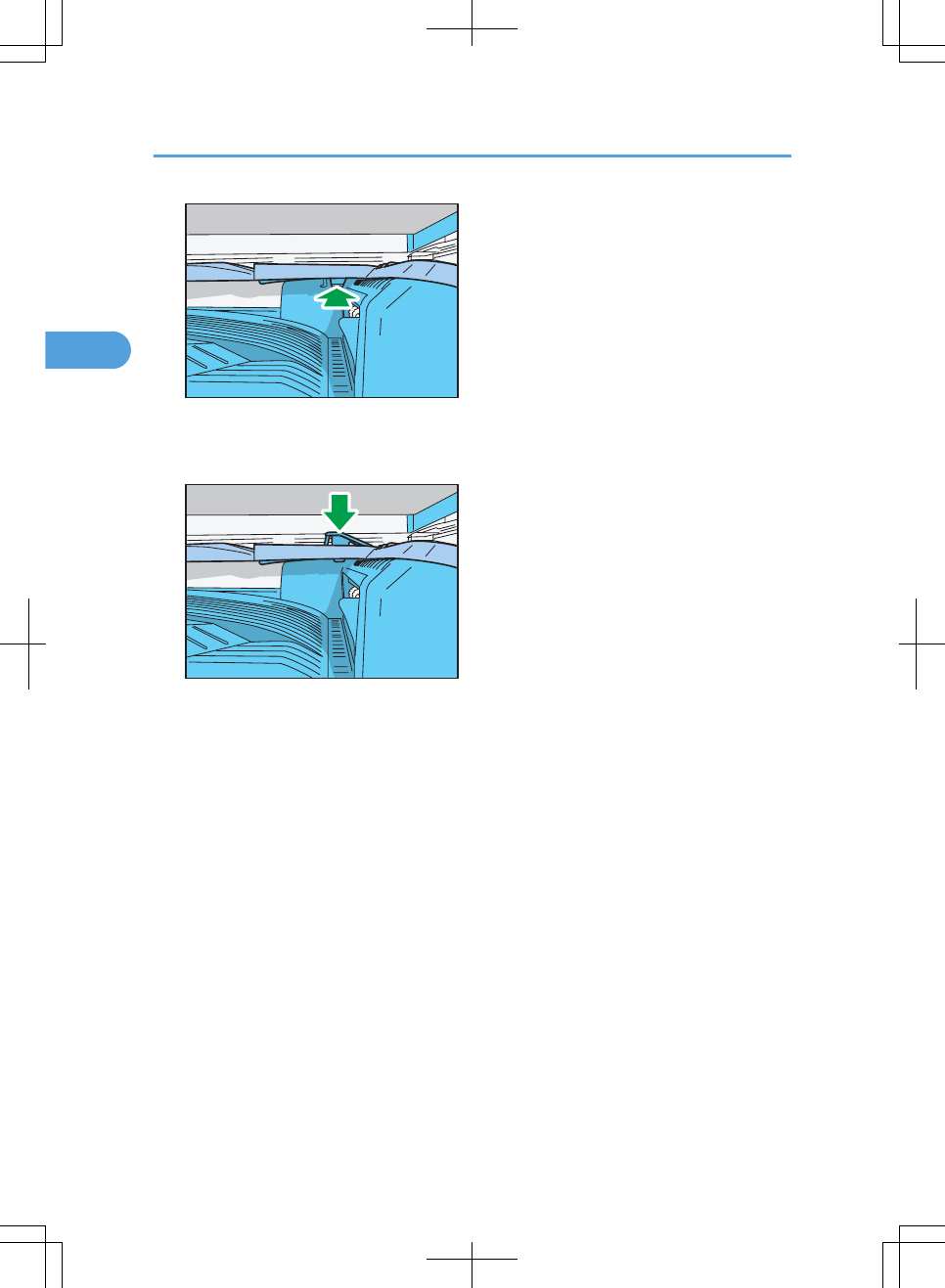
CAS034
To lower the guide on internal tray 2
Push down on the top surface of the guide.
CAS035
2. Getting Started
62
2
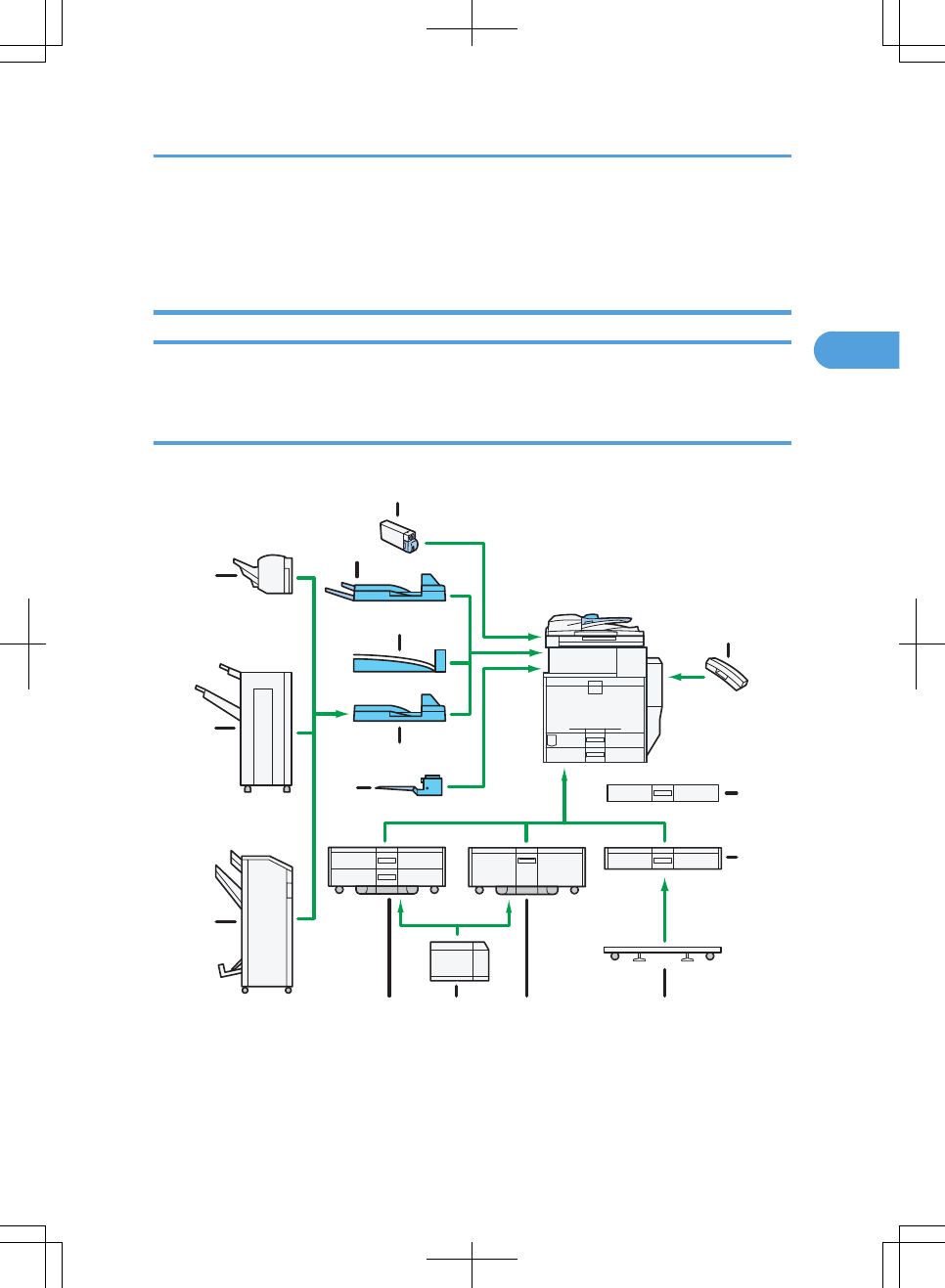
Options
This section introduces the names and functions of main optional parts.
External Options
This section provides explanations about external options.
External options for type 1 and 2
This section provides explanations about external options for type 1 and 2.
CAS094
1
2
4
3
5678
9
10
11
12
13
14
15
1. Media slot
With this media slot, you can save scan files on a removable memory device. You can also print files stored on
a removable memory device.
Options
63
2
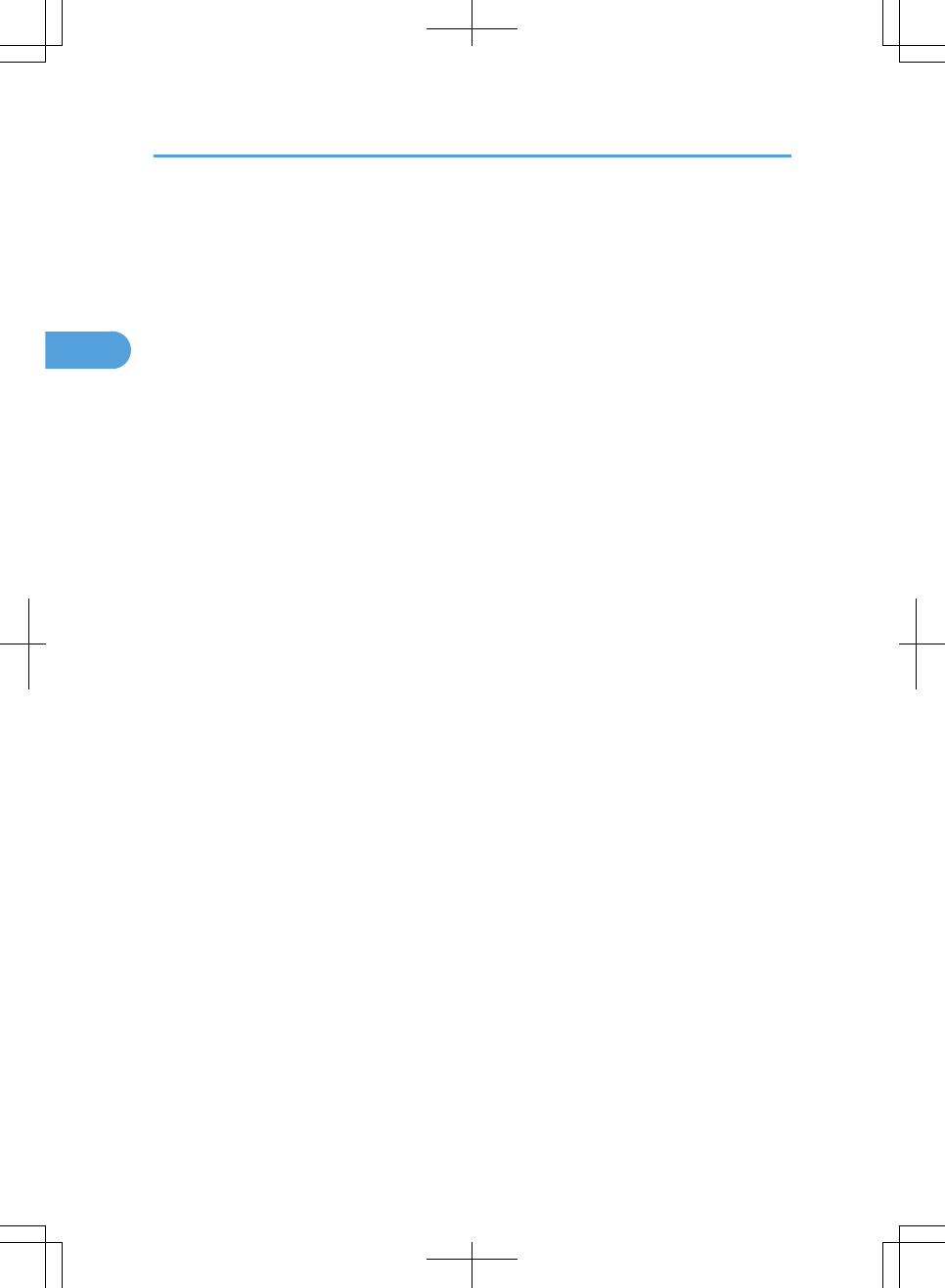
2. Handset
Used as a receiver when a fax unit is installed.
3. Small size paper tray
Holds small size sheets of paper or envelopes.
To use the small size paper tray, install it in tray 2 or the lower paper trays. The small size paper tray cannot be
installed in the lower paper tray. For details about how to install the small size paper tray, see “Installing the
Small Size Paper Tray”.
4. Lower paper tray
Holds up to 550 sheets of paper.
5. Caster table for lower paper tray
To use the lower paper tray, attach the caster table.
6. Tray 3 (LCT)
Holds up to 2,000 sheets of paper.
7. Large capacity tray (LCT)
Holds up to 1,200 sheets of paper.
8. Lower paper trays
Consists of two paper trays. Holds up to 1,100 sheets of paper. Each paper tray holds 550 sheets.
9. Internal tray 2 (1 bin tray)
If you select this as the output tray, copied/printed paper or fax messages are delivered here face down.
10. Bridge unit
Relays paper to the finisher.
11. Internal shift tray
Sorts and stacks multiple sheets of paper.
12. External tray
If you select this as the output tray, copied/printed paper and fax messages are delivered here face down.
13. Booklet Finisher SR3000
Sorts, stacks, staples, and punches multiple sheets of paper. The saddle stitch function can staple multiple sheets
of paper in the center and fold them into booklets. Consists of the following paper trays:
• Finisher upper tray
• Finisher shift tray
• Finisher booklet tray
14. Finisher SR790
Sorts, stacks, and staples multiple sheets of paper. Consists of the following paper trays:
• Finisher upper tray
• Finisher shift tray
15. Finisher SR3050
Sorts, stacks, and staples multiple sheets of paper.
2. Getting Started
64
2
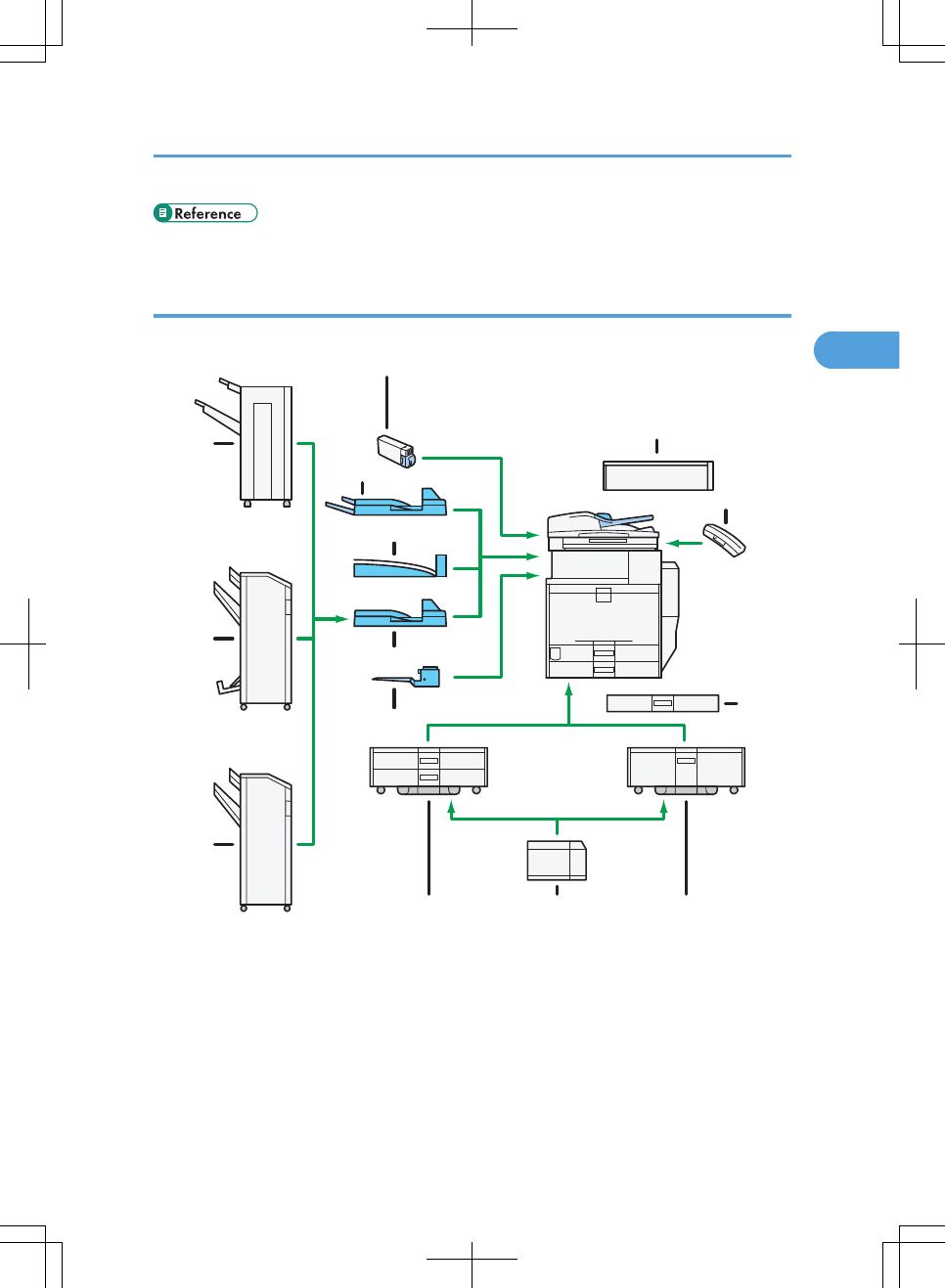
• p.87 "Installing the Small Size Paper Tray"
External options for type 3 and 4
This section provides explanations about external options for type 3 and 4.
CAS095
3
2
10
11
1
567
8
9
12
13
14
4
1. Media slot
With this media slot, you can save scan files on a removable memory device. You can also print files stored on
a removable memory device.
2. Scanner accessibility unit
This unit lets you operate the machine or scan documents from the side instead of using the control panel on the
machine.
3. Handset
Used as a receiver when a fax unit is installed.
Options
65
2
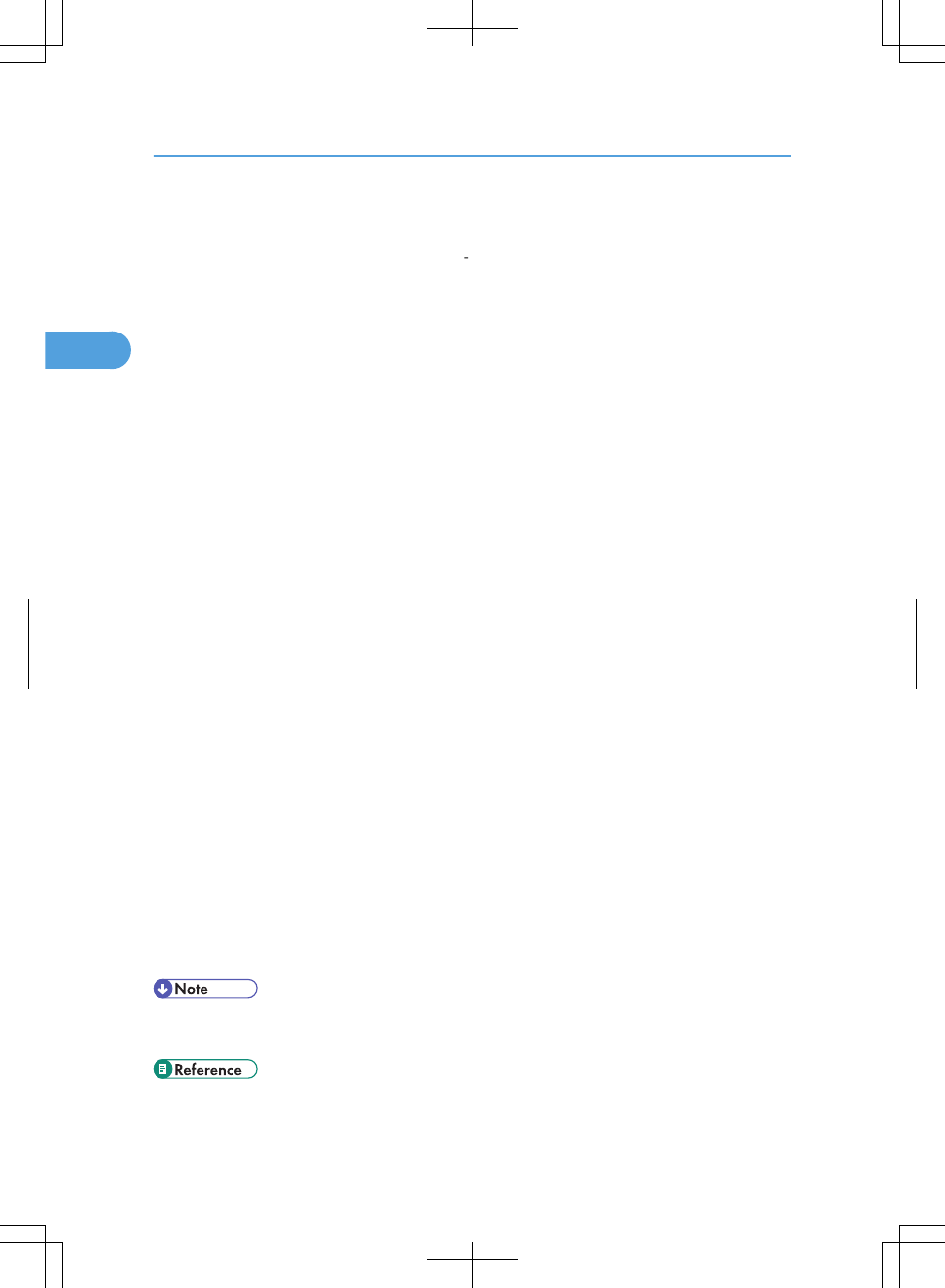
4. Small size paper tray
Holds small size sheets of paper or envelopes.
To use the small size paper tray, install it in trays 2 4. For details, see “Installing the Small Size Paper Tray”.
5. Tray 3 (LCT)
Holds up to 2,000 sheets of paper.
6. Large capacity tray (LCT)
Holds up to 1,200 sheets of paper.
7. Lower paper trays
Consists of two paper trays. Holds up to 1,100 sheets of paper. Each paper tray holds 550 sheets.
8. Internal tray 2 (1 bin tray)
If you select this as the output tray, copied/printed paper or fax messages are delivered here face down.
9. Bridge unit
Relays paper to the finisher.
10. Internal shift tray
Sorts and stacks multiple sheets of paper.
11. External tray
If you select this as the output tray, copied/printed paper and fax messages are delivered here face down.
12. Finisher SR3030
Sorts, stacks, staples, and punches multiple sheets of paper. Consists of the following paper trays:
• Finisher upper tray
• Finisher shift tray
13. Booklet Finisher SR3020
Sorts, stacks, staples, and punches multiple sheets of paper. The saddle stitch function can staple multiple sheets
of paper in the center and fold them into booklets. Consists of the following paper trays:
• Finisher upper tray
• Finisher shift tray
• Finisher booklet tray
14. Finisher SR790
Sorts, stacks, and staples multiple sheets of paper. Consists of the following paper trays:
• Finisher upper tray
• Finisher shift tray
• When the Scanner Accessibility Unit is installed, the control panel and the scanner unit on the machine
cannot be used.
• p.87 "Installing the Small Size Paper Tray"
2. Getting Started
66
2
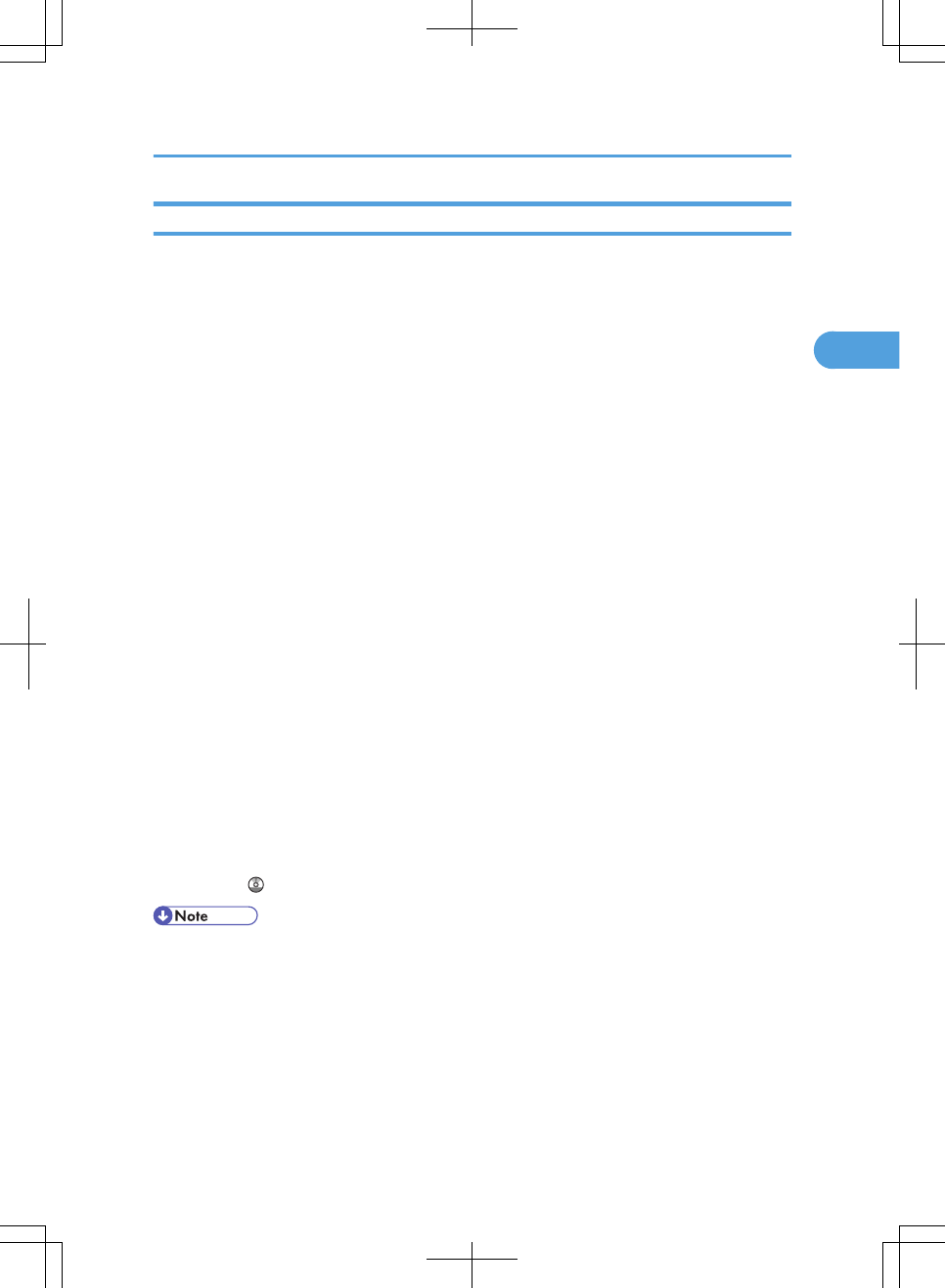
Internal Options
This section describes the options that can be installed in the machine.
• Fax unit
Allows you to use the facsimile function.
• Extra G3 interface unit
This lets you add a G3 fax line.
• PictBridge card
Allows you to directly print images taken with a PictBridge-compatible digital camera.
• Browser unit
You can use this function to display data from the server in HTML format on the machine's control
panel. You can also use this function to send scan files from the control panel.
• IEEE 1284 interface board
Allows you to connect to an IEEE 1284 cable.
• Wireless LAN board
Allows you to install a wireless LAN interface.
• PostScript 3 unit
Allows you to print by Adobe PostScript printer driver.
• Bluetooth interface unit
Allows you to expand the interface.
• Gigabit Ethernet (1000BASE-T)
Allows you to communicate over 1000BASE-T.
• File format converter
Allows you to download documents from the Document Server stored by copier and printer functions.
See “Downloading Stored Documents with Web Image Monitor”, Copy and Document Server
Reference .
• Only one of the following options can be installed on the machine at any one time: IEEE 1284 interface
board, wireless LAN board, Bluetooth interface unit.
Options
67
2
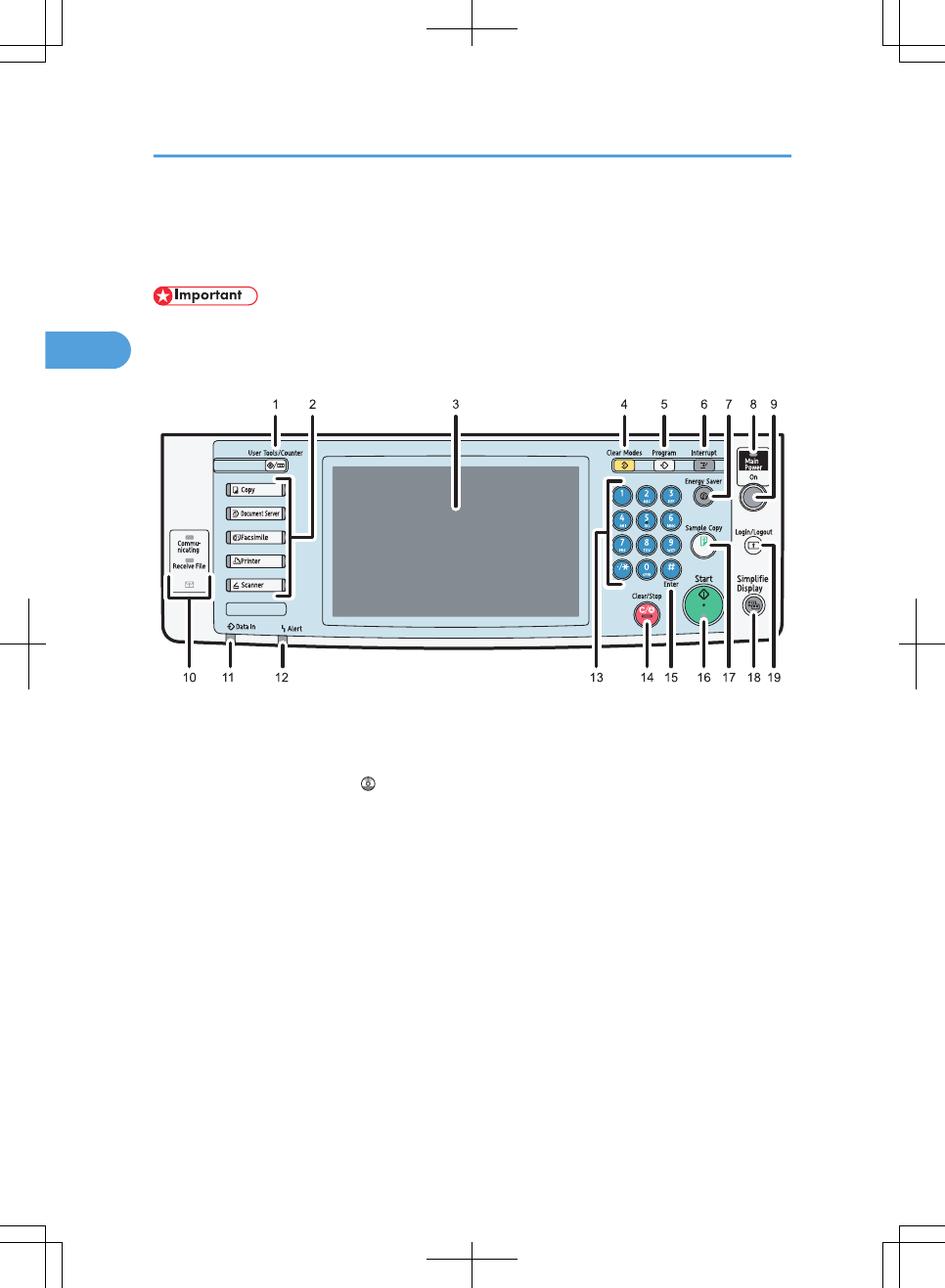
Control Panel
This section introduces the names and functions of the components on the control panel.
• Do not turn off the main power switch while the operation switch indicator is lit or blinking. Doing so
may damage the hard disk.
This illustration shows the control panel of the machine with options fully installed.
CAS002
1. [User Tools/Counter] key
• User Tools
Press to change the default settings to meet your requirements. See “Accessing User Tools”, Network and
System Settings Reference .
• Counter
Press to check or print the counter value. See “Counter”.
• Inquiry
Press to find out where to order expendable supplies and where to call when a malfunction occurs. You
can also print these details. See “Inquiry”.
2. Function keys
Press to display the operation screen of one of the following functions: copy, Document Server, facsimile, printer,
or scanner.
The indicator of the selected function goes on. See “Changing Modes”.
3. Display panel
Displays keys for each function, operation status, or messages. See “Display Panel”.
4. [Clear Modes] key
Press to clear the current settings.
2. Getting Started
68
2
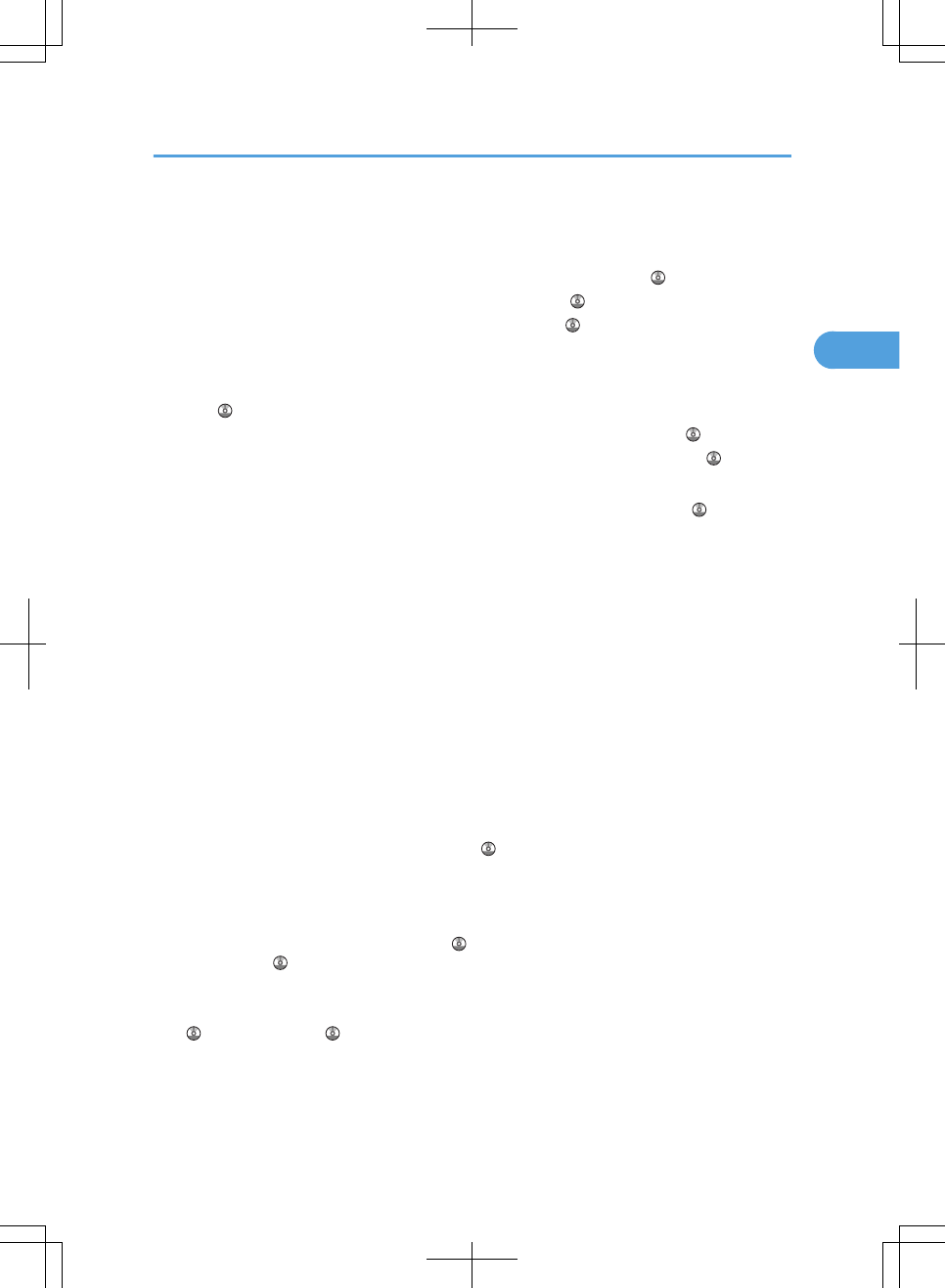
5. [Program] key (copier, Document Server, facsimile, and scanner mode)
• Press to register frequently used settings, or to recall registered settings.
See “Registering Frequently Used Functions” and “Registering Frequently Used Functions for Printing Stored
Documents from the Document Server”, Copy and Document Server Reference .
See “Registering Frequently Used Settings”, Facsimile Reference .
See “Registering Frequently Used Settings”, Scanner Reference .
• Press to program defaults for the initial display when modes are cleared or reset, or immediately after the
operation switch is turned on.
See “Changing the Default Functions of the Copy's Initial Display”, Copy and Document Server Reference
.
See “Changing the Default Functions of the Fax's Initial Display”, Facsimile Reference .
See “Changing the Default Functions of the Scanner's Initial Display”, Scanner Reference .
6. [Interrupt] key
Press to make interrupt copies. See “Interrupt Copy”, Copy and Document Server Reference .
7. [Energy Saver] key
Press to switch to and from Energy Saver mode. See “Saving Energy”.
8. Main power indicator
The main power indicator goes on when you turn on the main power switch.
9. Operation switch
Press to turn the power on (the operation switch indicator goes on). To turn the power off, press again (the
operation switch indicator goes off). See “Turning On/Off the Power”.
10. Communicating indicator, Receiving File indicator, Confidential File indicator
• Communicating indicator
Lights continuously during data transmission and reception.
• Receiving File indicator
Lights continuously while data other than personal box or Memory Lock file is being received and stored
in the fax memory.
See “Substitute Reception”, Facsimile Reference .
• Confidential File indicator
Lights continuously while personal box data is being received.
Blinks while Memory Lock file is being received.
See “Personal Boxes”, Facsimile Reference and “Printing a File Received with Memory Lock”, Facsimile
Reference .
11. Data In indicator (facsimile and printer mode)
Flashes when the machine is receiving print jobs or LAN-Fax documents from a computer. See Facsimile Reference
and Printer Reference .
12. Alert indicator
Lights continuously if an error has occurred.
Control Panel
69
2
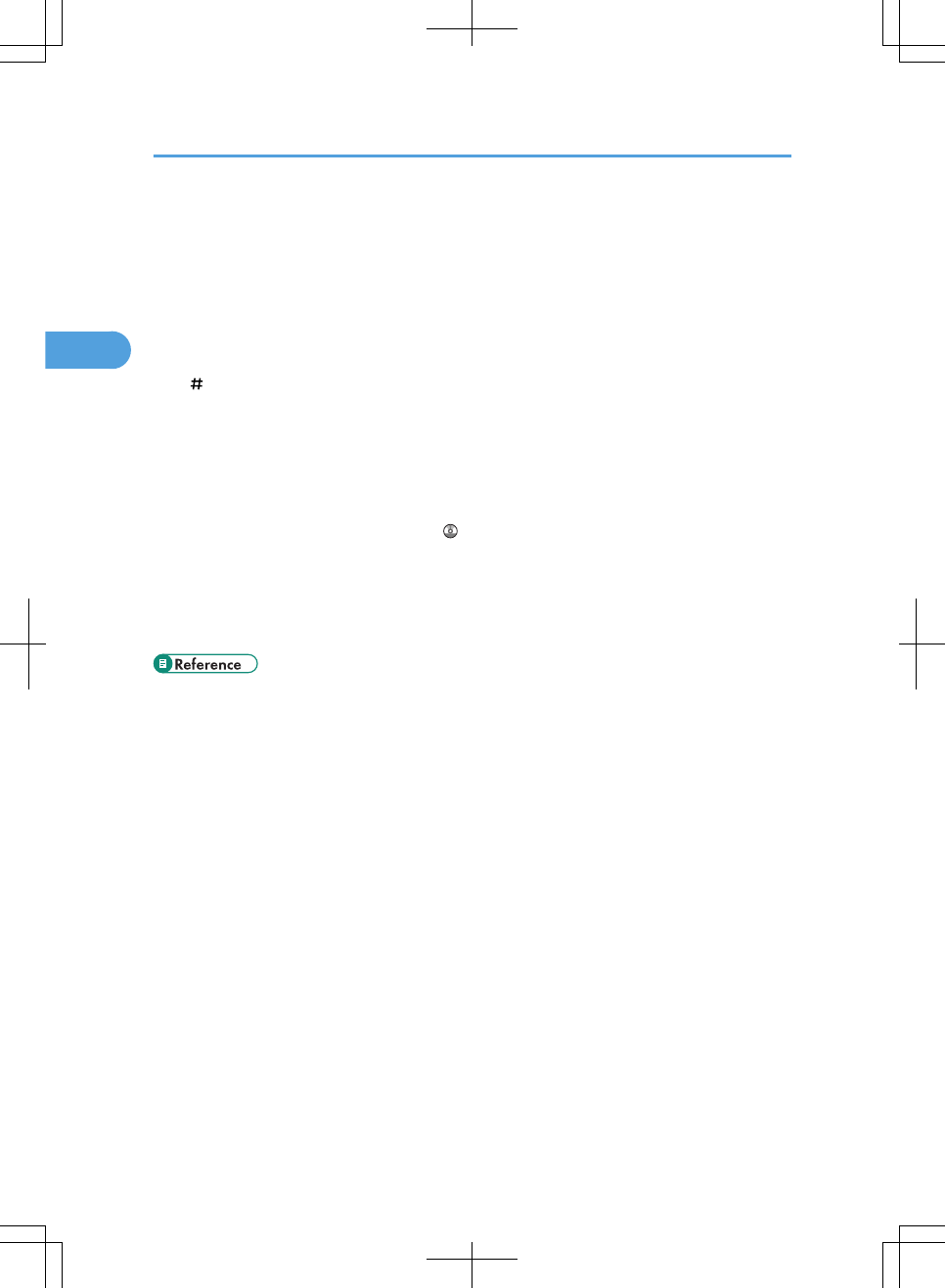
13. Number keys
Use to enter the numbers for copies, fax numbers and data for the selected function.
14. [Clear/Stop] key
• Clear
Press to delete a number entered.
• Stop
Press to stop a job in progress, such as copying, scanning, faxing, or printing.
15. [ ] key (Enter key)
Press to confirm values entered or items specified.
16. [Start] key
Press to start copying, printing, scanning, or sending.
17. [Sample Copy] key
Press to make a single set of copies or prints to check print quality before making multiple sets. See “Sample
Copy”, Copy and Document Server Reference .
18. [Simplified Display] key
Press to switch to the Simplified Display. See “Simplified Display”.
19. [Login/Logout] key
Press to log in or log out.
• p.71 "Display Panel"
• p.71 "Simplified Display"
• p.78 "Changing Modes"
• p.80 "Turning On/Off the Power"
• p.83 "Saving Energy"
• p.160 "Counter"
• p.161 "Inquiry"
2. Getting Started
70
2
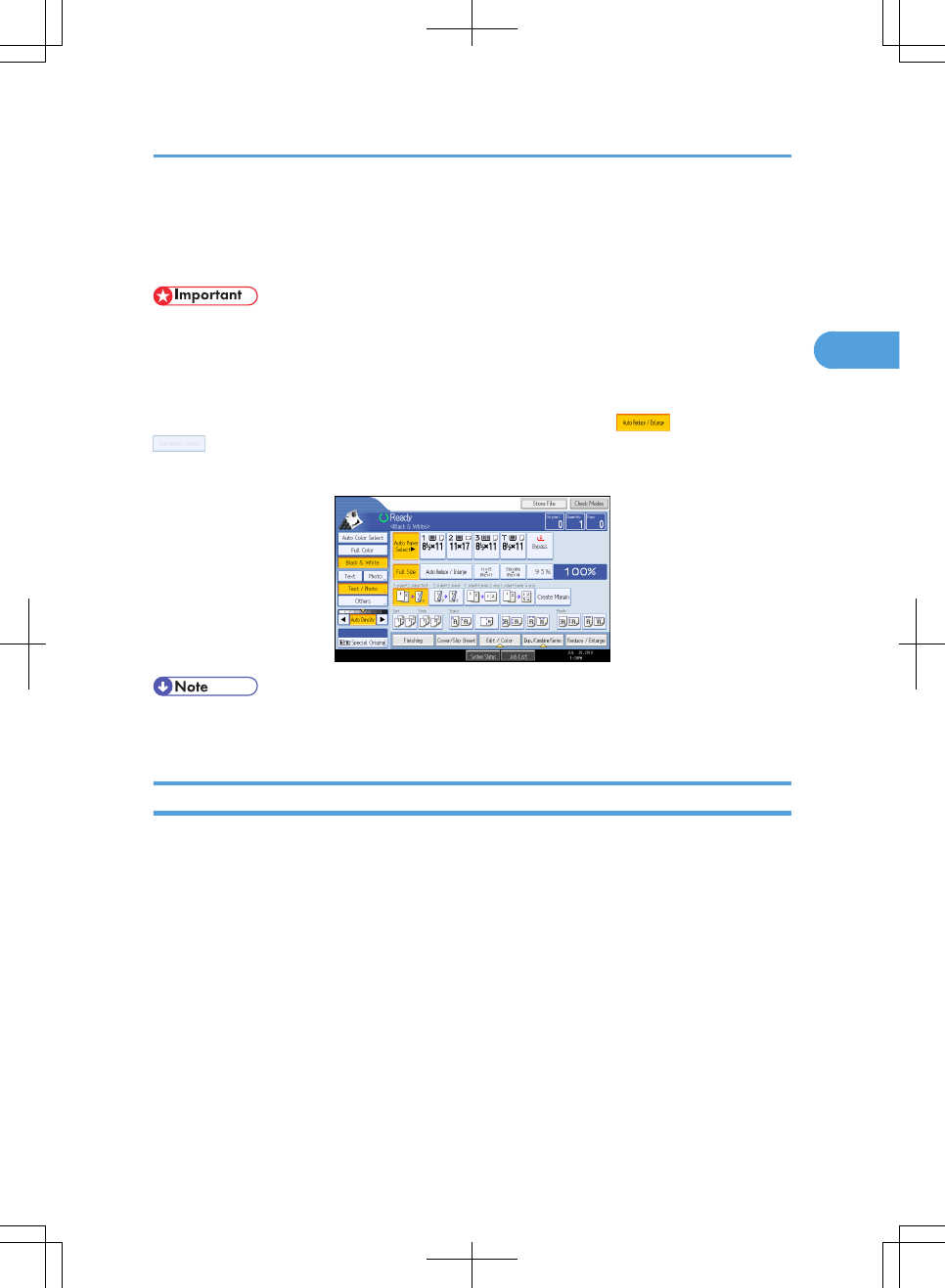
Display Panel
The display panel shows machine status, error messages, and function menus.
• Don't apply strong impact or force to the screen. Or it may be damaged. Maximum force allowable
is approx. 30N (approx. 3 kgf). (N = Newton, kgf = Kilogram force. 1 kgf = 9.8N.)
The function items displayed serve as selector keys. You can select or specify an item by lightly pressing
them.
When you select or specify an item on the display panel, it is highlighted like . Keys appearing as
cannot be used.
The copy display is set as the default screen when the machine is turned on.
• The display panels shown in this manual's illustrations are taken from a machine on which all options
are installed.
Simplified Display
This section explains how to switch to the simplified display.
When you press the [Simplified Display] key, the screen changes from the initial display to the simplified
display.
Letters and keys are displayed at a larger size, making operations easier.
Display Panel
71
2
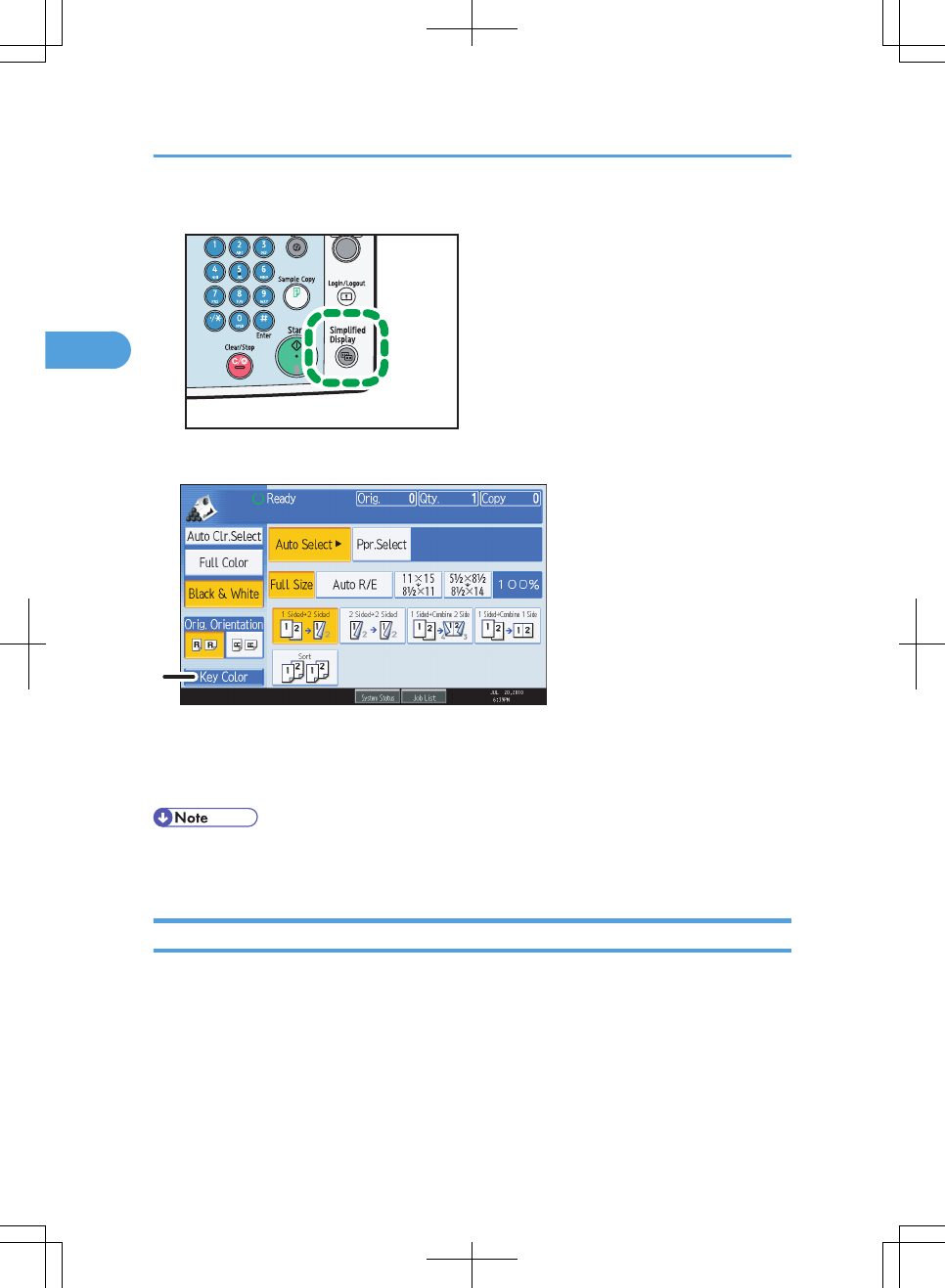
1. Press the [Simplified Display] key.
CAS097
This illustration shows the copier function's simplified display.
CAS100
1
1. [Key Color]
Press to increase screen contrast by changing the color of the keys.
This is available only for the simplified display.
• To return to the initial display, press the [Simplified Display] key again.
• Certain keys do not appear on the simplified display.
Changing the Display Language
You can change the language used on the display. English is set as default.
The following procedure explains switching the language from English to Spanish.
2. Getting Started
72
2
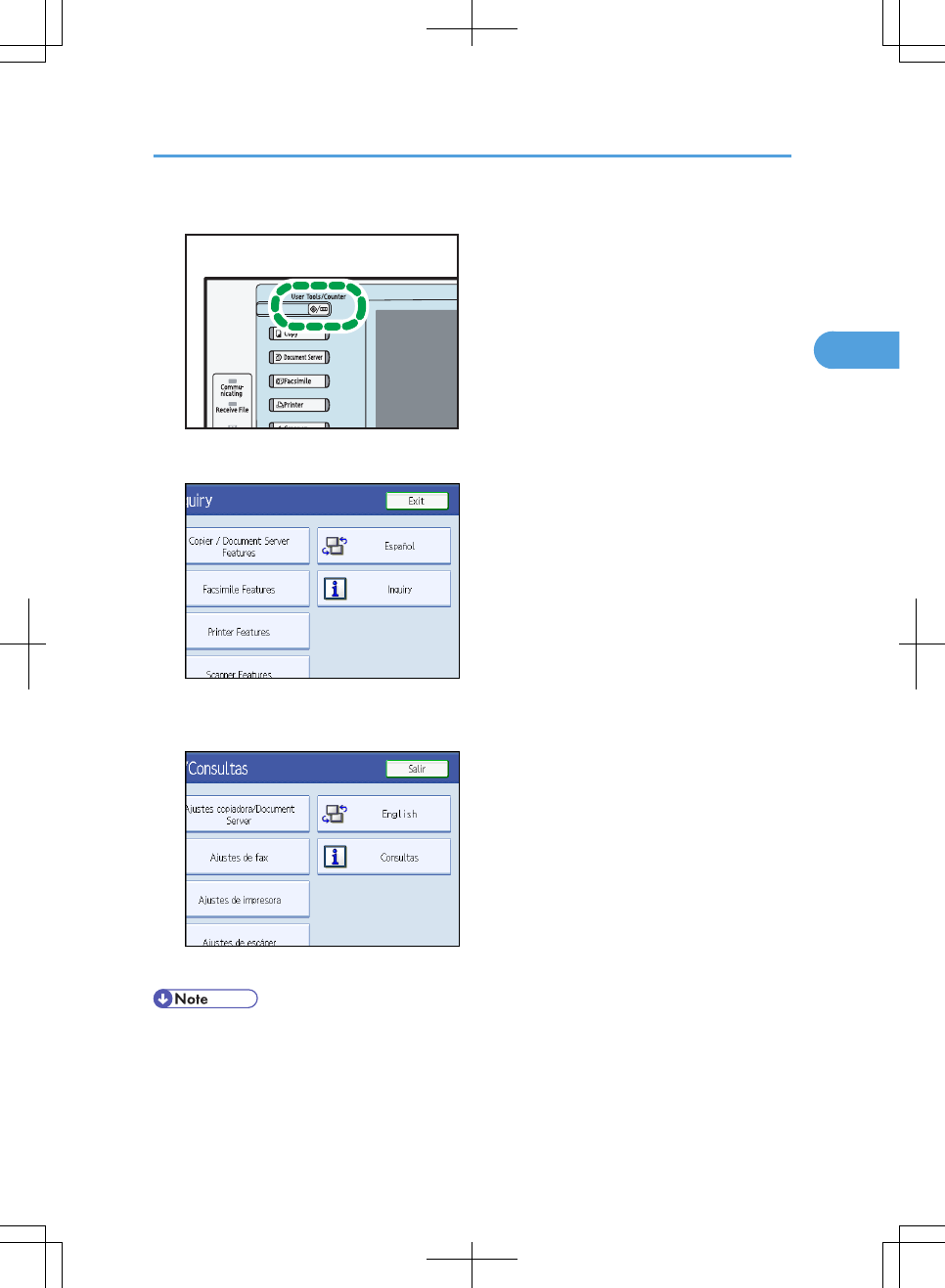
1. Press the [User Tools/Counter] key.
CAS098
2. Press [Español].
The language is changed to Spanish.
3. Press [Salir.]
The menu appears in Spanish.
• If you want to return the display language to “English”, repeat the step above.
Display Panel
73
2
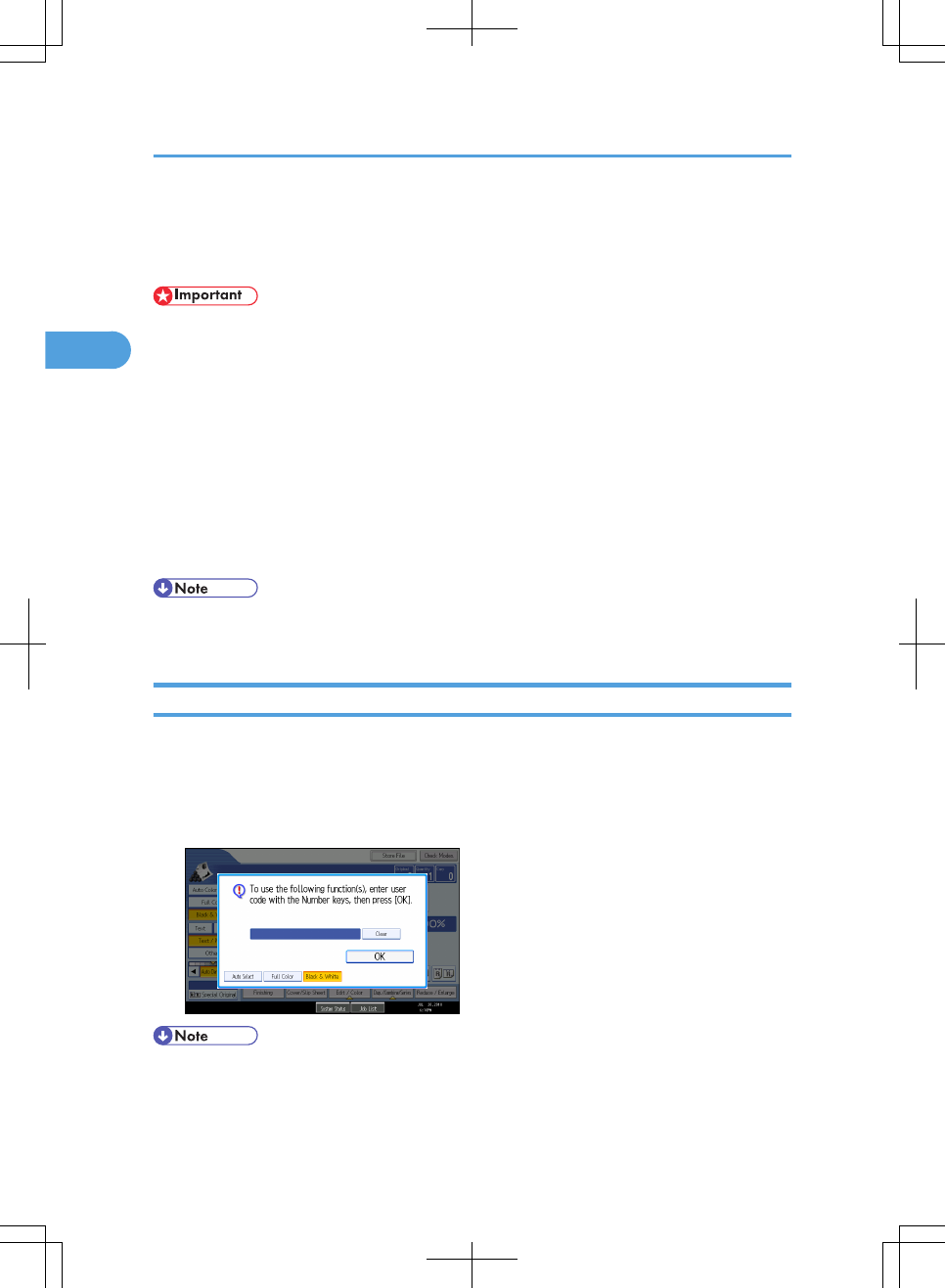
When the Authentication Screen is Displayed
This section explains the authentication screen.
• Ask the user administrator for the Login User Name, Login Password, and User Code. For details
about user authentication, contact your administrator.
• User Code to enter on User Code Authentication is the numerical value registered in the Address Book
as “User Code”.
If Basic Authentication, Windows Authentication, LDAP Authentication, or Integration Server Authentication
is active, the authentication screen appears on the display. The machine only becomes operable after
entering your own Login User Name and Login Password. If User Code Authentication is active, you cannot
use the machine until you enter the User Code.
If you can use the machine, you can say that you are logged in. When you go out of the operable state,
you can say that you are logged out. After logging in the machine, be sure to log out of it to prevent
unauthorized usage.
• If authentication fails, the "Authentication has failed." message appears. Check that the Login User
Name and Login Password are correct.
User Code Authentication (Using the Control Panel)
This section explains the procedure for logging in to the machine using the control panel while User Code
Authentication is active.
If User Code Authentication is active, a screen prompting you to enter a User Code appears.
1. Enter a User Code (up to eight digits), and then press [OK].
• To log out, do one of the following:
• Press the operation switch.
2. Getting Started
74
2
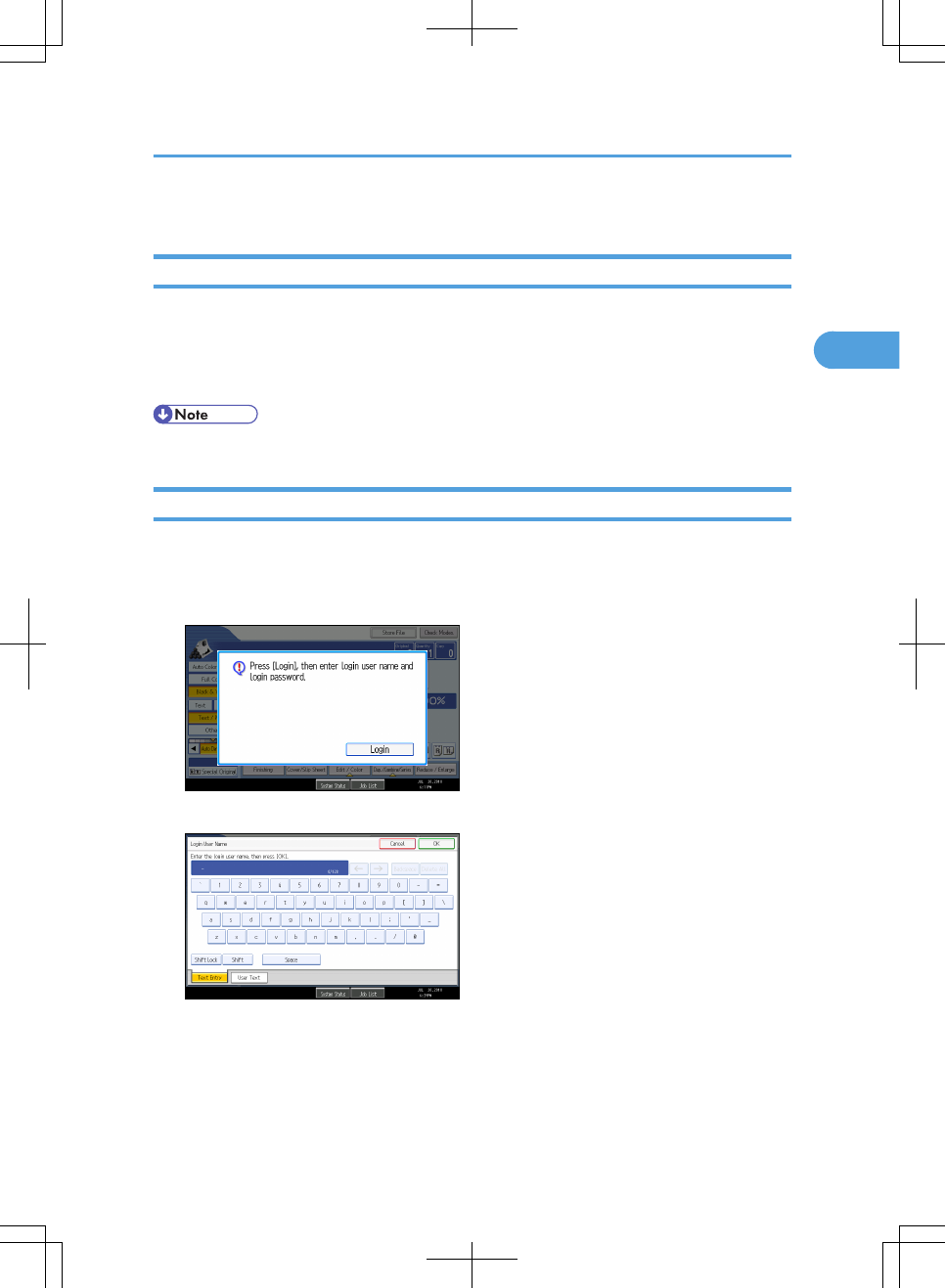
• Press the [Energy Saver] key after jobs are completed.
User Code Authentication (Using a Printer Driver)
This section explains the procedure for logging in to the machine using a printer driver while User Code
Authentication is active.
If User Code Authentication is active, specify the User Code in the printer properties of the printer driver.
For details, see the printer driver Help.
• When logged in through User Code Authentication, you do not have to log out.
Login (Using the Control Panel)
This section explains the procedure for logging in to the machine when Basic Authentication, Windows
Authentication, LDAP Authentication, or Integration Server Authentication is set.
1. Press [Login].
2. Enter a Login User Name, and then press [OK].
When the Authentication Screen is Displayed
75
2
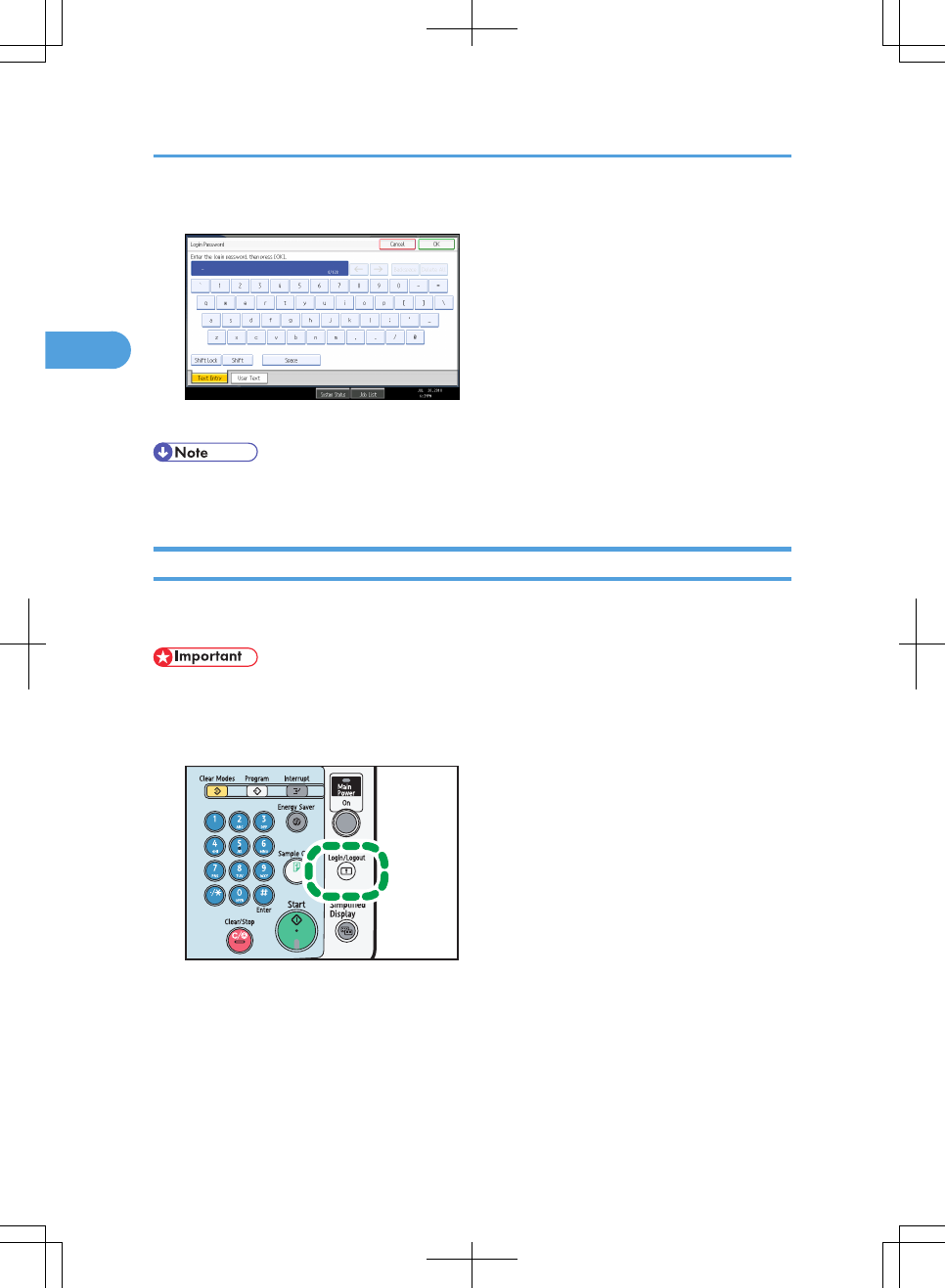
3. Enter a Login Password, and then press [OK].
When the user is authenticated, the screen for the function you are using appears.
• If authentication fails, the "Authentication has failed." message appears. Check that the Login User
Name and Login Password are correct.
Logout (Using the Control Panel)
This section explains the procedure for logging out the machine when Basic Authentication, Windows
Authentication, LDAP Authentication, or Integration Server Authentication is set.
• To prevent use of the machine by unauthorized persons, always log out when you have finished using
the machine.
1. Press the [Login/Logout] key.
CAS099
2. Getting Started
76
2
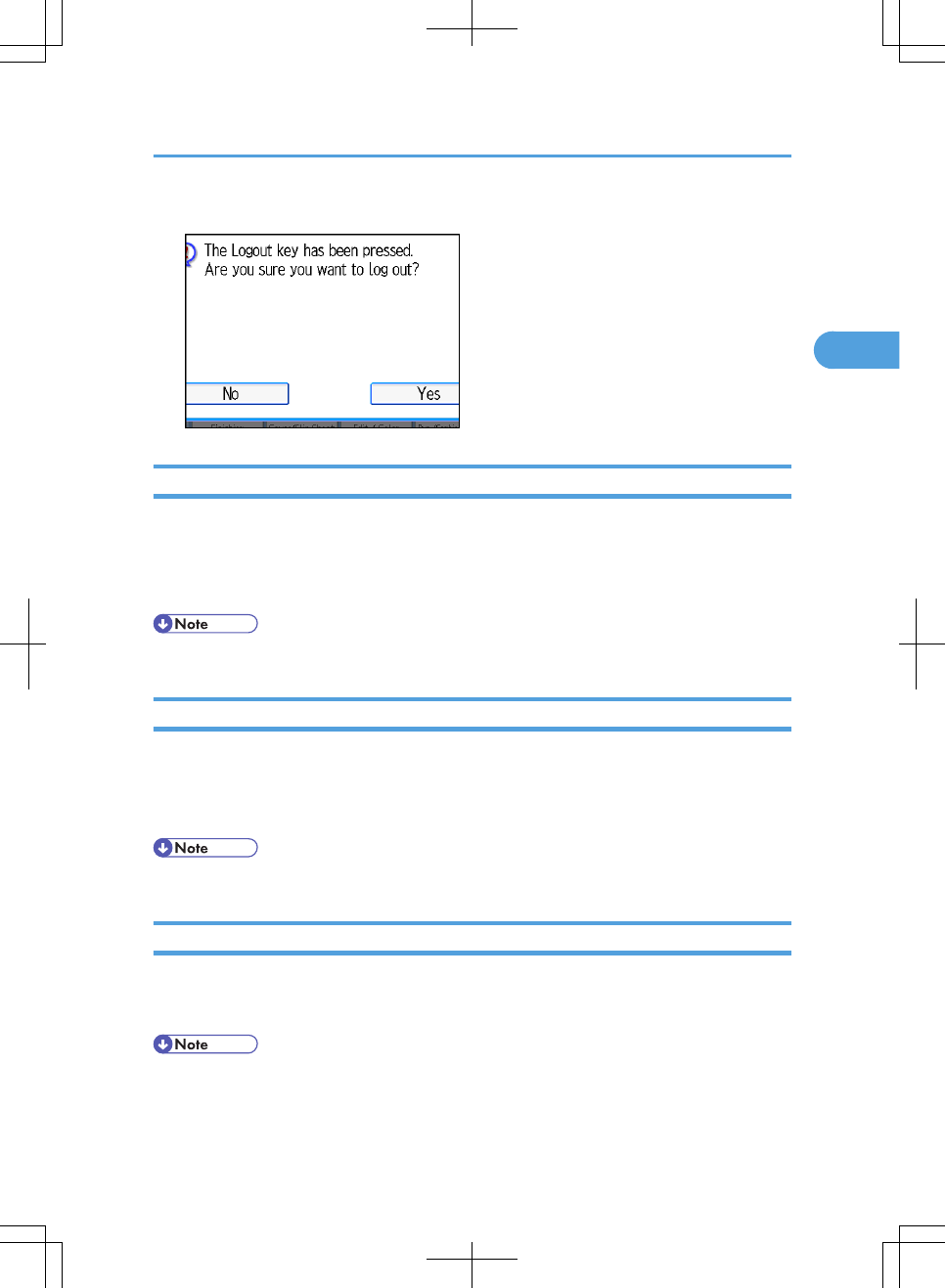
2. Press [Yes].
Login (Using a Printer Driver)
This section explains the procedure for logging in to the machine using a printer driver.
If Basic Authentication, Windows Authentication, LDAP Authentication, or Integration Server Authentication
is active, make encryption settings in the printer properties of the printer driver, and then specify a Login
User Name and Login Password. For details, see the printer driver Help.
• When logged in using a printer driver, you do not have to log out.
Login (Using Web Image Monitor)
This section explains the procedure for logging in to the machine via Web Image Monitor.
1. Click [Login].
2. Enter a Login User Name and Login Password, and then click [Login].
• For User Code Authentication, enter a User Code in [Login User Name], and then click [Login].
Logout (Using Web Image Monitor)
This section explains the procedure for logging out the machine via Web Image Monitor.
1. Click [Logout] to log out.
• Delete the cache memory of a Web browser after logging out.
When the Authentication Screen is Displayed
77
2
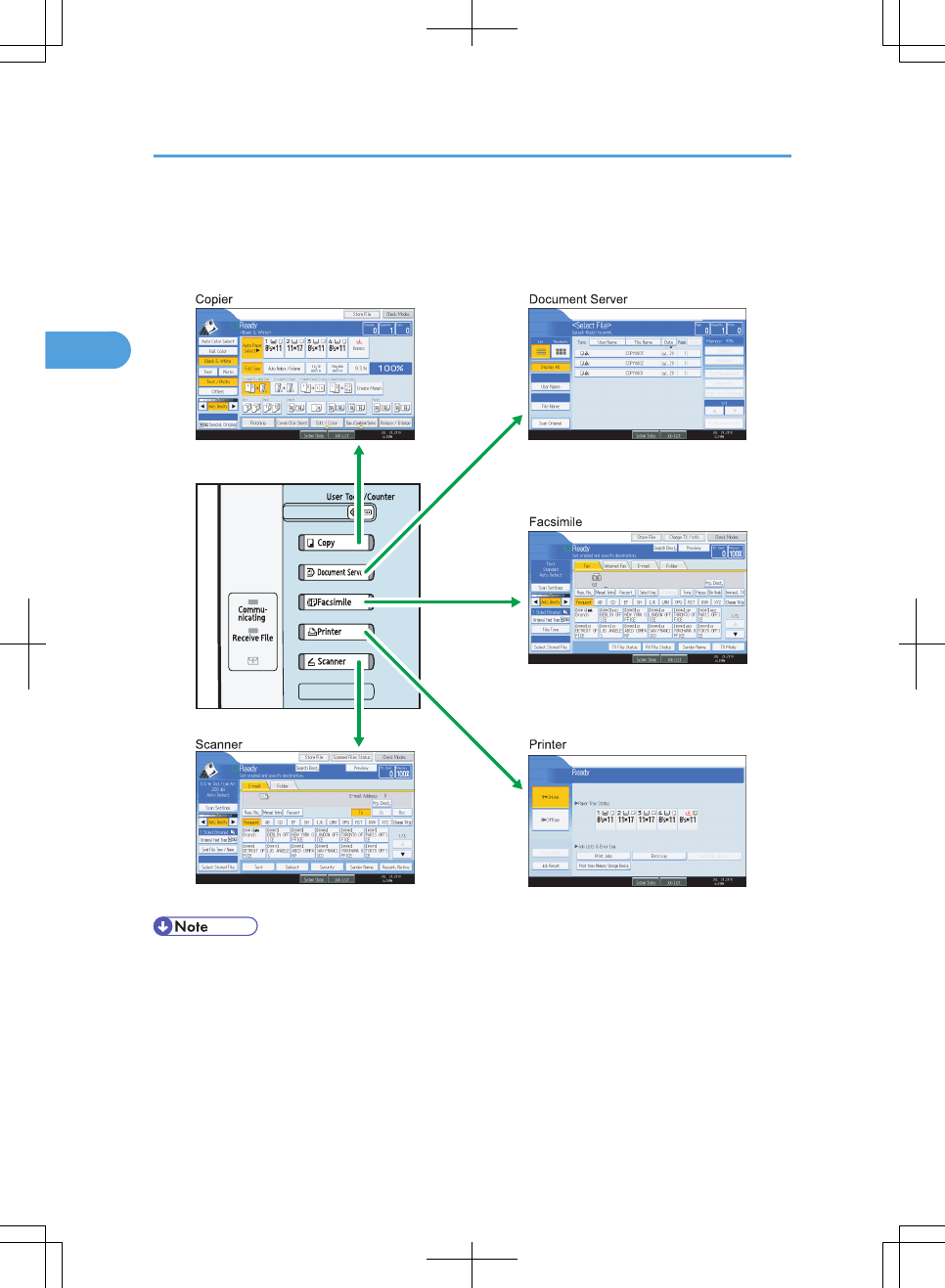
Changing Modes
This section explains how to change modes.
CAS101
• You cannot switch modes in any of the following situations:
• When scanning a fax message for transmission
• During immediate transmission
• When accessing User Tools / Counter / Inquiry
• During interrupt copying
• During On-hook dialling for fax transmission
2. Getting Started
78
2
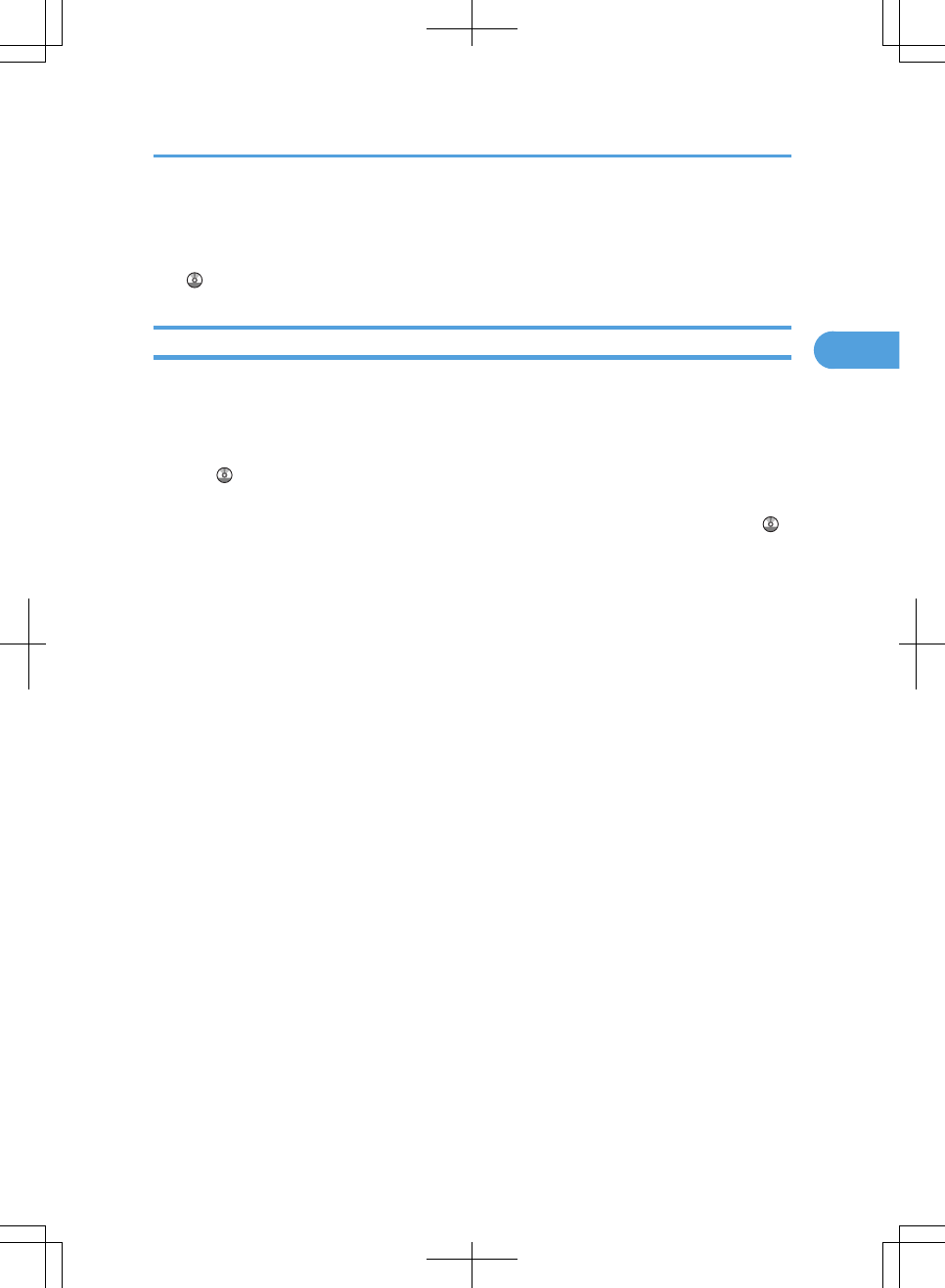
• While scanning an original
• The copy display is set as the default screen when the machine is turned on. You can change this
default setting under Function Priority. See “System Settings”, Network and System Settings Reference
.
System Reset
This section explains System Reset.
After finishing a job, the machine waits a specified length of time and then restores its settings to the default
values specified under Function Priority. This function is called “System Reset”. For the procedure for
specifying default settings under Function Priority, see “System Settings”, Network and System Settings
Reference .
To change the length of time that the machine waits before restoring its settings to their default values, use
the System Auto Reset Timer setting. See “System Settings”, Network and System Settings Reference .
Changing Modes
79
2
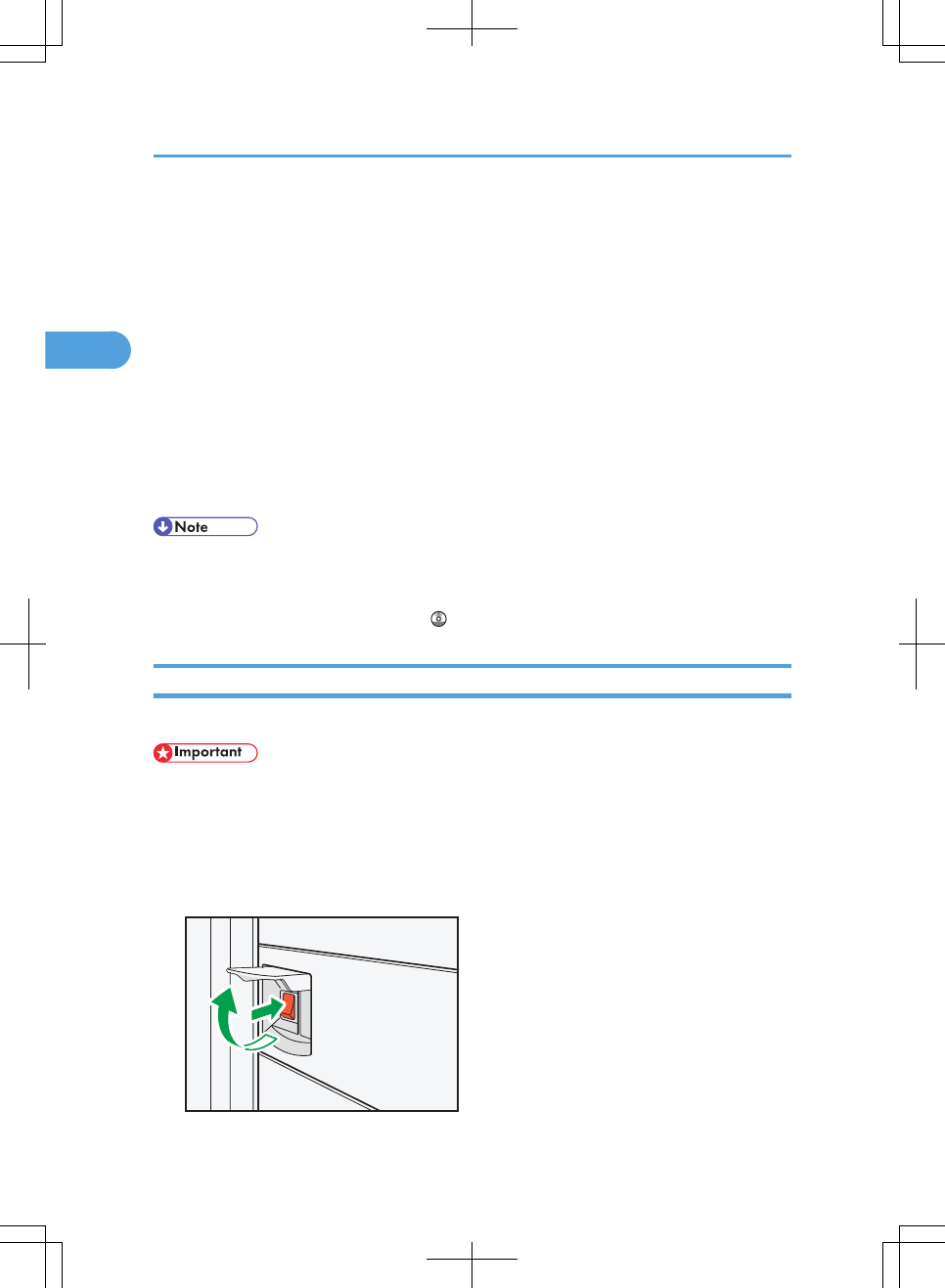
Turning On/Off the Power
This section discusses how to turn on/off the power.
Power supply
This machine has two power switches: operation switch and main power switch.
• Operation switch (right side of the control panel)
Press to activate the machine. When the machine has finished warming up, you can make use
of each function.
• Main power switch (left side of the machine)
Turning off this switch makes the main power indicator on the right side of the control panel go
off. When this is done, machine power is completely off. When the fax unit (optional) is installed,
fax files in memory may be lost if you turn this switch off. Use this switch only when necessary.
• This machine automatically enters Energy Saver mode or turns itself off if you do not use it for a while.
To specify the time that the machine waits before it enters Energy Saver mode and/or turns itself off,
configure the Energy Saver Timer and/or Auto Off Timer setting, respectively. See “System Settings”,
Network and System Settings Reference .
Turning On the Main Power
This section explains how to turn on the main power.
• Do not turn off the main power switch immediately after turning it on. Doing so may result in damage
to the hard disk or memory, leading to malfunctions.
1. Make sure the power cord is firmly plugged into the wall outlet.
2. Open the main power switch cover, and turn on the main power switch.
The main power indicator goes on.
CAS040
2. Getting Started
80
2
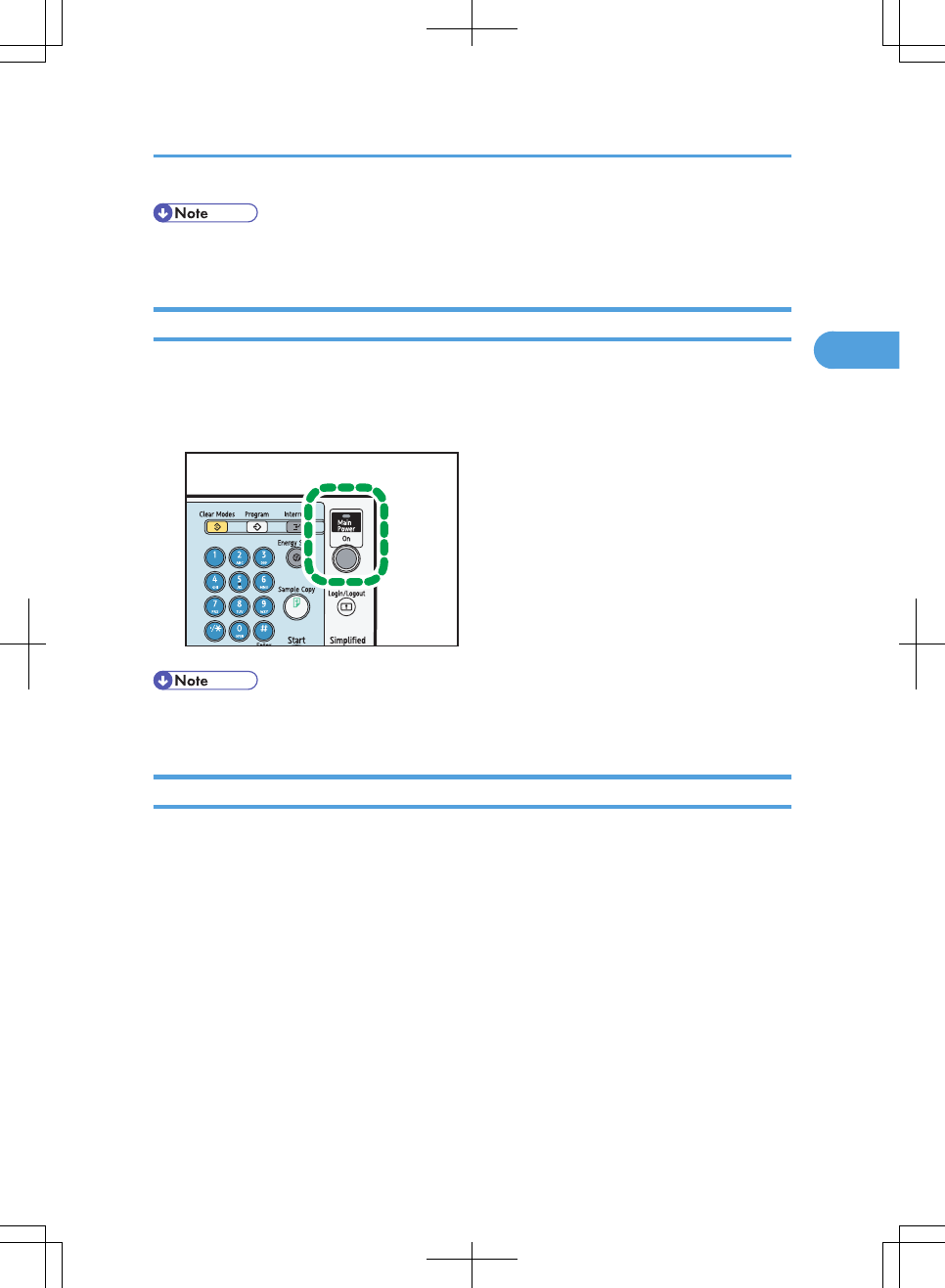
• After you switch the main power on, a screen may appear to indicate that the machine is initializing.
Do not switch the power off during this process. Initialization takes about three minutes.
Turning On the Power
This section explains how to turn on the power.
1. Press the operation switch.
The operation switch indicator goes on.
CAS096
• If the power does not come on when the operation switch is pressed, check the main power switch is
on. If it is off, turn it on.
Turning Off the Power
This section explains how to turn off the power.
1. Make sure the ADF is in the right position.
2. Press the operation switch.
The operation switch indicator goes off.
Turning On/Off the Power
81
2
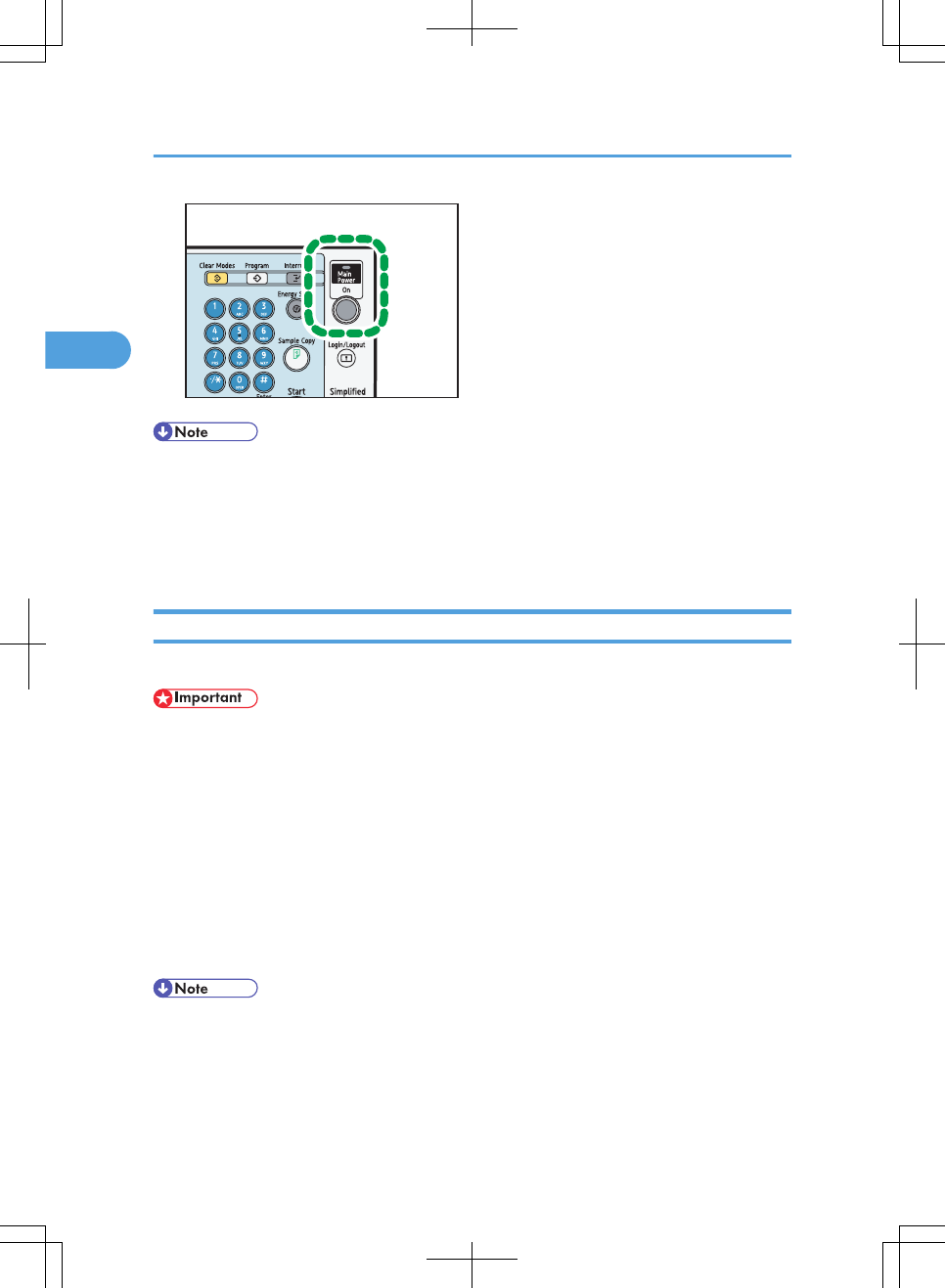
CAS096
• Even if you press the operation switch, the operation switch indicator does not go out, but blinks in
the following cases:
• During communication with external equipment.
• When the hard disk is active.
• When the internal cooling fan is active.
Turning Off the Main Power
This section explains how to turn off the main power.
• Do not turn off the main power switch when the operation switch indicator is lit or blinking. Doing so
may result in damage to the hard disk or memory.
• Make sure to turn off the main power switch before pulling out the power plug. Not doing so may
result in damage to the hard disk or memory, leading to malfunctions.
• After turning the machine's power off, wait at least a few seconds before turning it back on. If the
message “Turn main Power Switch off” appears, turn the machine's power off, wait three seconds or
more, and then turn it back on again. Never turn the power back on immediately after turning it off.
1. Make sure the operation switch indicator is not lit.
2. Open the main power switch cover, and then turn off the main power switch.
The main power indicator goes out.
• When the main power switch is turned off while using the fax function, waiting fax and print jobs may
be cancelled, and incoming fax documents not received. If you have to turn off this switch for some
reason, make sure 100% is shown as available memory on the screen before turning off the main
power switch or unplugging the power cord. Fax files in memory are deleted an hour after you turn
off the main power switch or unplug the power cord.
2. Getting Started
82
2
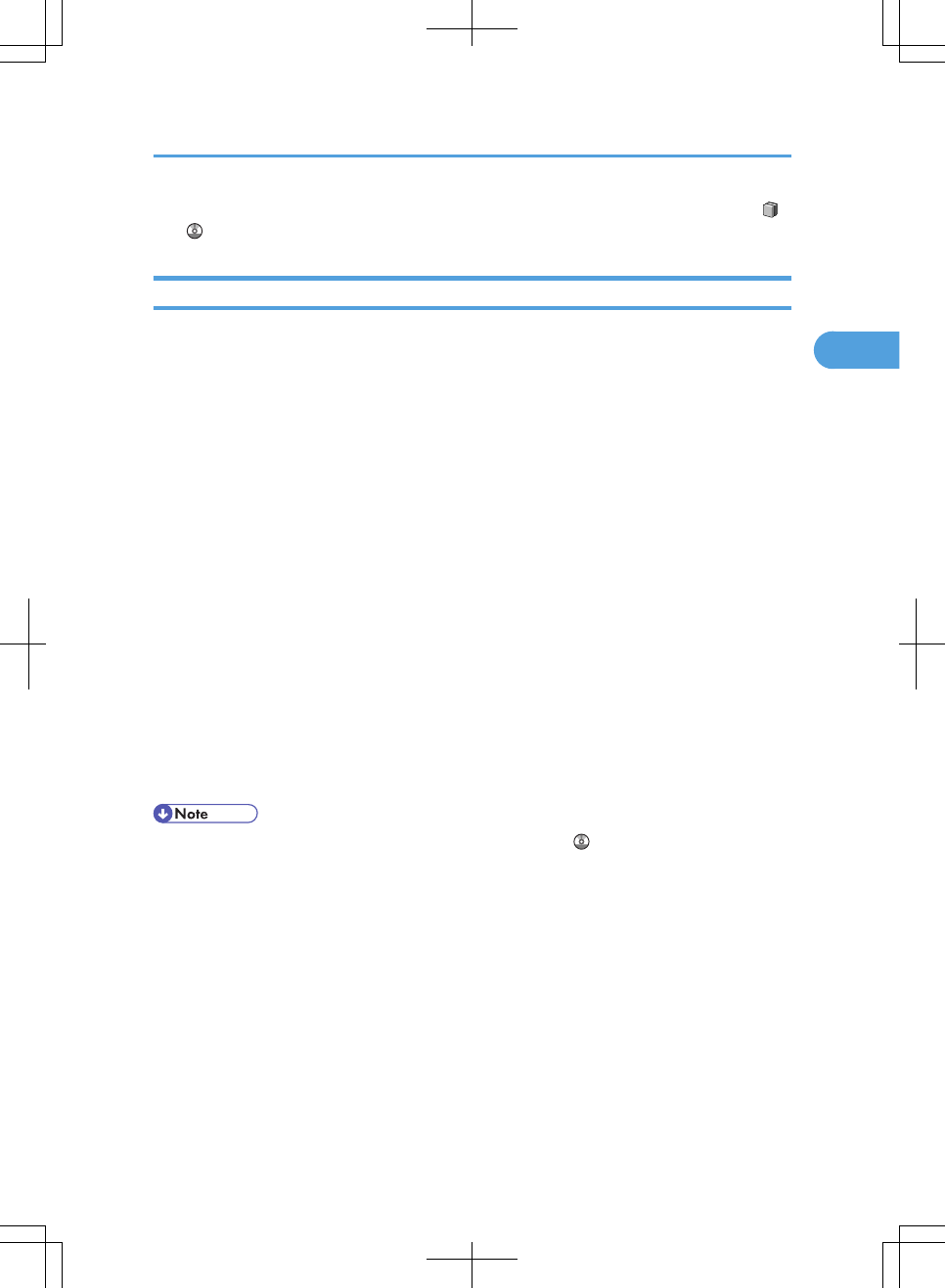
• For details, see “Turning Off the Main Power / In the Event of Power Failure”, Troubleshooting
.
Saving Energy
This section explains the machine's energy saving functions.
This machine has the following energy saving functions.
Energy Saver
If you do not use the machine for a certain period after an operation, or when you press the [Energy
Saver] key, the display disappears and the machine goes into Energy Saver mode. When you press
the [Energy Saver] key again, the machine returns to the ready condition. The machine uses less
electricity in Energy Saver mode.
You can change the amount of time the machine waits before switching to Energy Saver mode after
copying has finished or the last operation is performed under Panel Off Timer.
Low power mode
If you do not use the machine for a certain period, it automatically lowers its power consumption.
When you press the [Energy Saver] key, the machine returns to ready condition.
You can change the amount of time the machine waits before switching to the Low power mode under
Energy Saver Timer.
Auto Off
If the machine remains inactive for a specified period, it automatically enters the same low power
state that it enters when the operation switch is pressed (indicator unlit). This function is called “Auto
Off”.
You can change the Auto Off time under Auto Off Timer.
• See “System Settings”, Network and System Settings Reference .
• The Energy Saver, Low power mode, and Auto Off functions will not operate in the following cases:
• When a warning message appears
• When the service call message appears
• When paper is jammed
• When the cover is open
• When the "Add Toner" message appears
• When toner is being replenished
• When the User Tools / Counter / Inquiry screen is displayed
• When fixed warm-up is in progress
Turning On/Off the Power
83
2
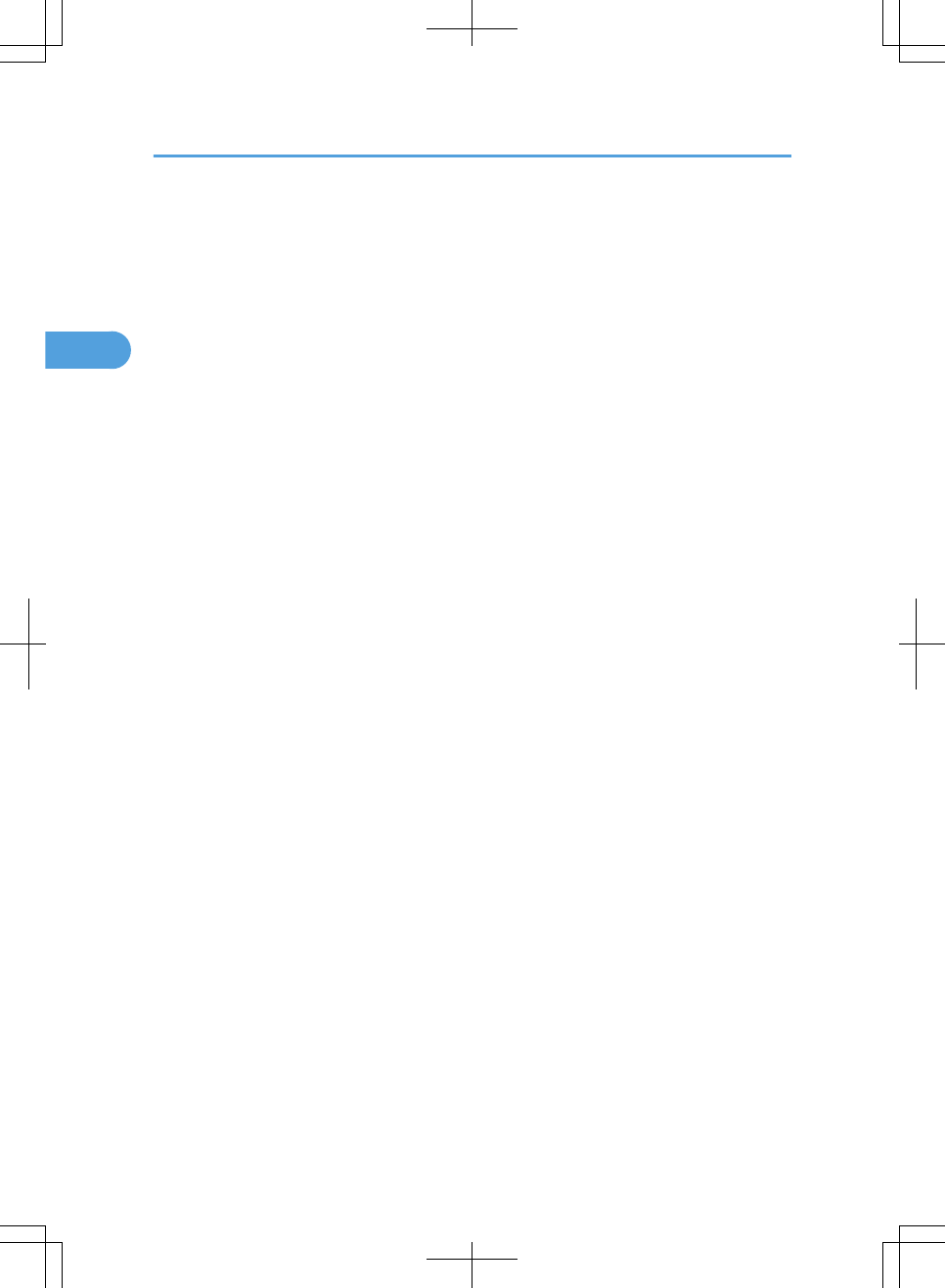
• When data is being processed
• When operations are suspended during printing
• When the On-hook dialing function is in use
• When the handset is in use
• When a recipient is being registered in the address list or group dial list
• When the Data In indicator is on or blinking
• When the screen of a document that was stored under the printer function appears. (The machine
enters Energy Saver mode and Low power mode if this happens.)
• When the sample print, locked print, hold print, or stored print screen is displayed
• When the internal cooling fan is active
2. Getting Started
84
2
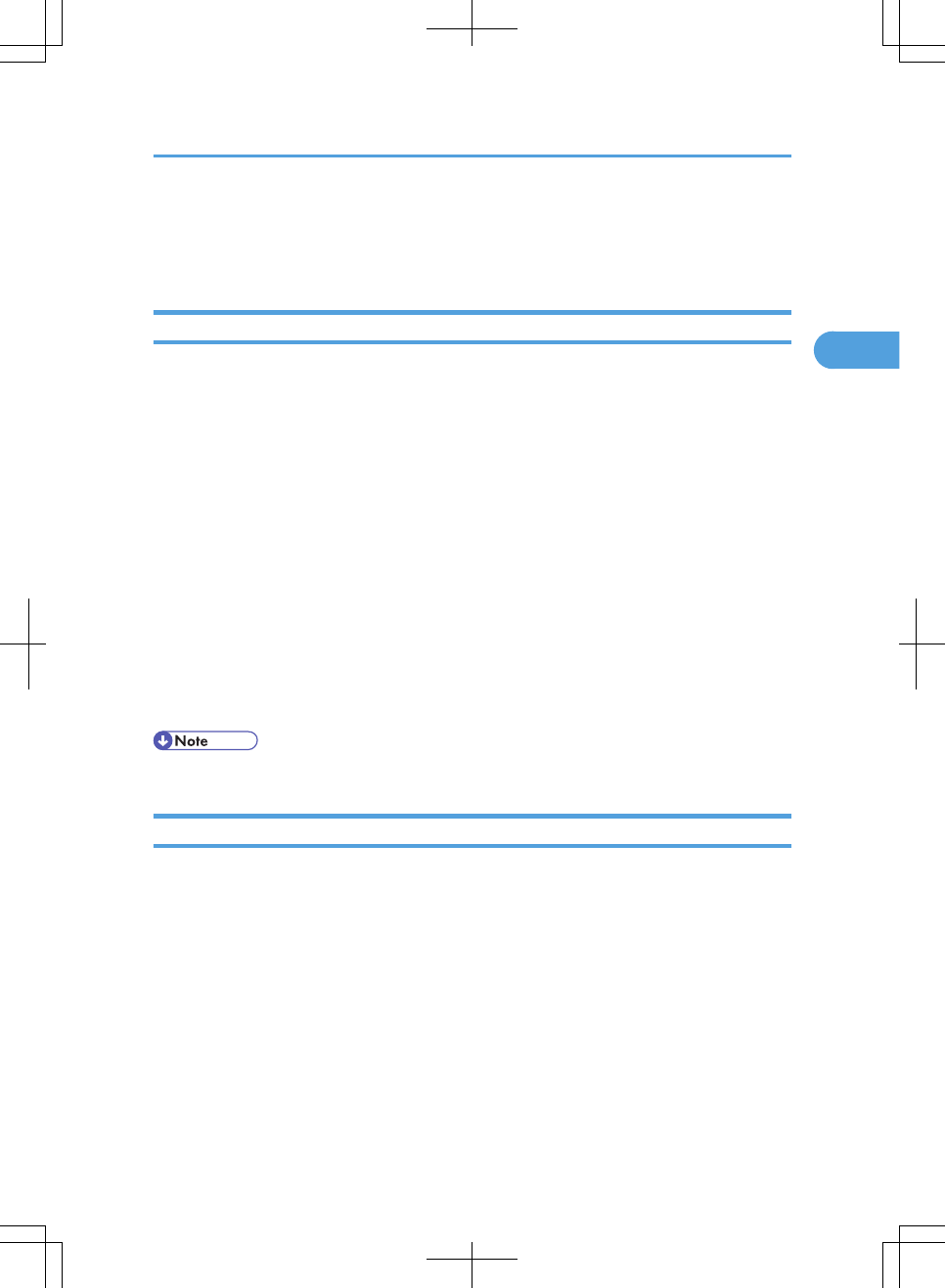
Downloading Utility Software
This section explains the utility software for this machine.
SmartDeviceMonitor for Admin
This section describes the functions available with SmartDeviceMonitor for Admin.
SmartDeviceMonitor for Admin is an application that monitors network printers. It can monitor multiple
network printers using IP address. We recommend that network administrators use this application.
SmartDeviceMonitor for Admin has the following functions:
• Group management for the machines
• Monitoring the machines
• Operation restriction
• Managing the Address Book
• Per-user counters
• User restriction
SmartDeviceMonitor for Admin with full functionality can be purchased from your local dealer. Contact
your local dealer for information on purchasing the software.
SmartDeviceMonitor for Admin with limited functionality is available as a free download. Contact your
local dealer for information on downloading the software.
• For details about the functionality, see the manual for SmartDeviceMonitor for Admin.
DeskTopBinder
This section describes the functions available with DeskTopBinder.
DeskTopBinder is to be installed on the client computers for integration and management of various kinds
of files such as scan files, files created with applications, and existing scan files. This software allows you
to use various functions for stored scan files such as viewing stored files. Also, with the ScanRouter delivery
software*1, you can view the files stored in in-trays of the delivery server, or use other functions for stored
files.
DeskTopBinder Professional provides the full functionality of the software. Contact your local dealer for
information on purchasing the software.
DeskTopBinder Lite with limited functionality is available as a free download. Contact your local dealer
for information on downloading the software.
*1 For details to purchase ScanRouter delivery software, contact your local dealer.
Downloading Utility Software
85
2
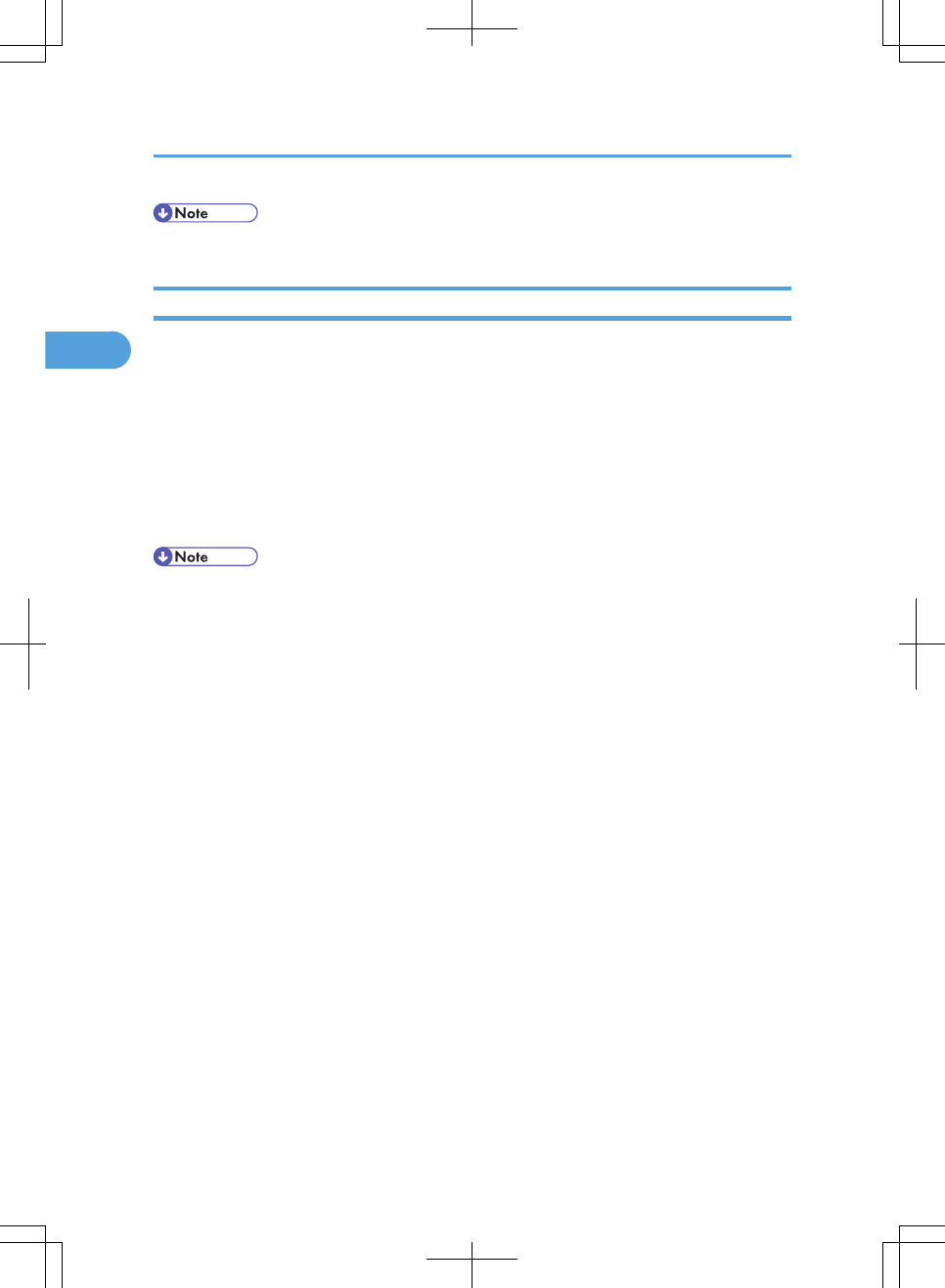
• For details about the functionality, see Help of DeskTopBinder.
SmartDeviceMonitor for Client
This section describes the functions available with SmartDeviceMonitor for Client.
SmartDeviceMonitor for Client allows you to manage and print various data such as files created with an
application, images scanned with a scanner, and existing images as one document.
SmartDeviceMonitor for Client has the following functions:
• Checking printer supplies such as paper or toner
• Checking results of print jobs executed from the computer
SmartDeviceMonitor for Client is available as a free download. Contact your local dealer for information
on downloading the software.
• For details about the functionality, see Help of SmartDeviceMonitor for Client.
2. Getting Started
86
2
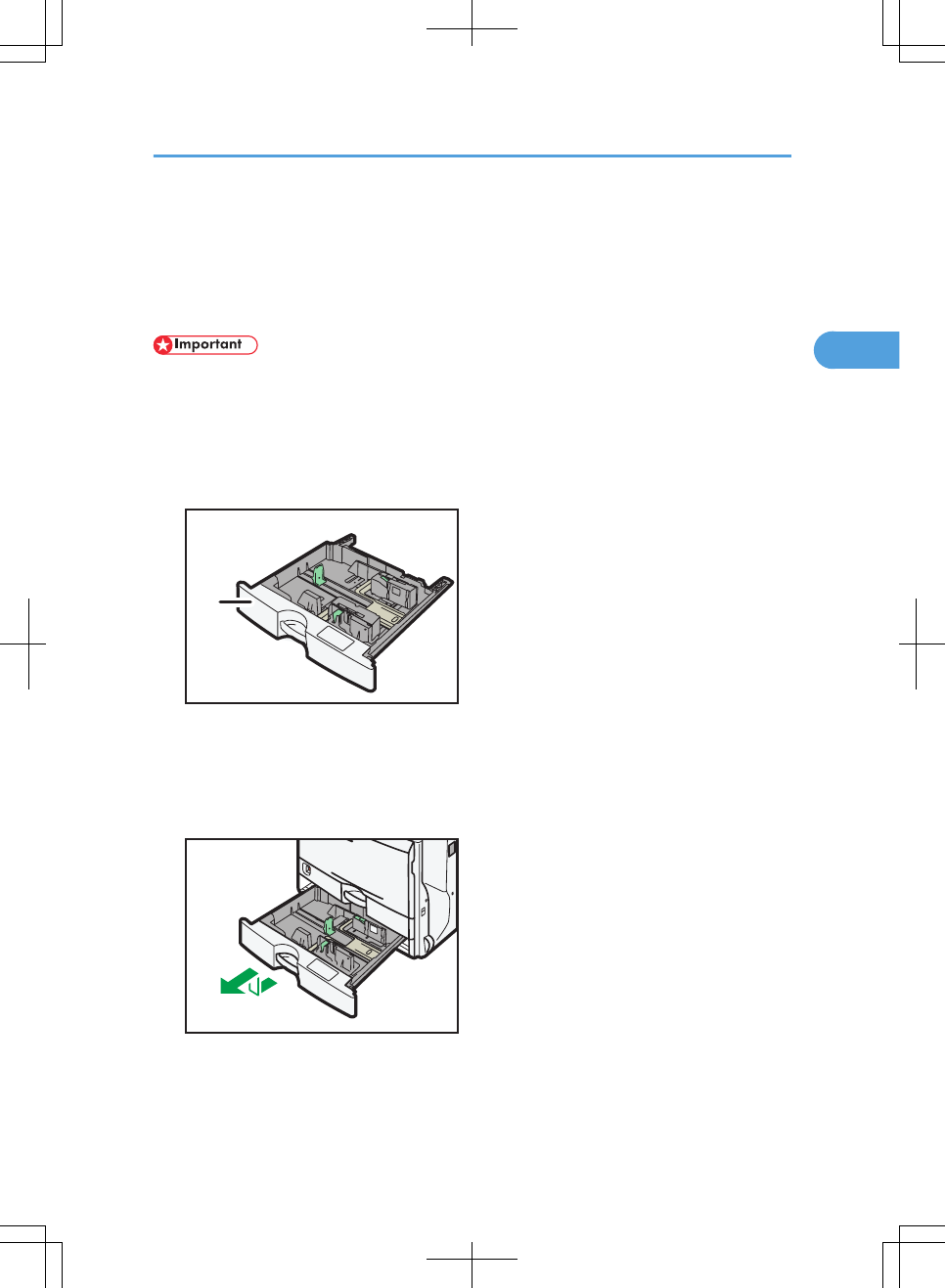
Installing the Small Size Paper Tray
This section describes how to install the small size paper tray.
To use the small size paper tray, install it in tray 2 or the lower paper trays. In the following example
procedure, the small size paper tray is installed in tray 2.
• The small size paper tray cannot detect paper size automatically. Specify the paper size on the control
panel. For details, see “Changing to a Size That Is Not Automatically Detected”.
For users of type 1 and 2
The small size paper tray cannot be installed in the lower paper tray.
1. Check the contents of the package.
CAS046
1
1. Small size paper tray
2. Remove the packaging from the small size paper tray.
3. Carefully pull out tray 2 until it stops, then slightly raise the front of the tray, and then pull
it out completely.
CAS047
Store the paper tray in a safe place.
Installing the Small Size Paper Tray
87
2
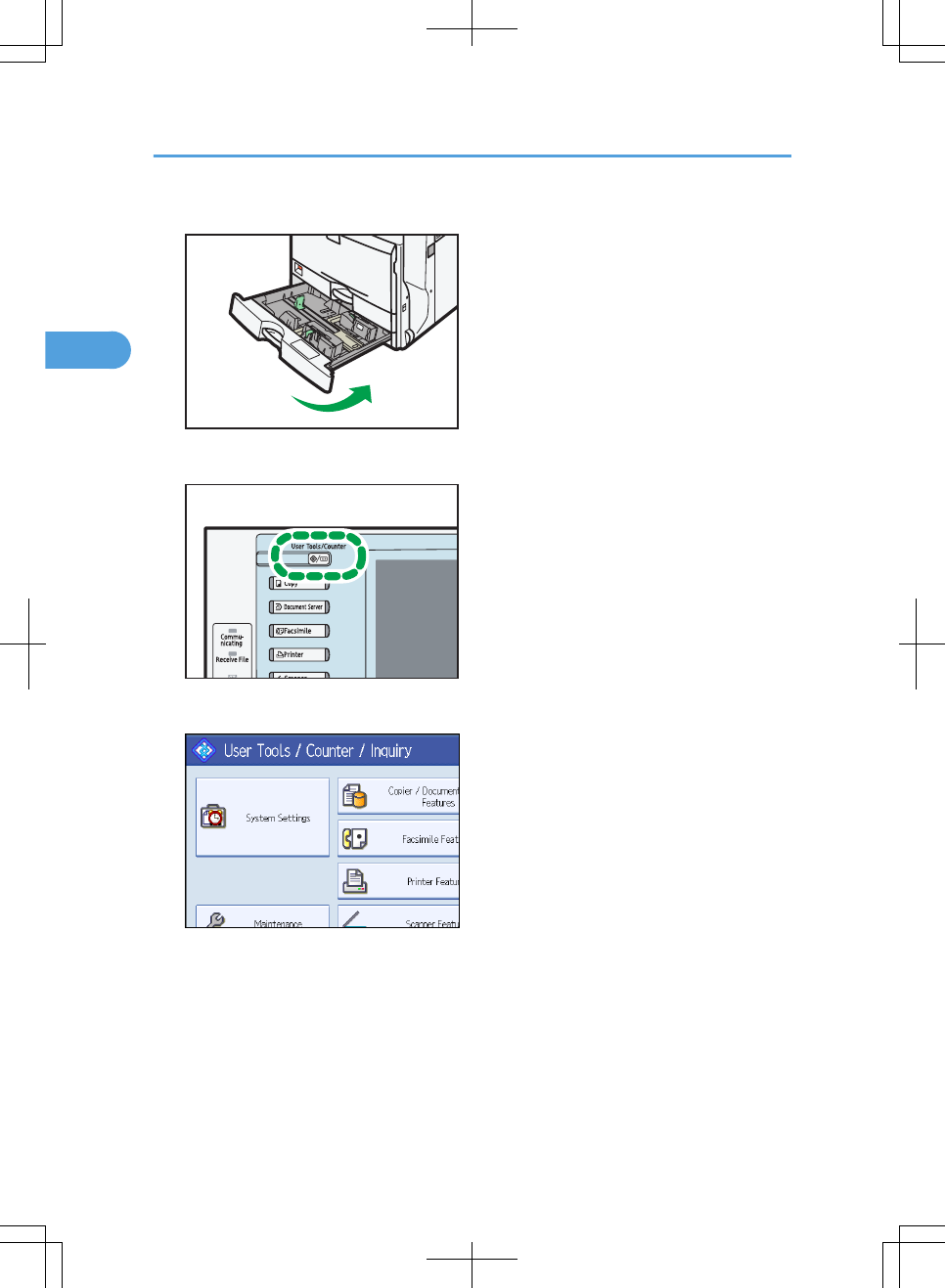
4. Lift the front of the small size paper tray, and then carefully push it fully in.
CAS048
5. Press the [User Tools/Counter] key.
CAS098
6. Press [System Settings].
7. Check that [General Features] is selected.
2. Getting Started
88
2
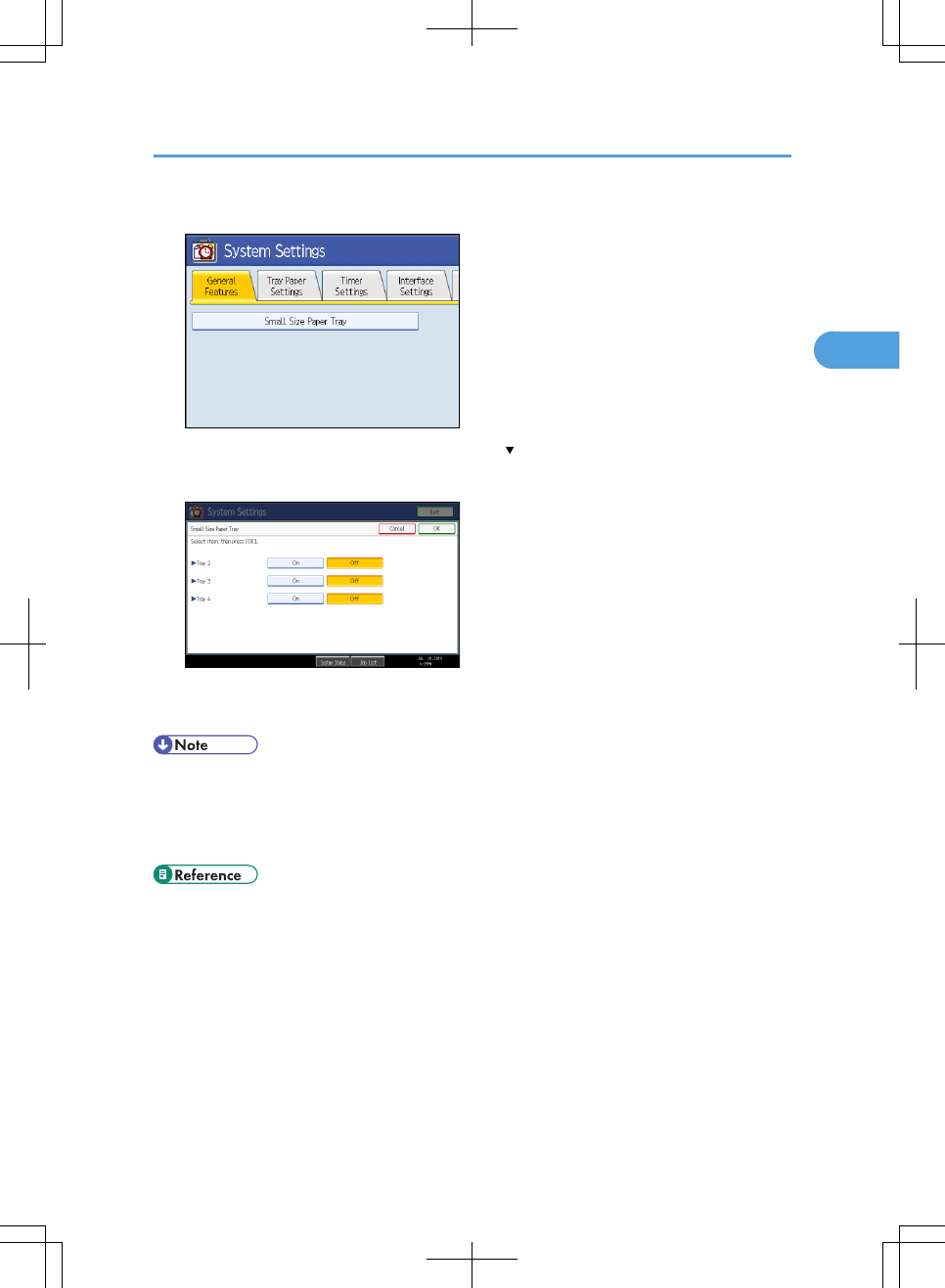
8. Press [Small Size Paper Tray].
If the setting to be specified does not appear, press [ Next] to scroll down to other settings.
9. Press [On] for Tray 2.
10. Press [OK].
11. Turn off the machine, and then turn it back on.
• If the small size paper tray is not installed correctly, repeat the installation procedure from the
beginning. If the installation is still not correct, contact your service representative.
• In printer mode, configure the settings for the options that are installed on the machine. For details,
see the printer driver Help.
• p.106 "Changing to a Size That Is Not Automatically Detected"
Installing the Small Size Paper Tray
89
2
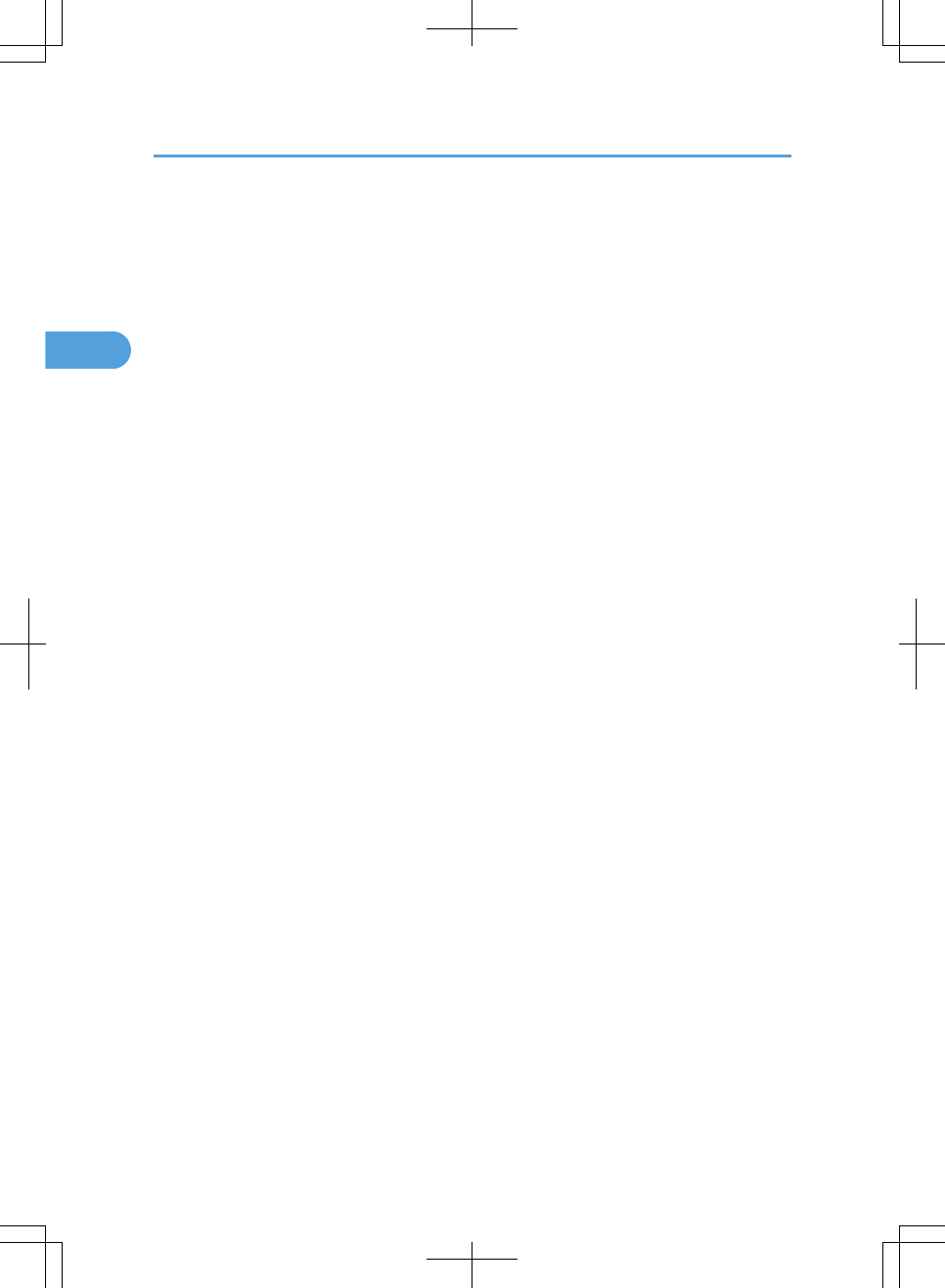
2. Getting Started
90
2
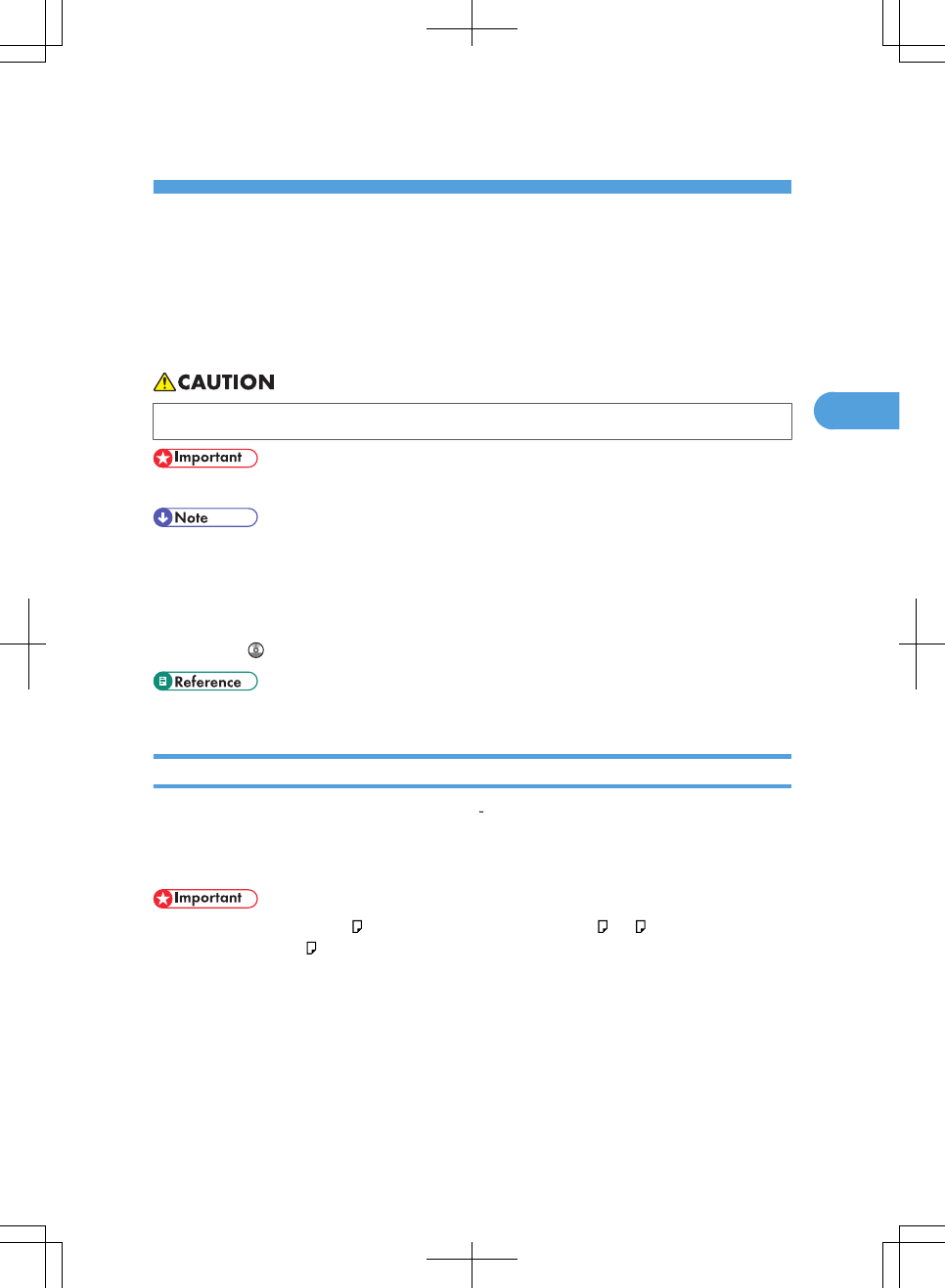
3. Adding Paper
This chapter describes recommended paper sizes and types, and how to load paper into the paper tray.
Loading Paper
This section describes how to load paper into the paper tray.
• When loading paper, take care not to trap or injure your fingers.
• Do not stack paper over the limit mark.
• Fan the paper before loading.
• Straighten curled or warped paper before loading.
• For details about paper sizes and types, see “Recommended Paper Sizes and Types”.
• To load paper in the bypass tray, see “Copying from the Bypass Tray”, Copy and Document Server
Reference .
• p.111 "Recommended Paper Sizes and Types"
Loading Paper into Trays 1 - 4
This section describes how to load paper into trays 1 4.
Every paper tray is loaded in the same way.
In the following example procedure, paper is loaded in tray 2.
• Tray 1 can hold 81/2 × 11 paper only. If you want to print on A4 , A5 , or B5 JIS (Japanese
Industrial Standard) from tray 1, contact your service representative.
• Check the paper edges are aligned at the right side.
91
3
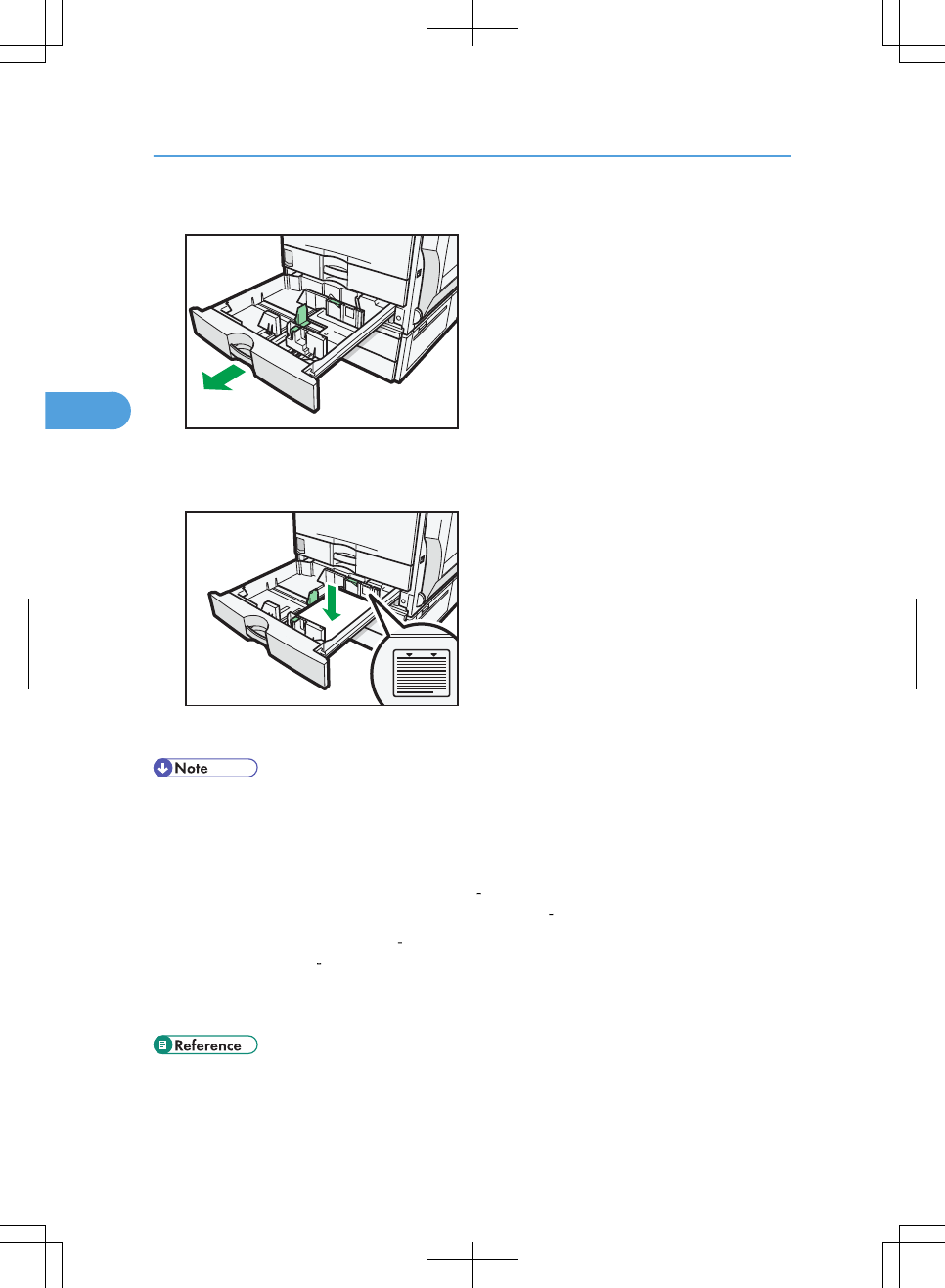
1. Carefully pull out the paper tray until it stops.
CAS041
2. Square the paper and load it print side up.
Do not stack paper over the limit mark.
CAS042
3. Carefully push the paper tray fully in.
• When loading a low number of sheets, be sure not to squeeze the side fences in too tightly. If the
paper bows, it might not feed in properly.
• If a paper tray is pushed vigorously when putting it back into place, the position of the tray's side
fences may slip out of place.
• Various sizes of paper can be loaded in trays 2 4 by adjusting the positions of side fences and end
fence. For details, see “Changing the Paper Size in Trays 2 4”.
• You can load envelopes in trays 2 4. For details about how to load envelopes, see “Changing the
Paper Size in Trays 2 4”. For details about various details about and recommendations concerning
envelopes, see “Envelopes”.
• Each tray can hold up to 550 sheets.
• p.99 "Changing the Paper Size in Trays 2 - 4"
• p.117 "Envelopes"
3. Adding Paper
92
3